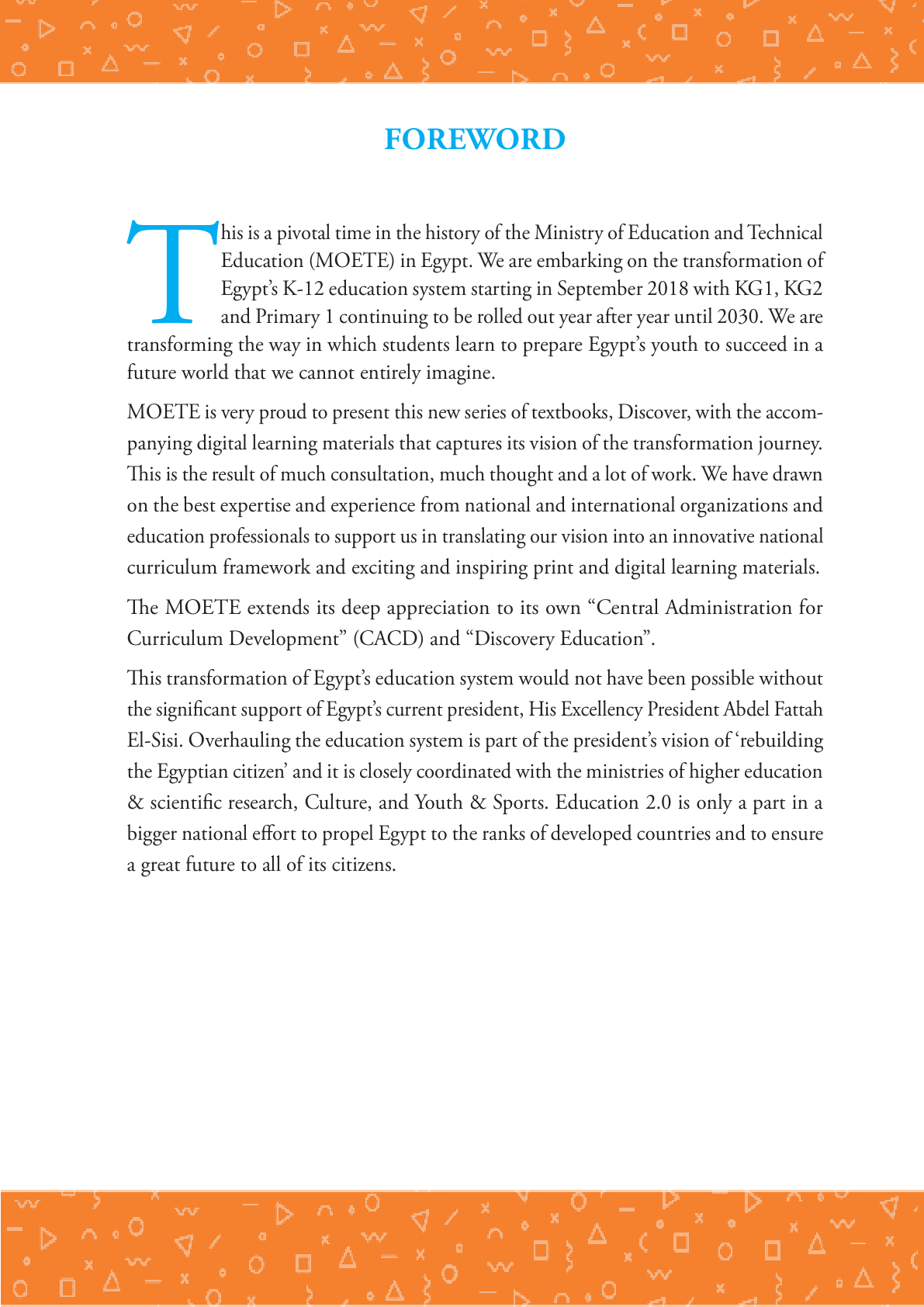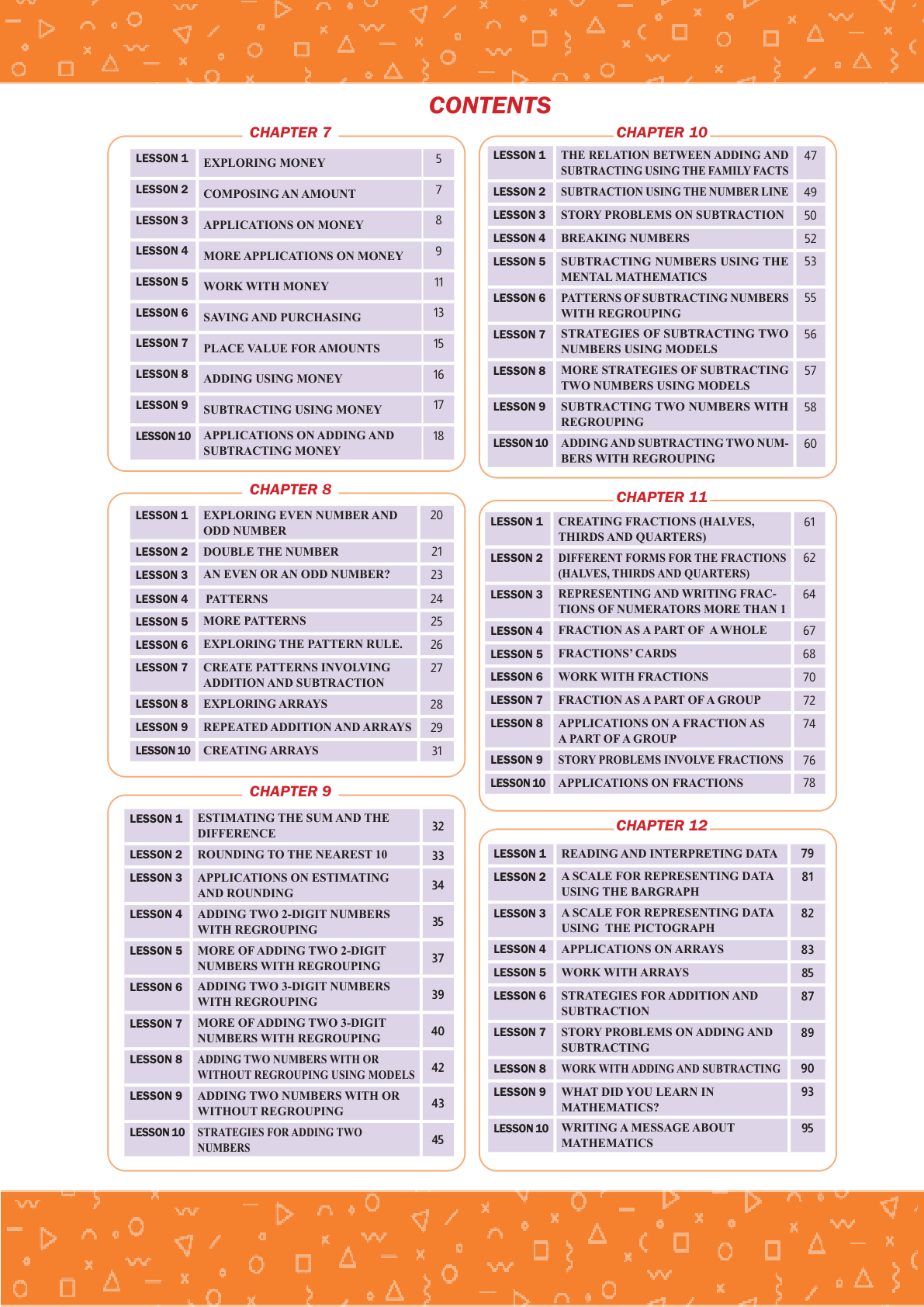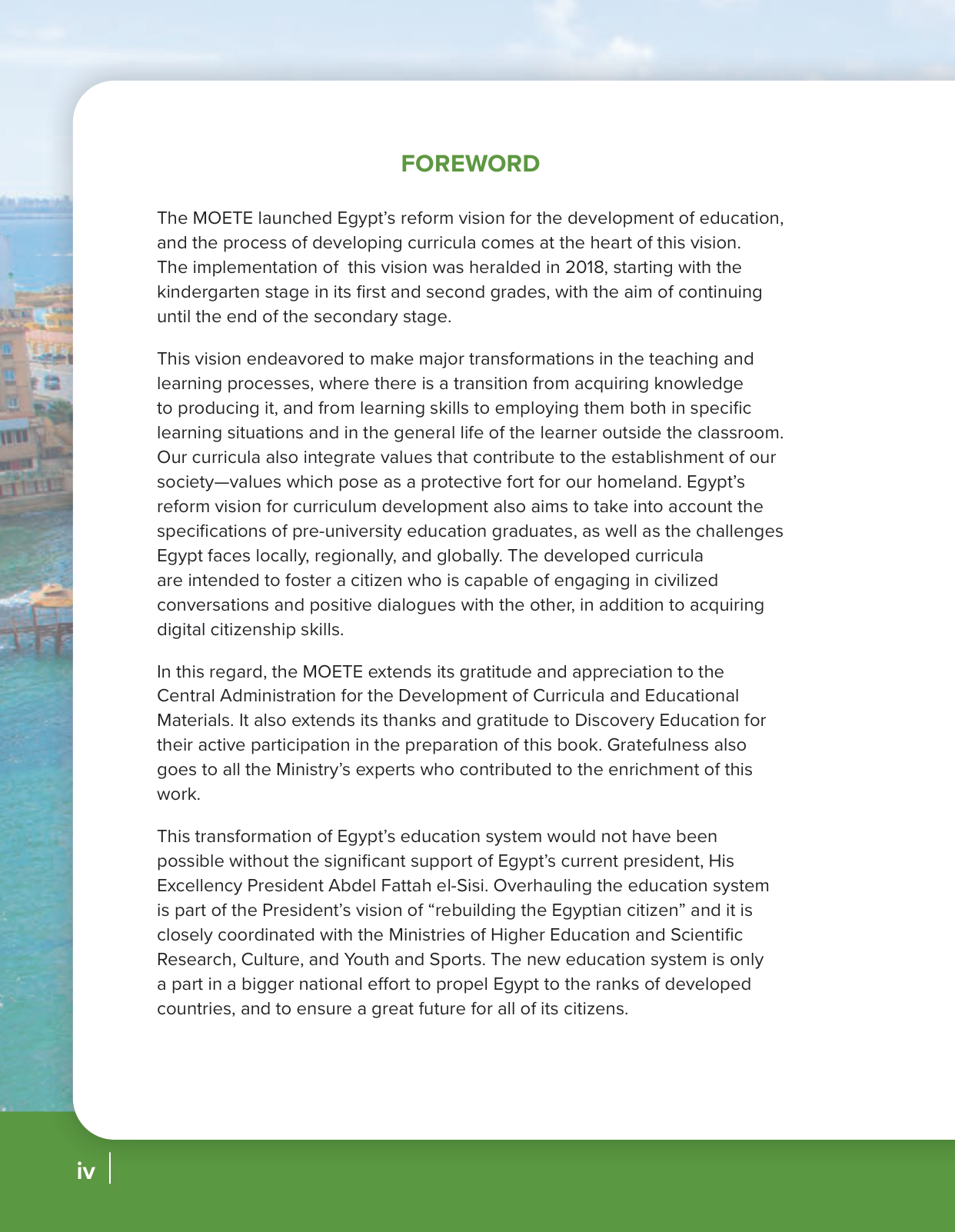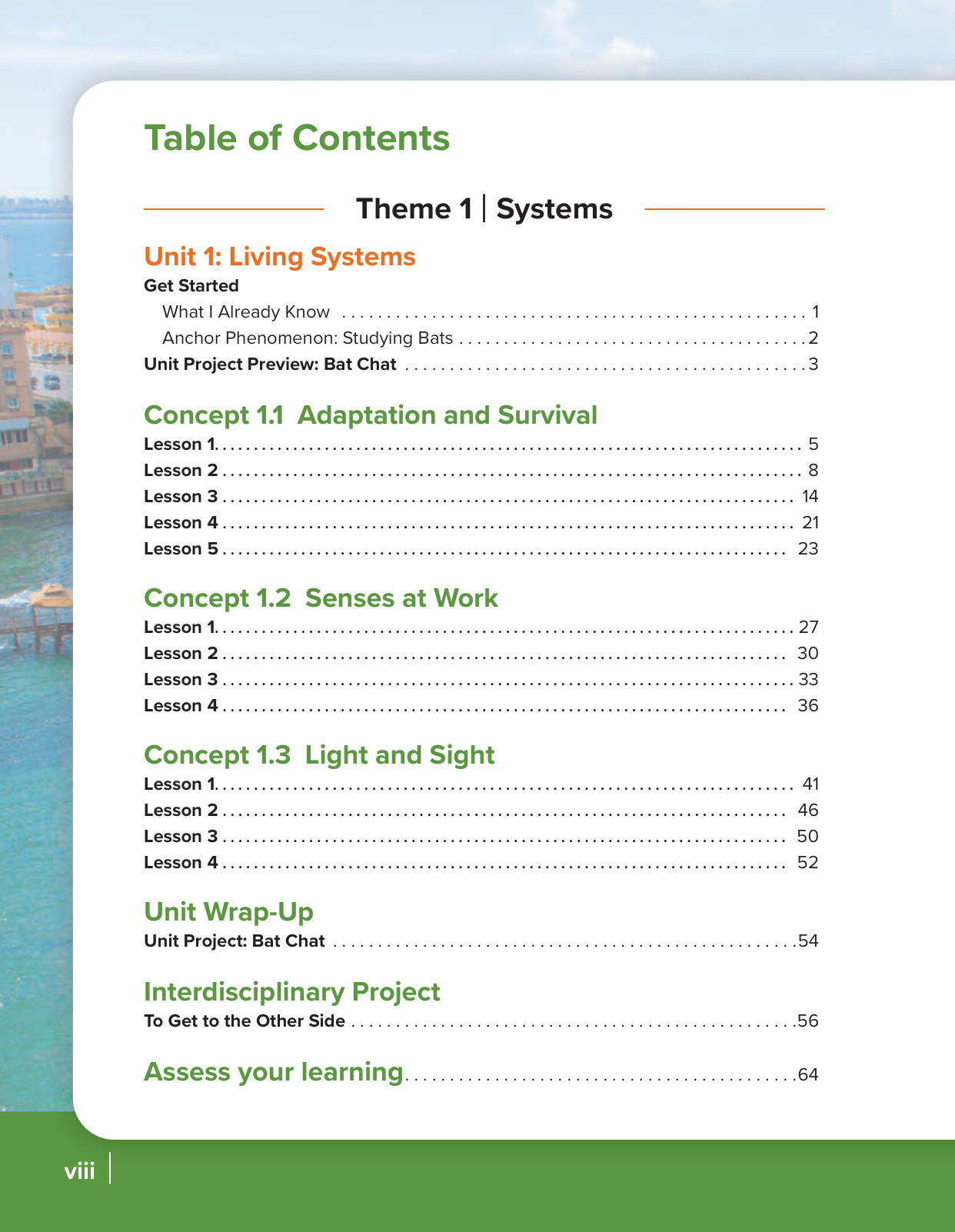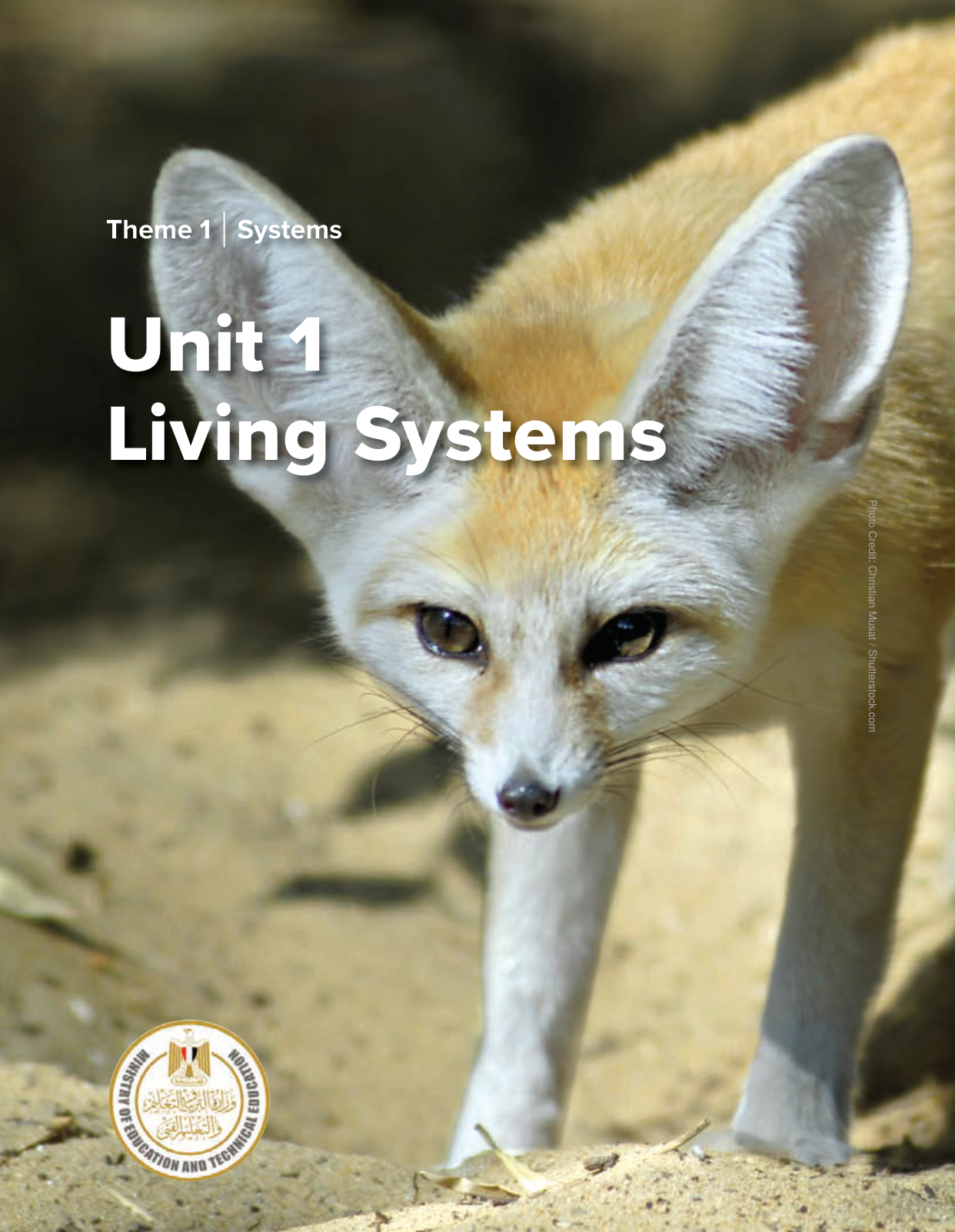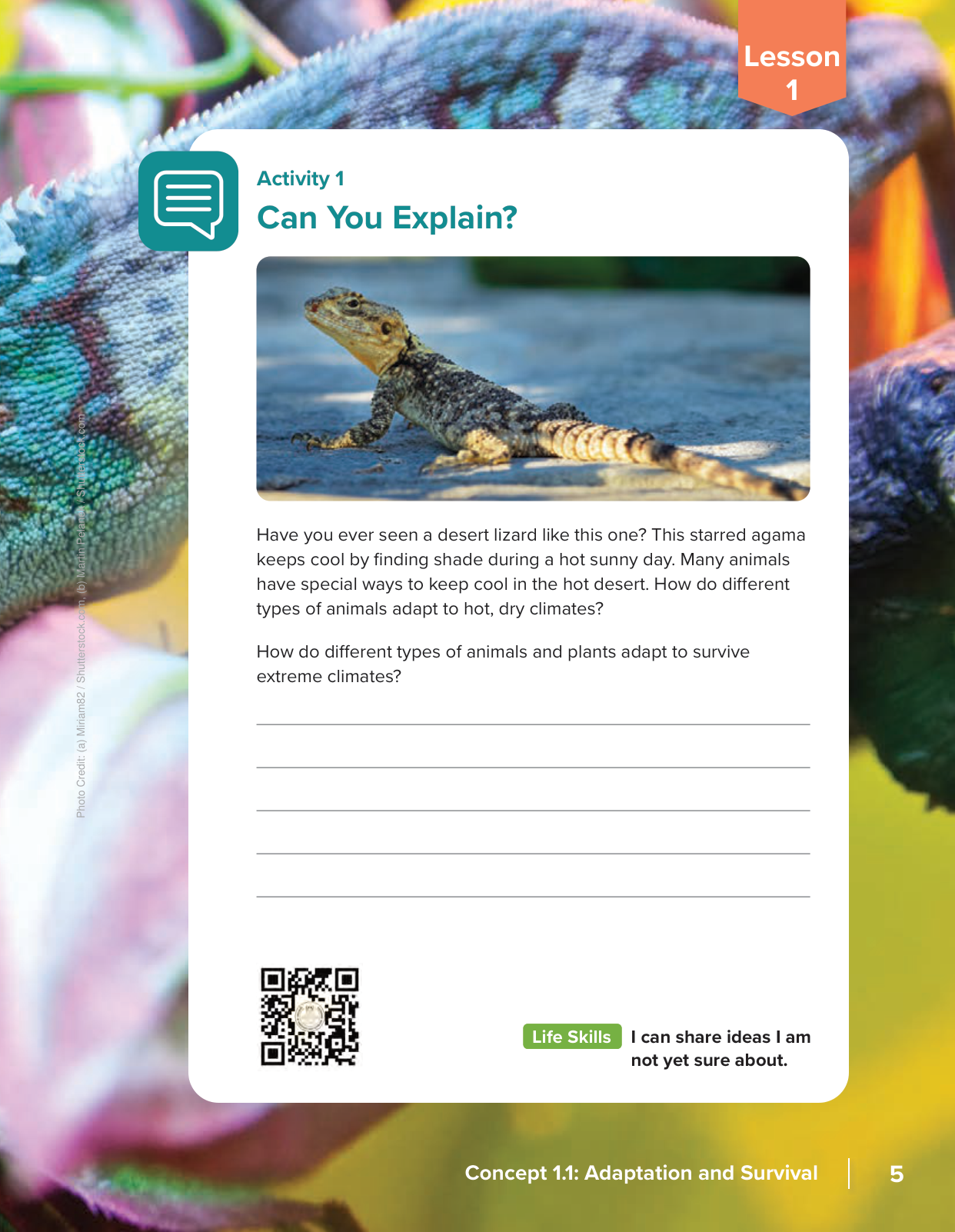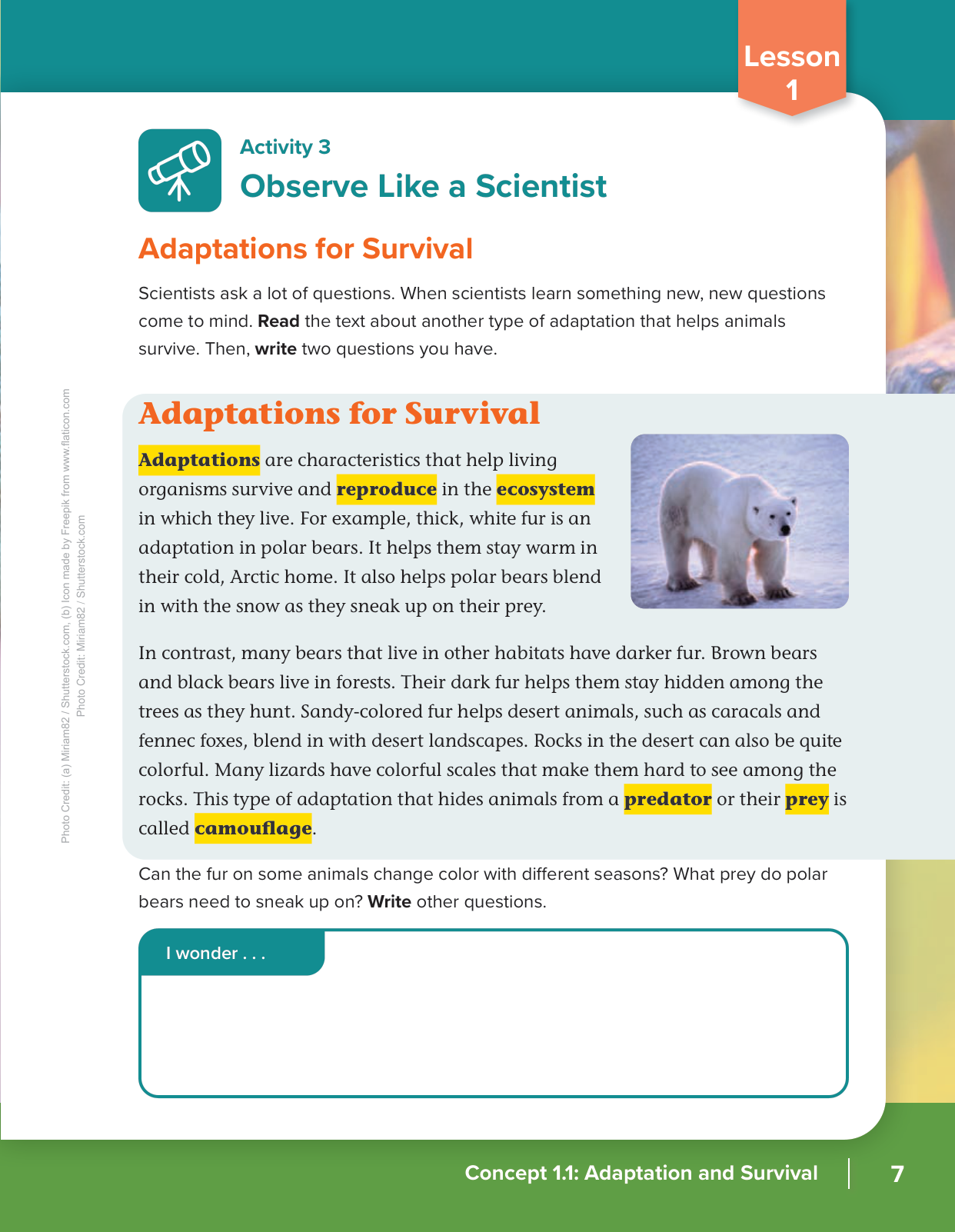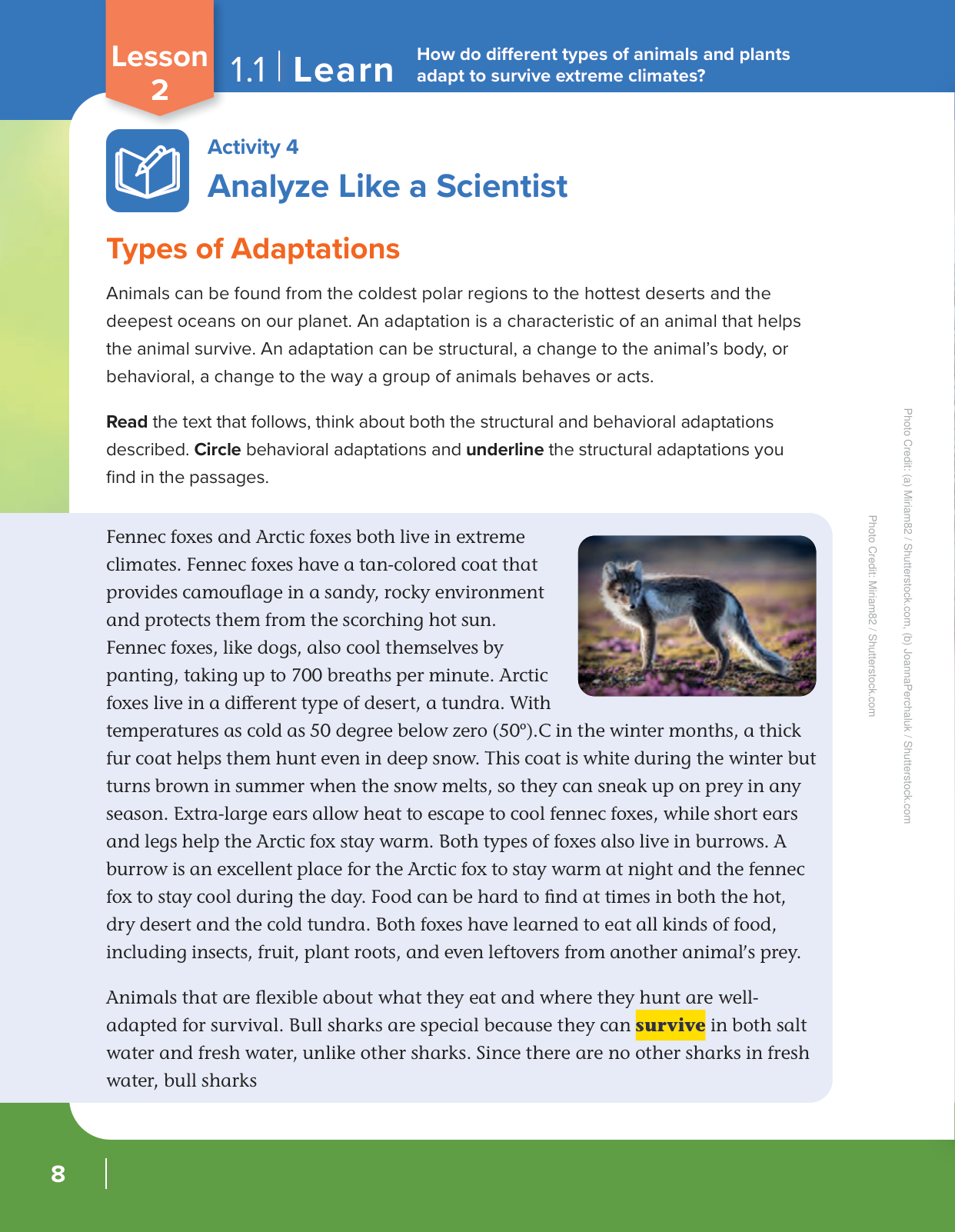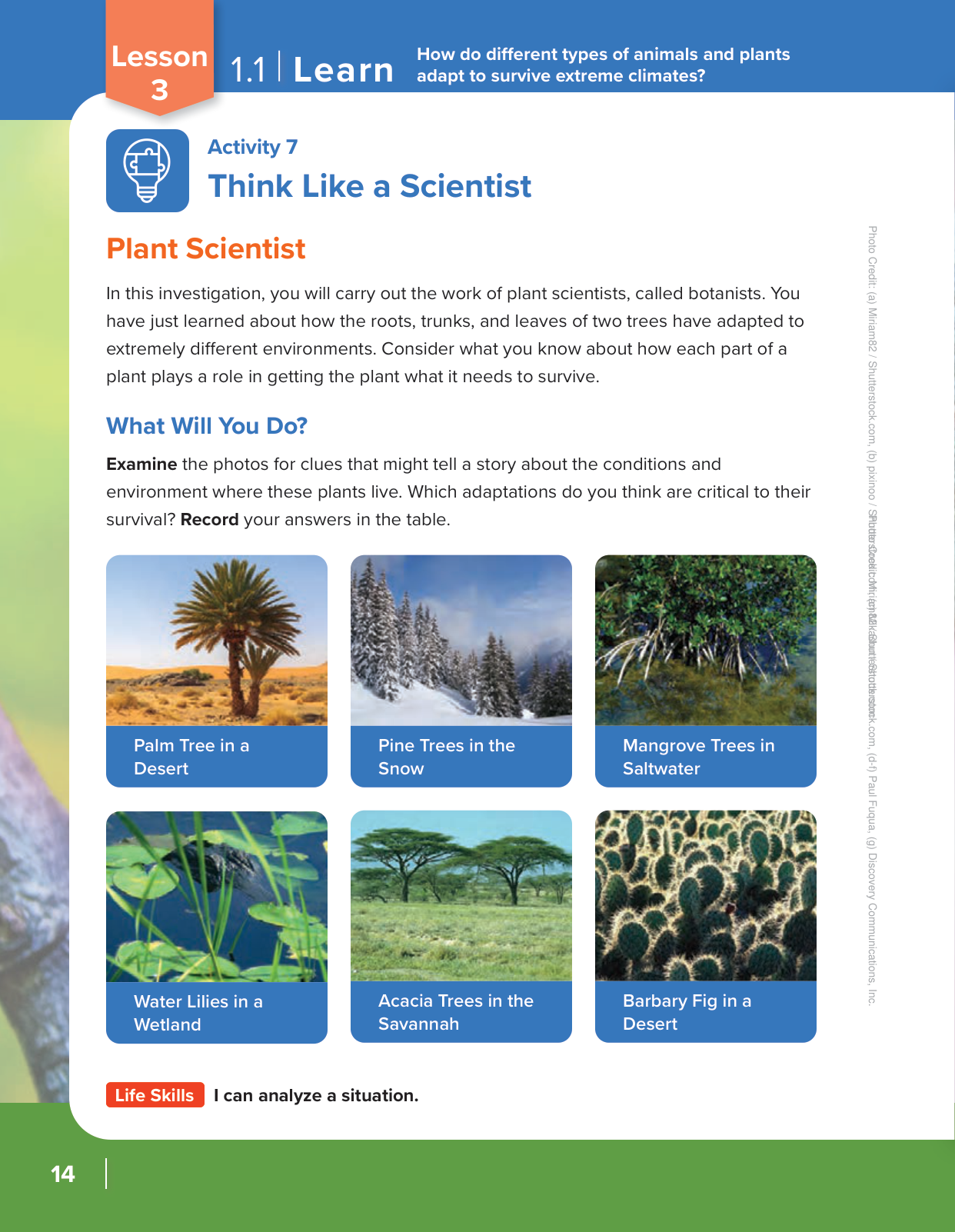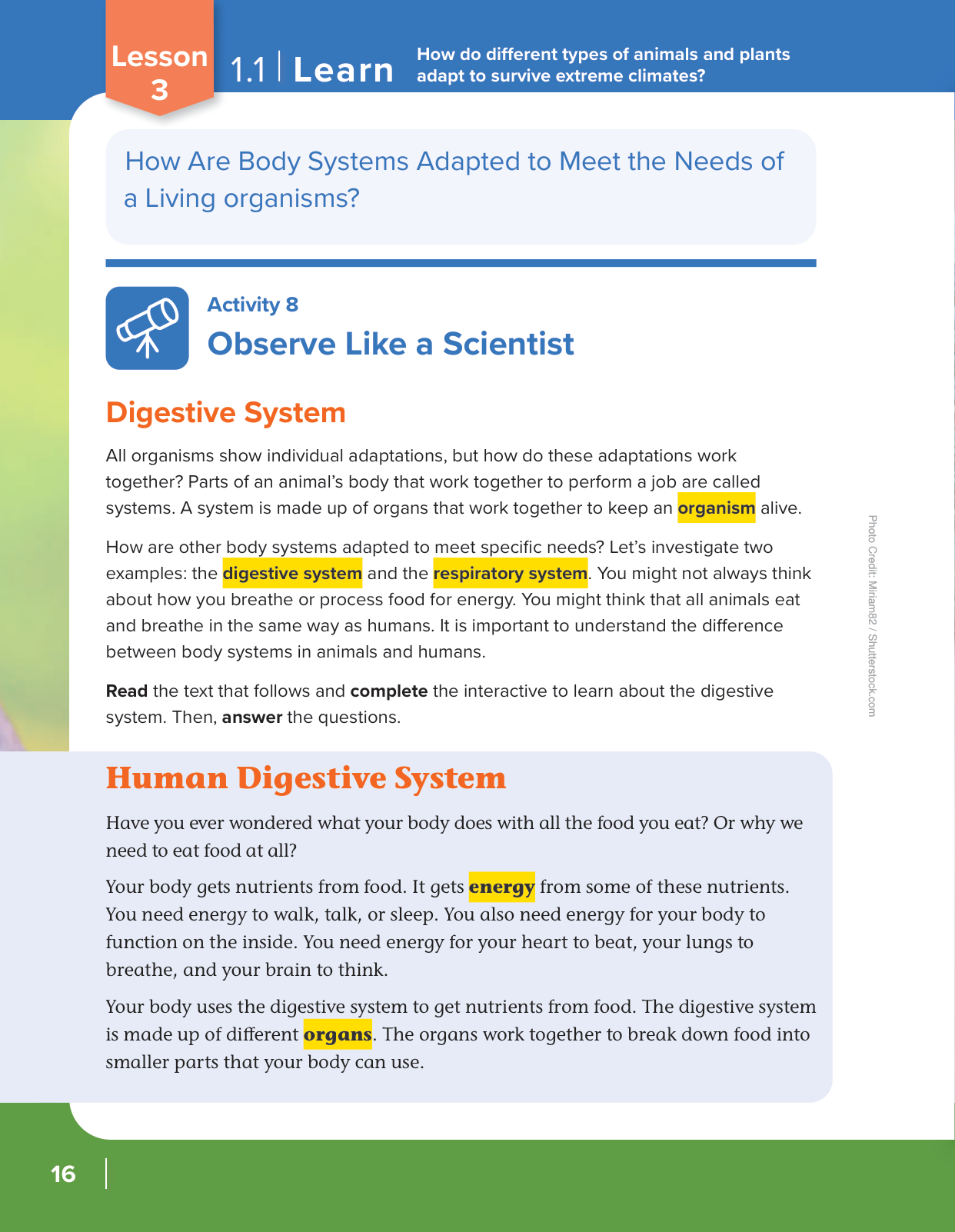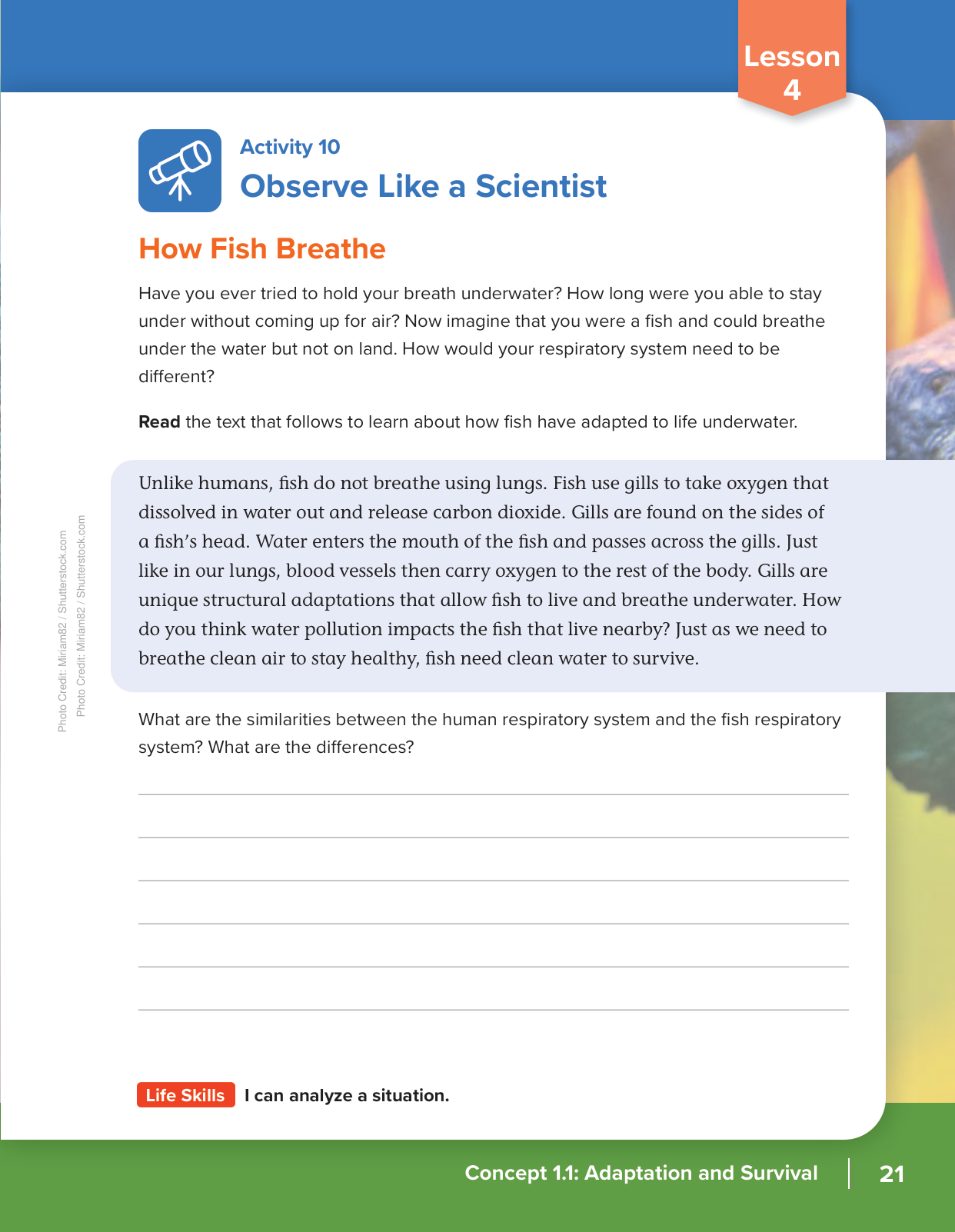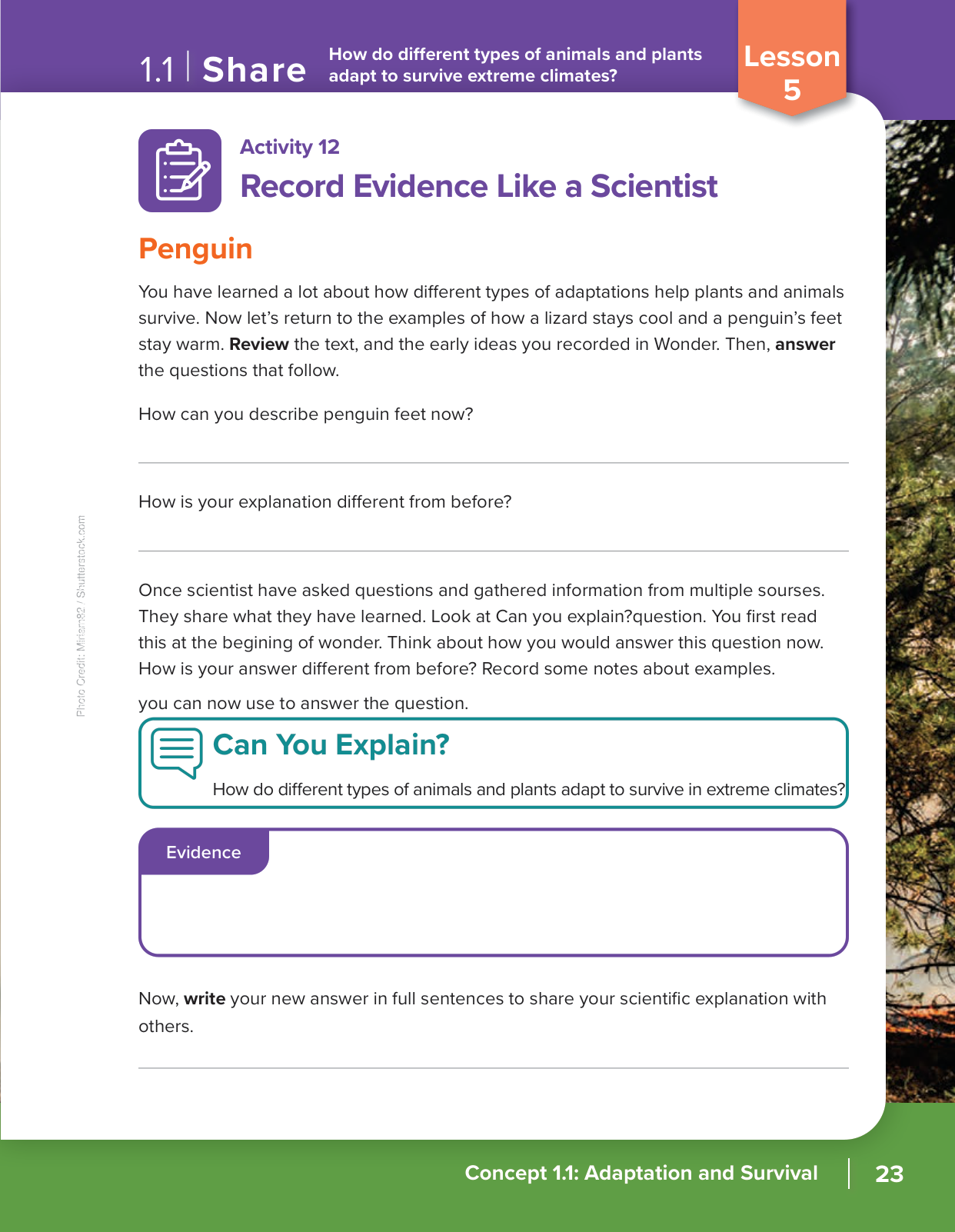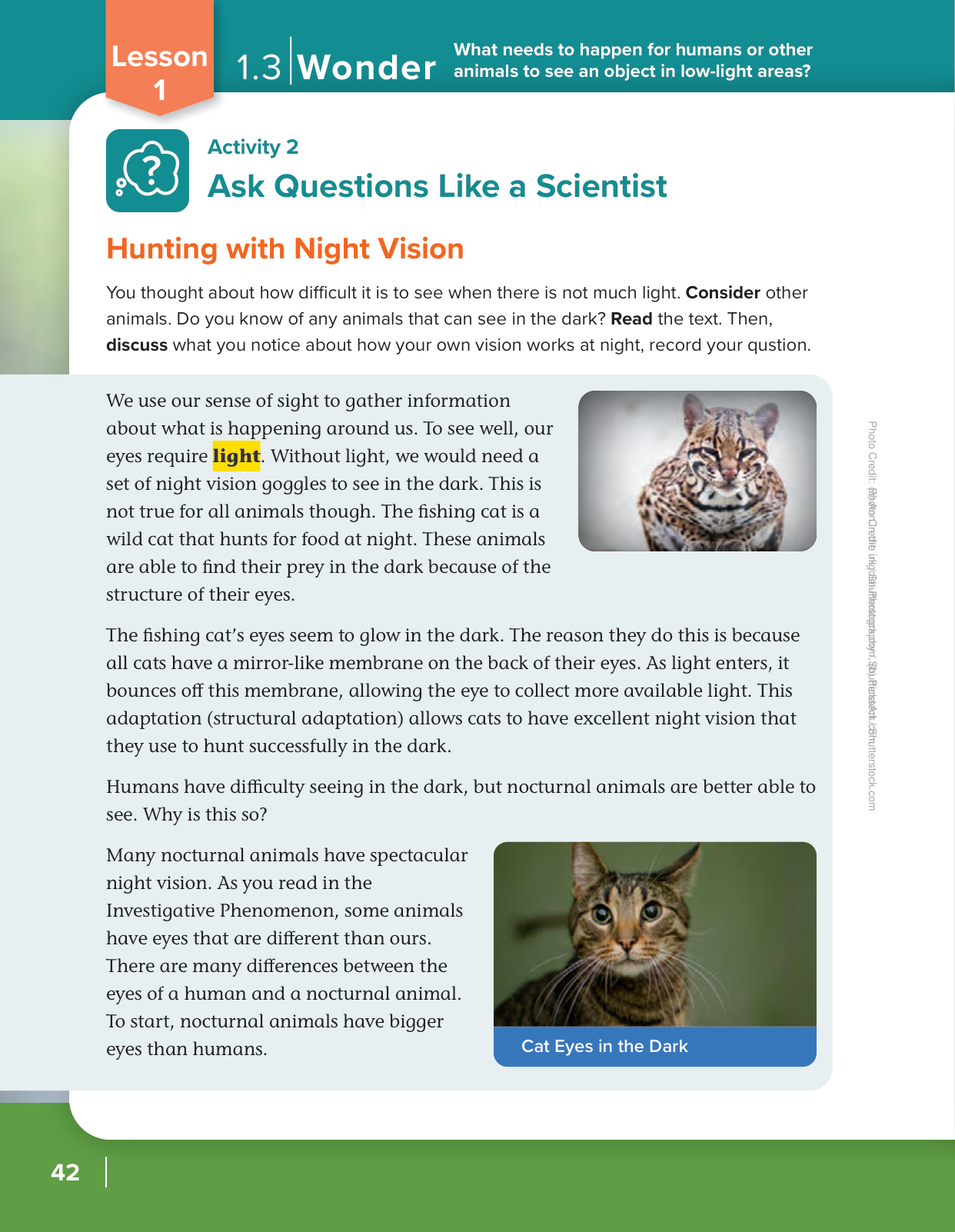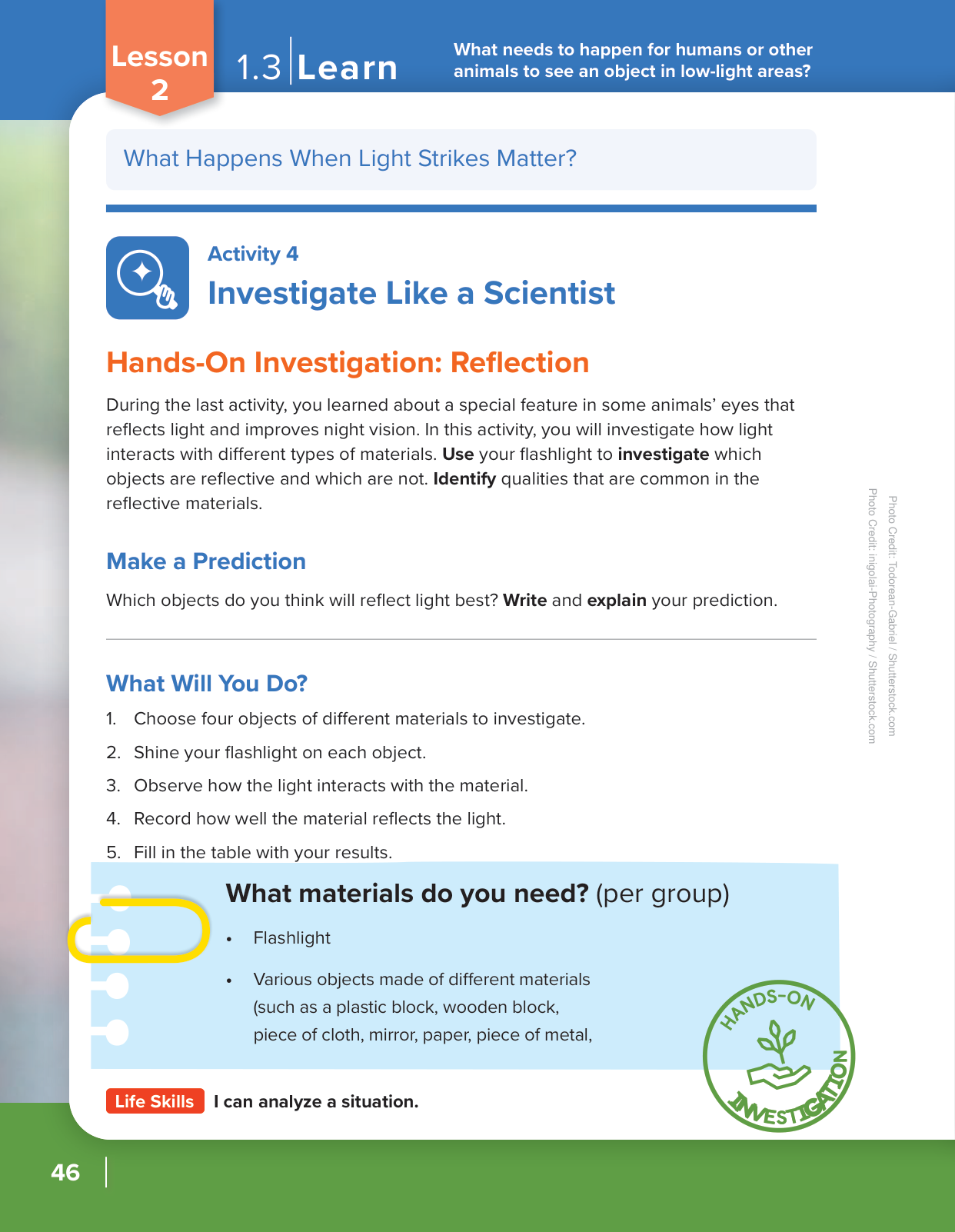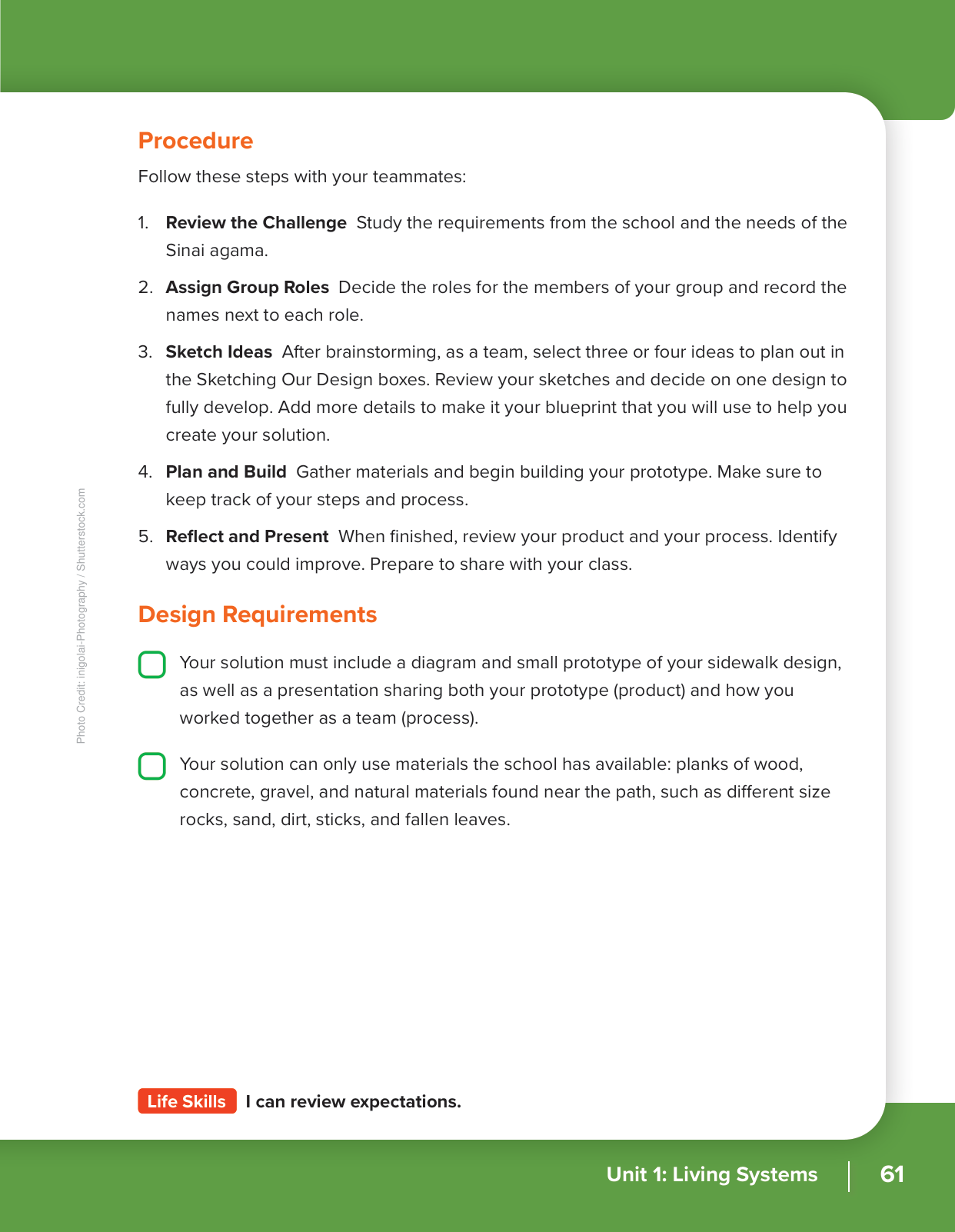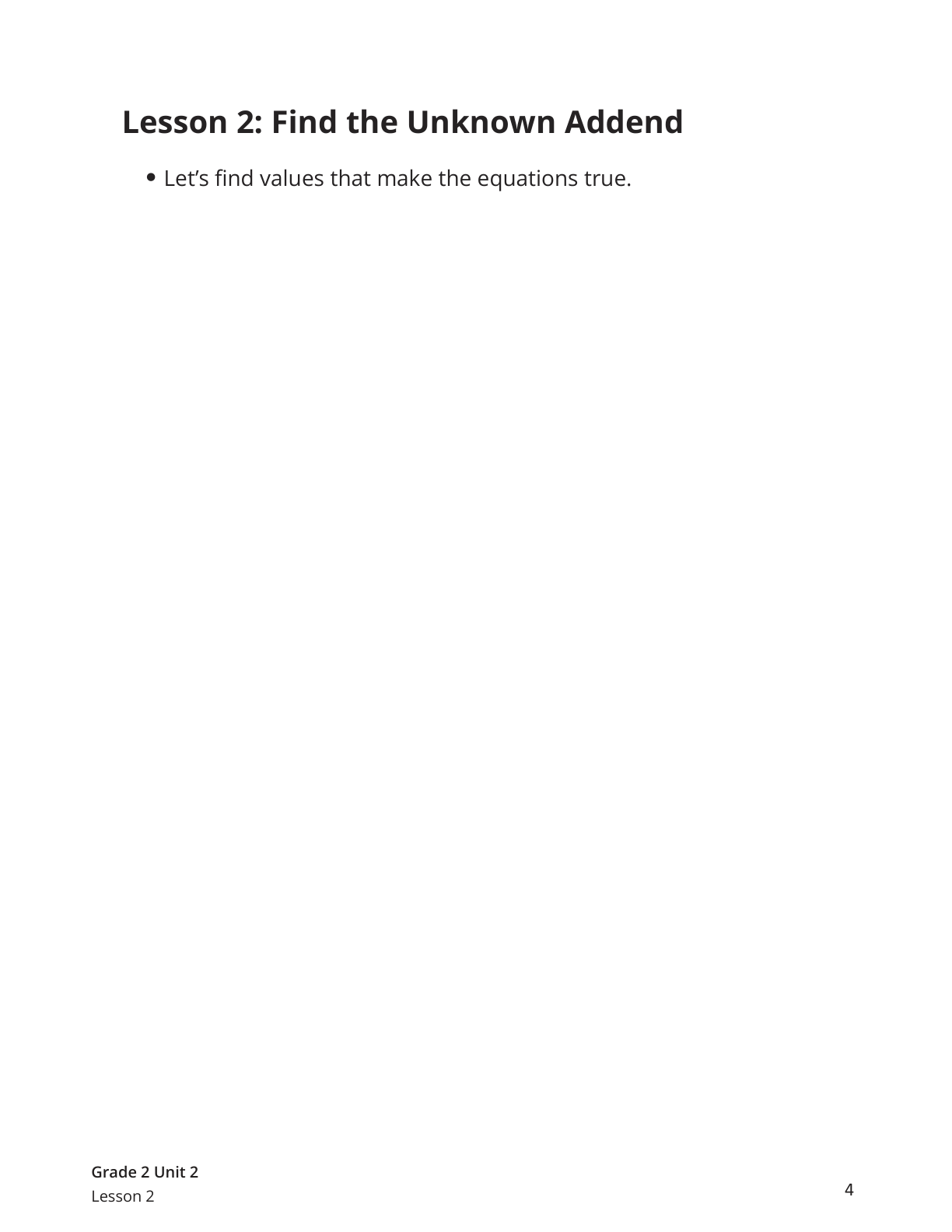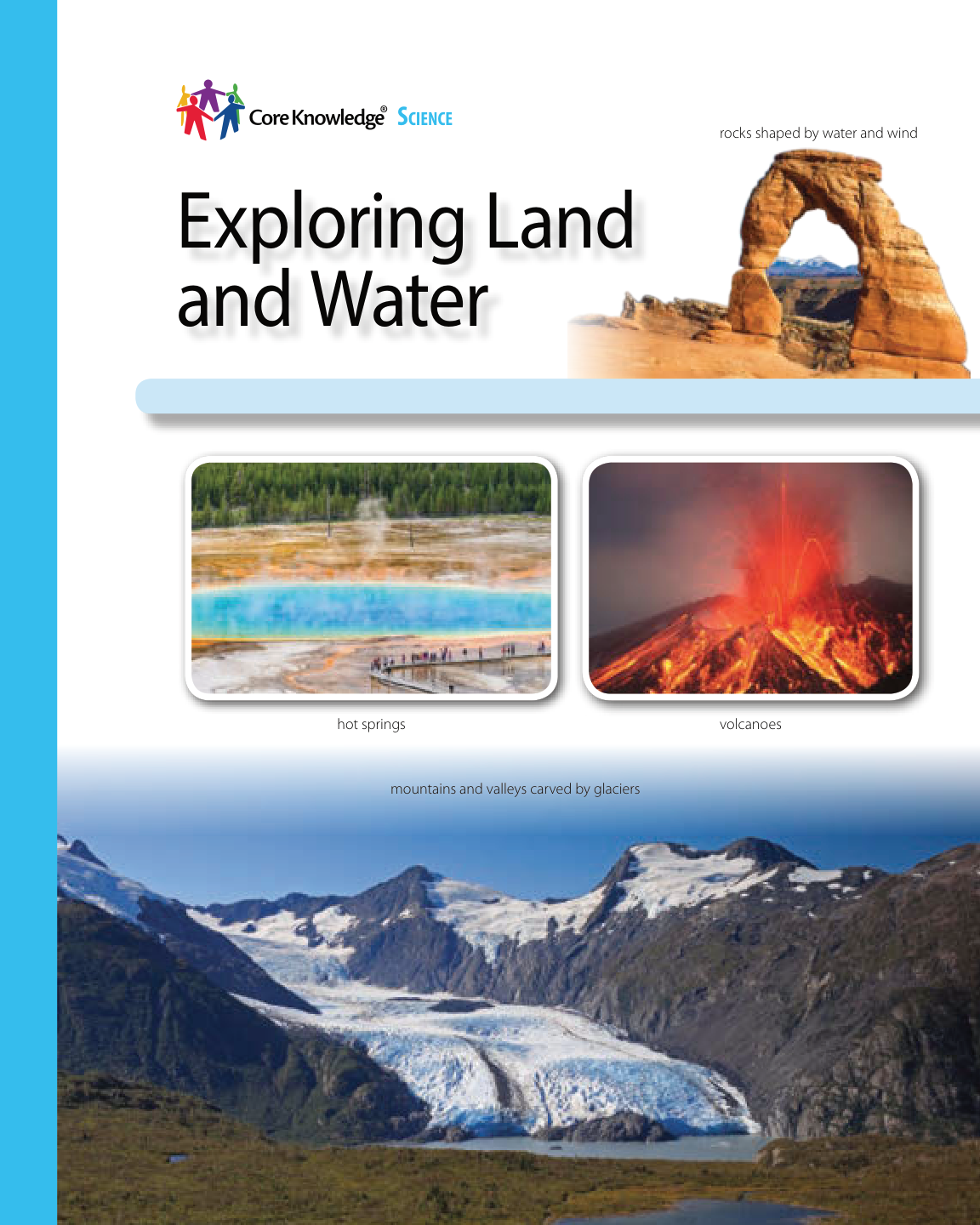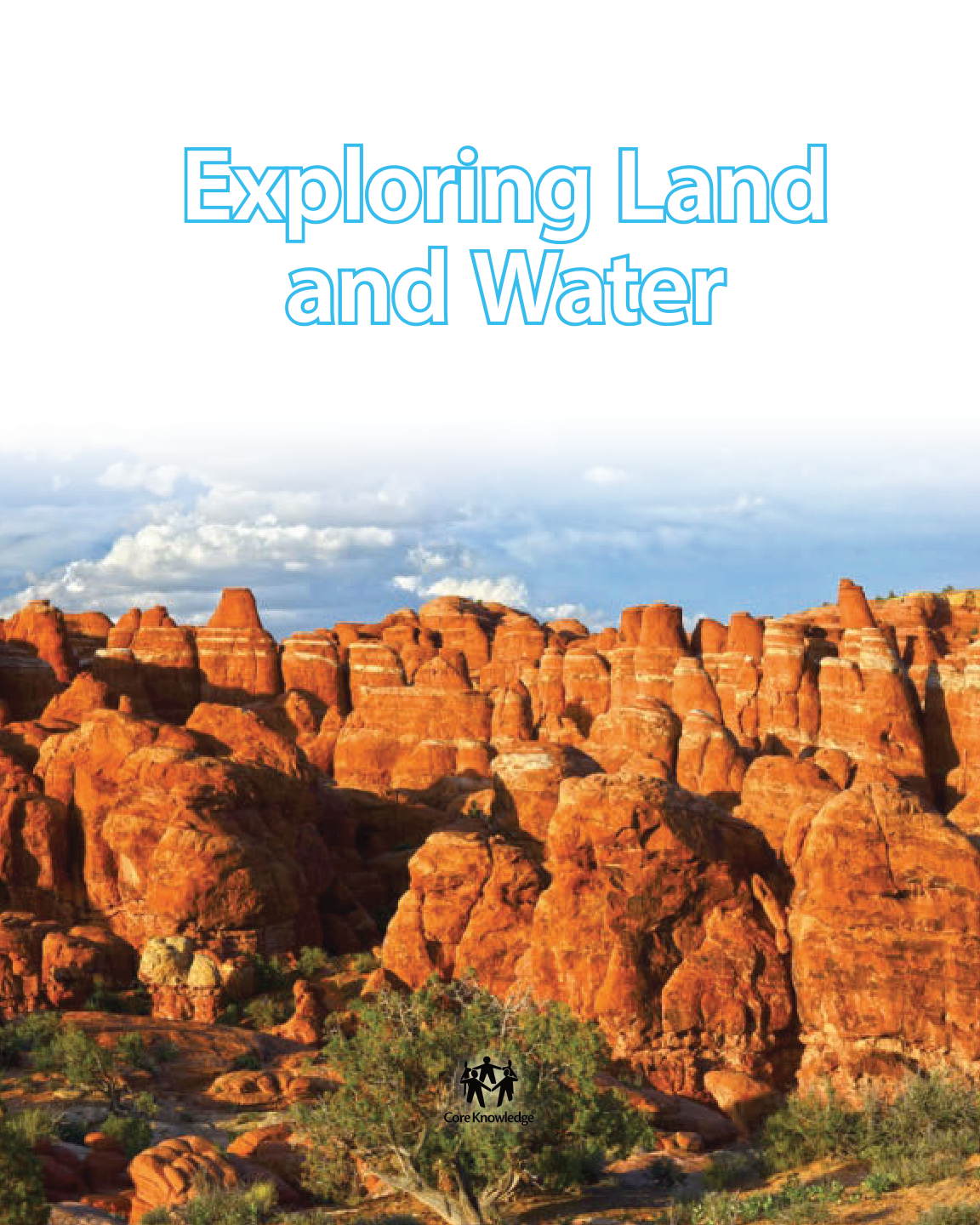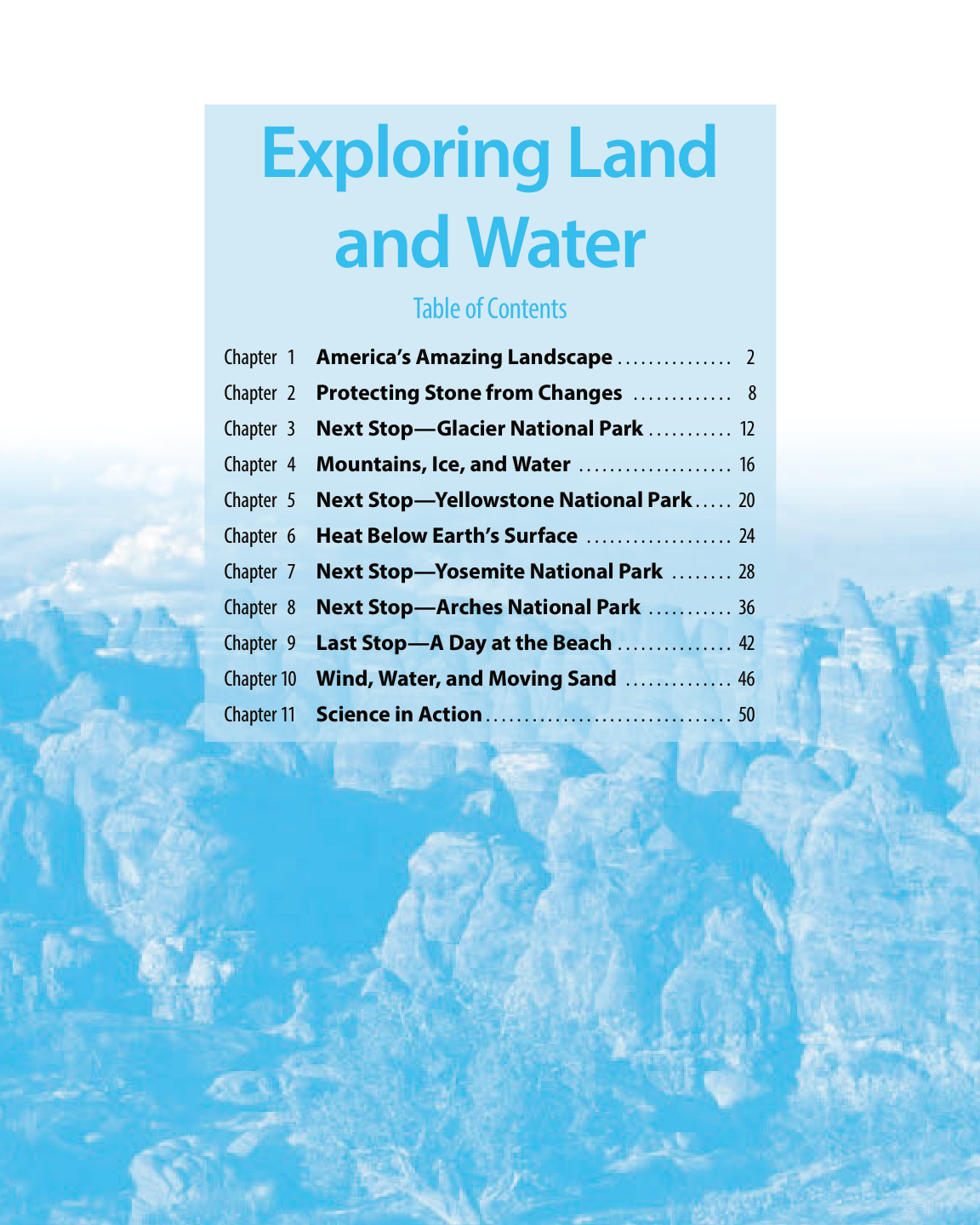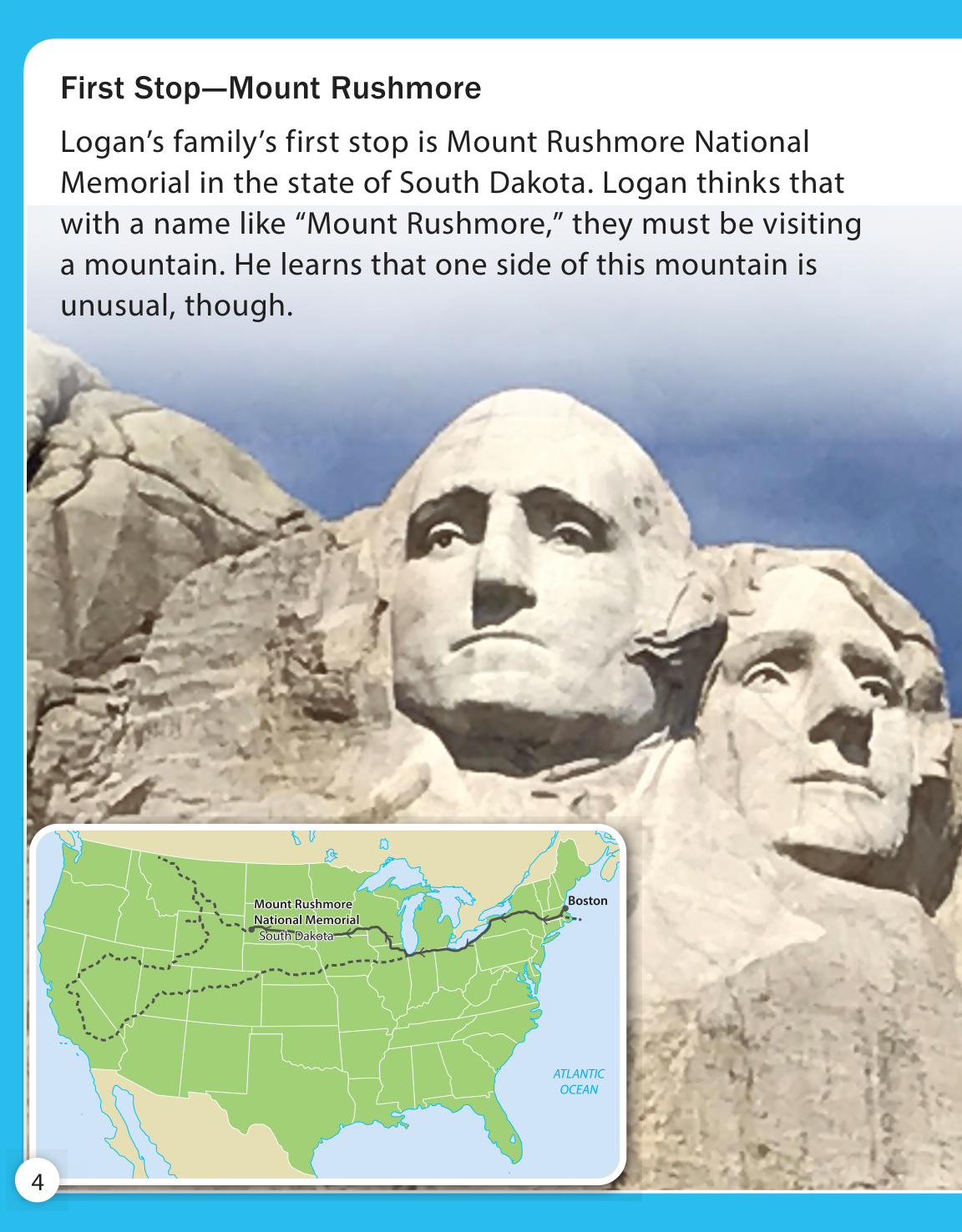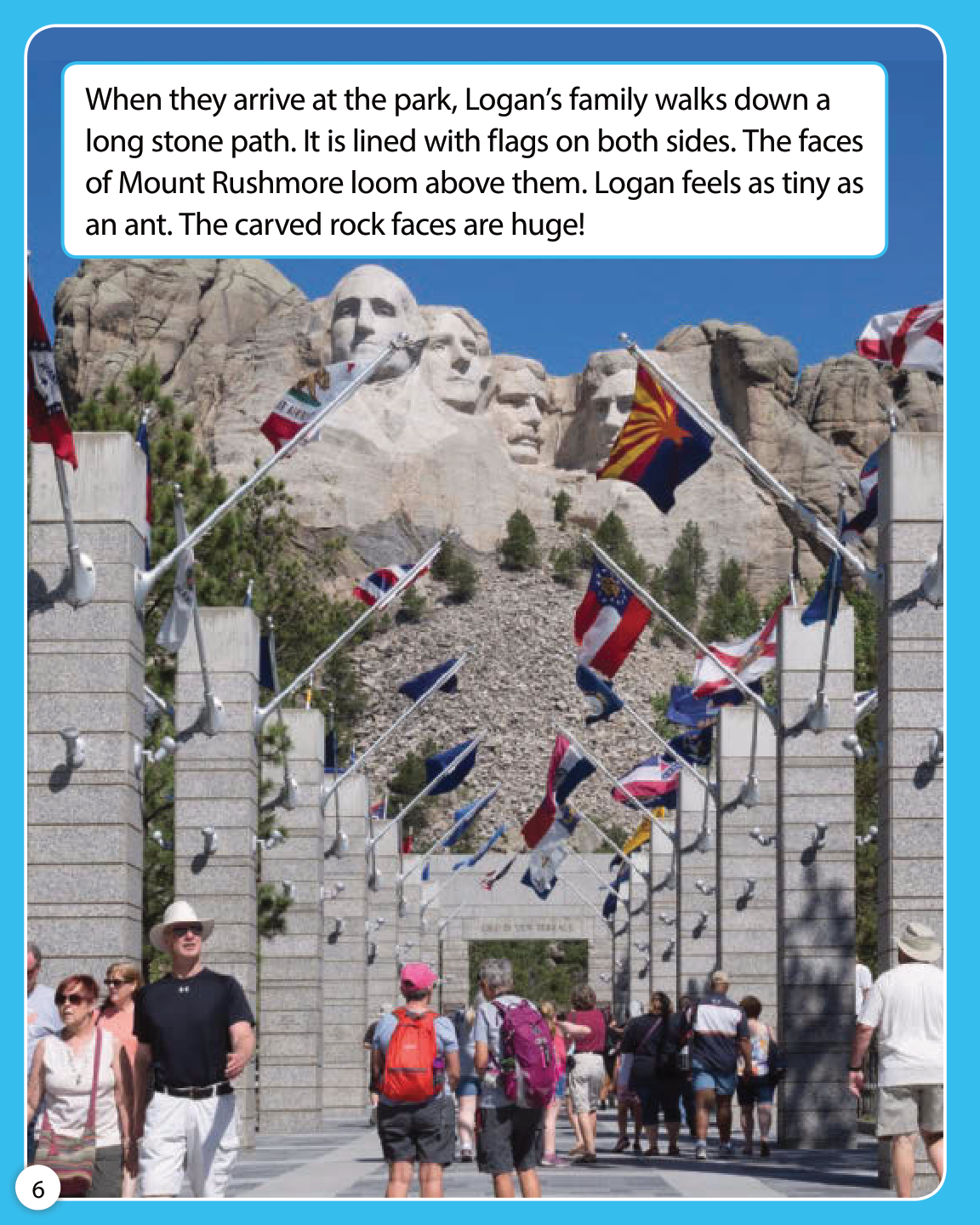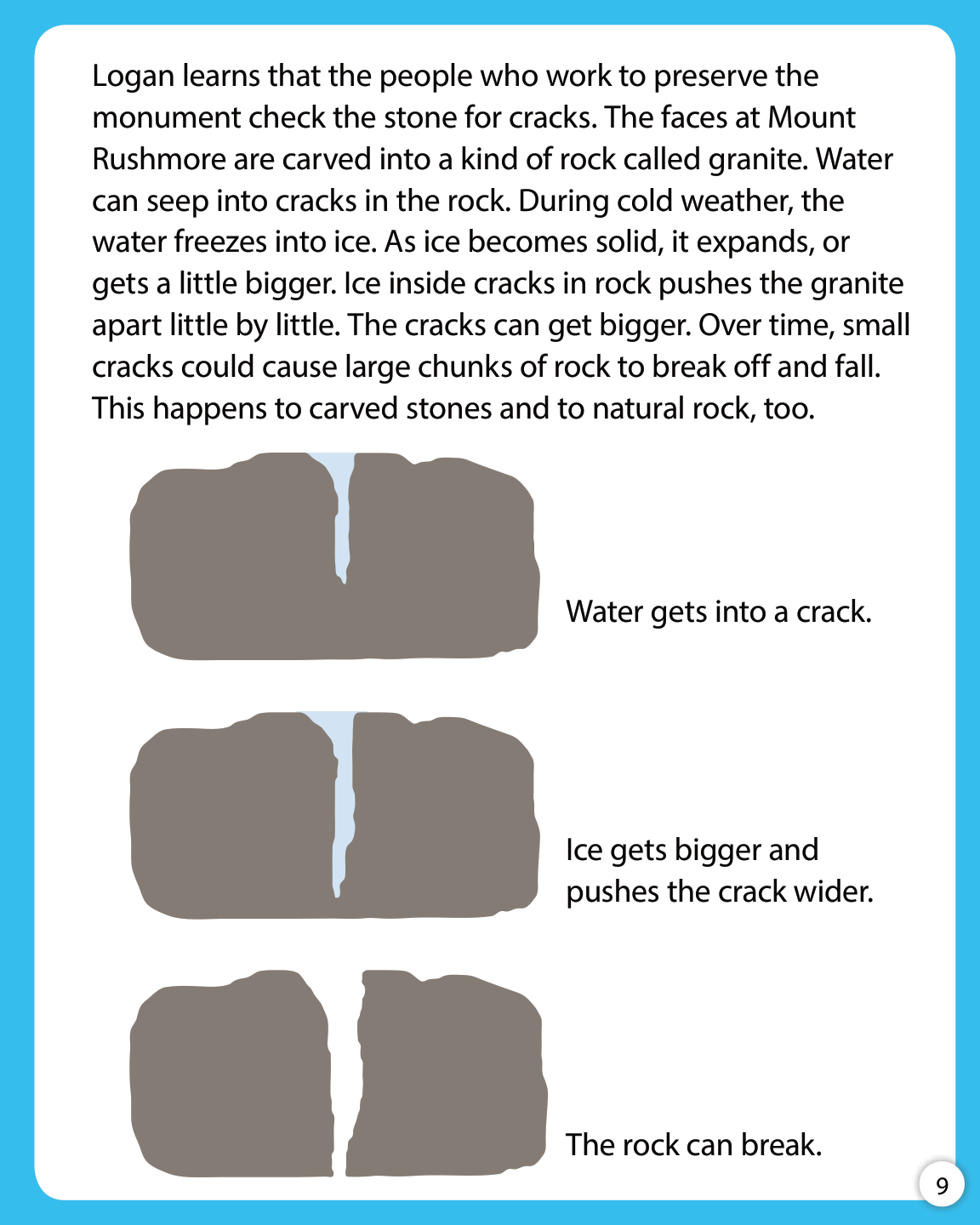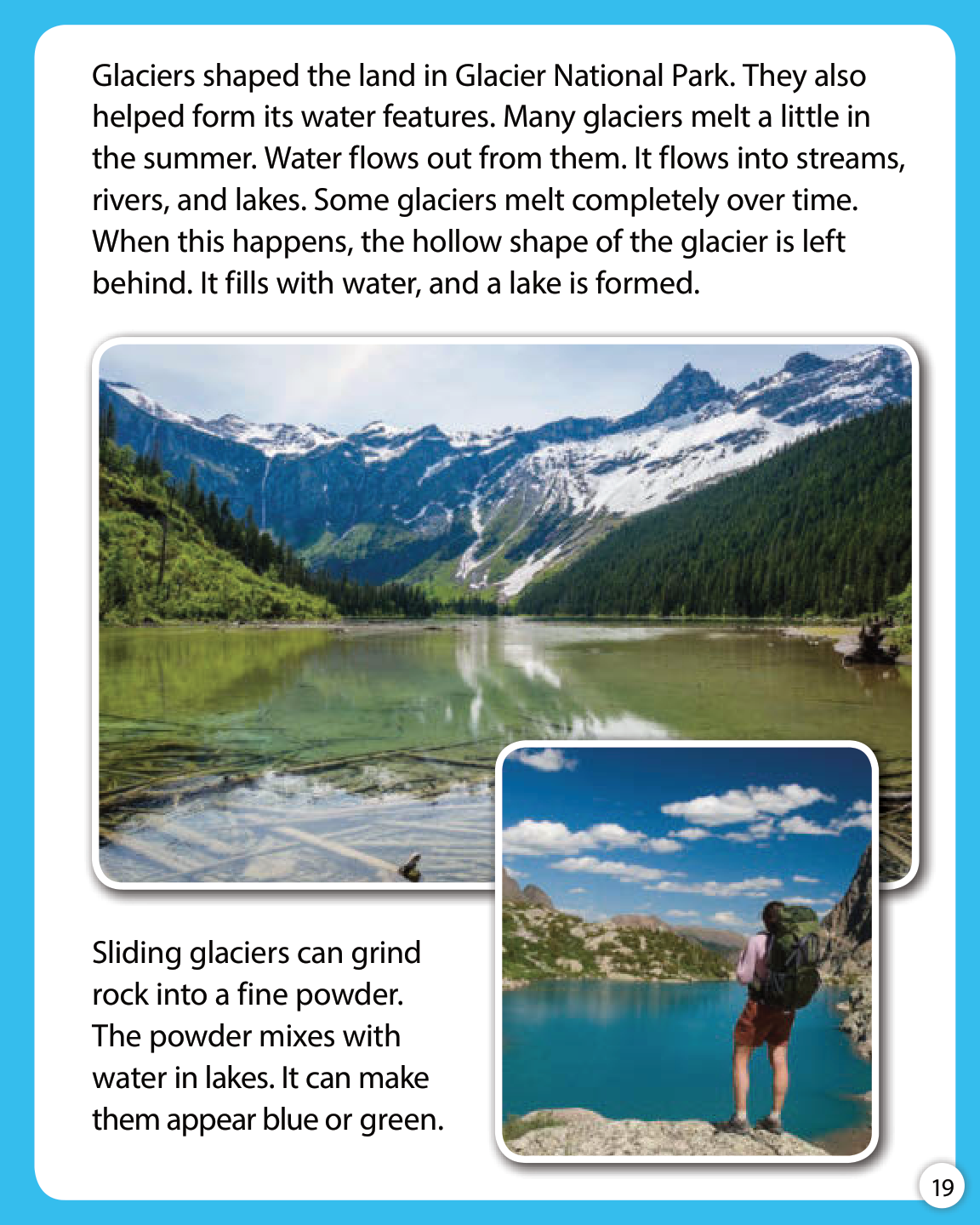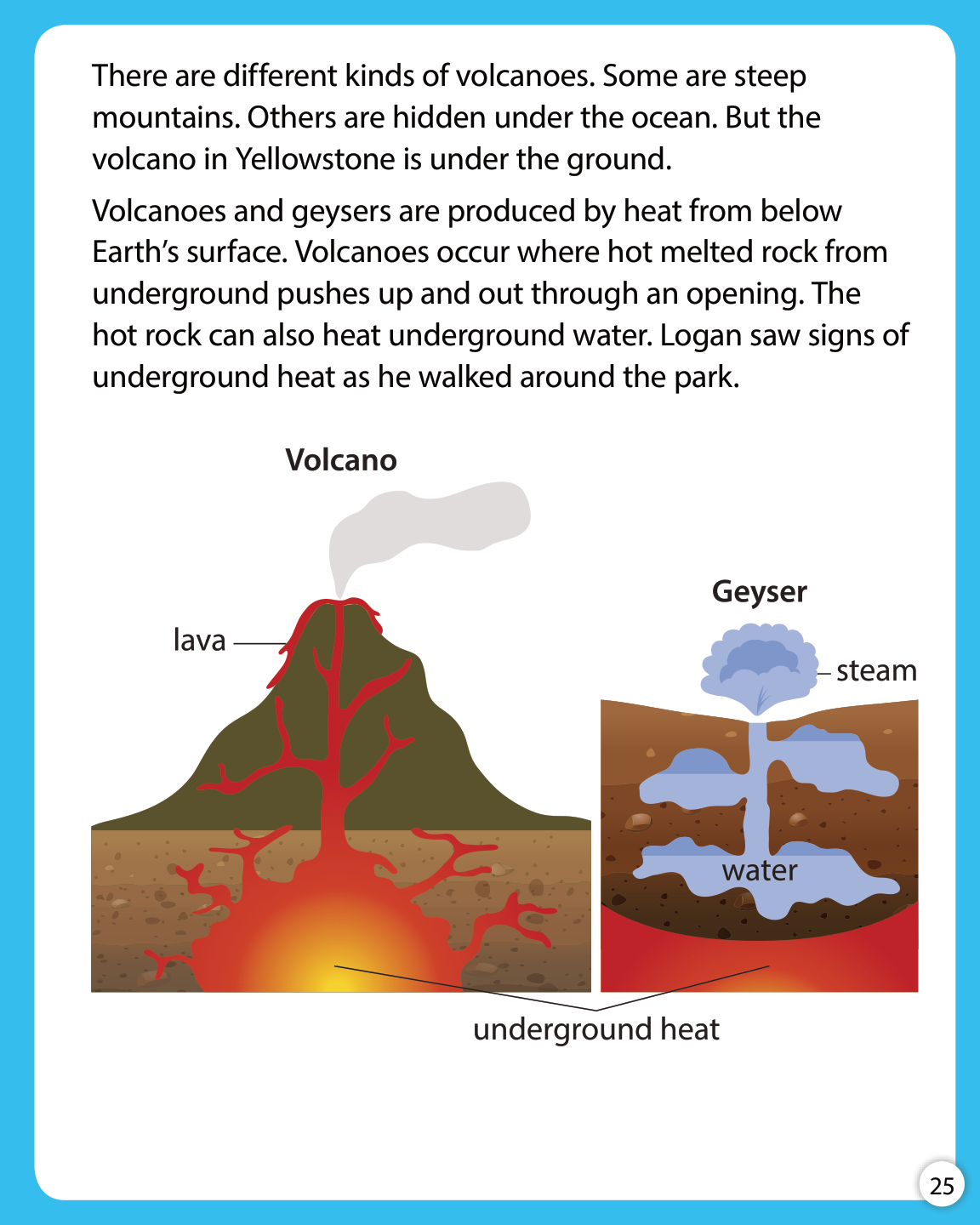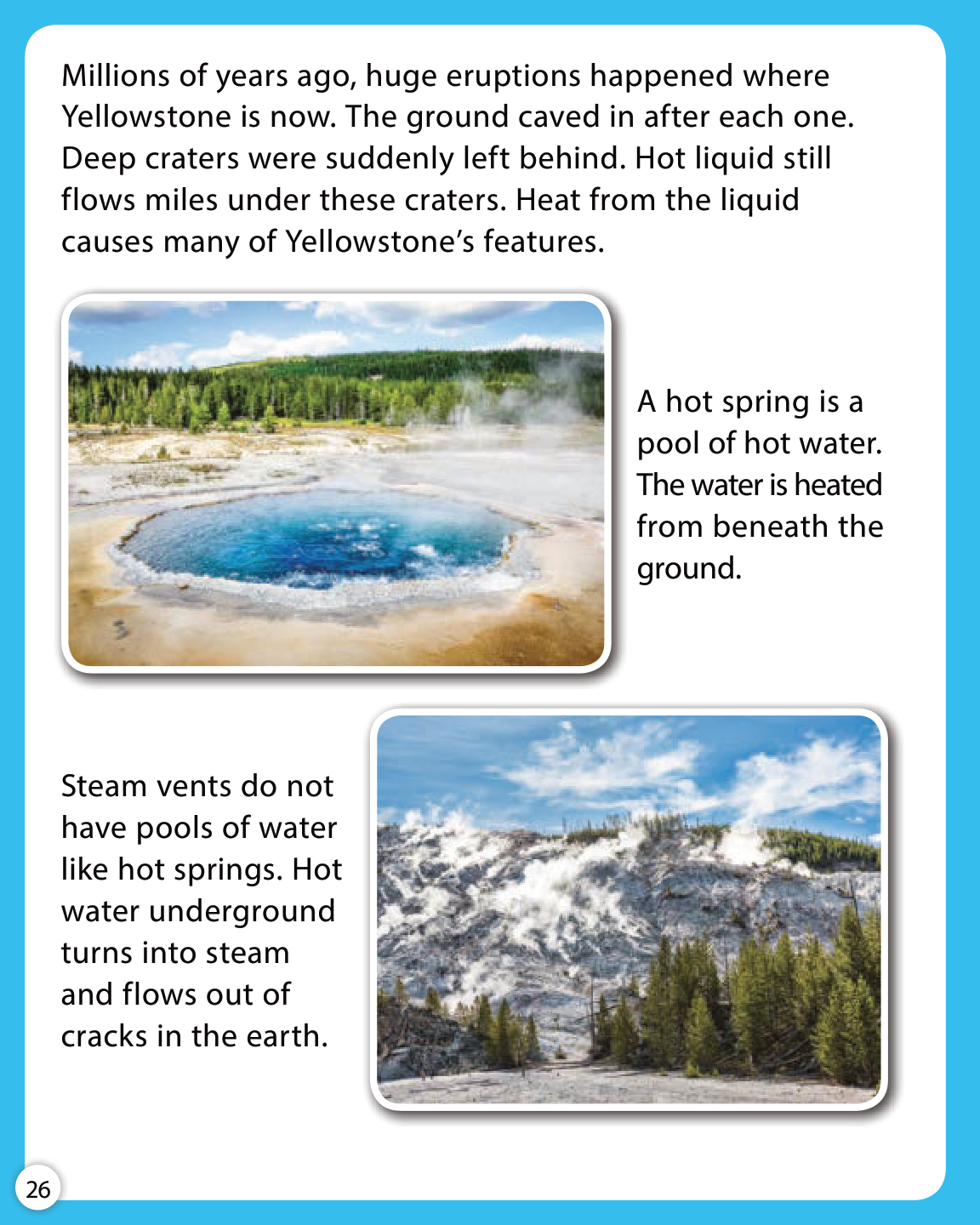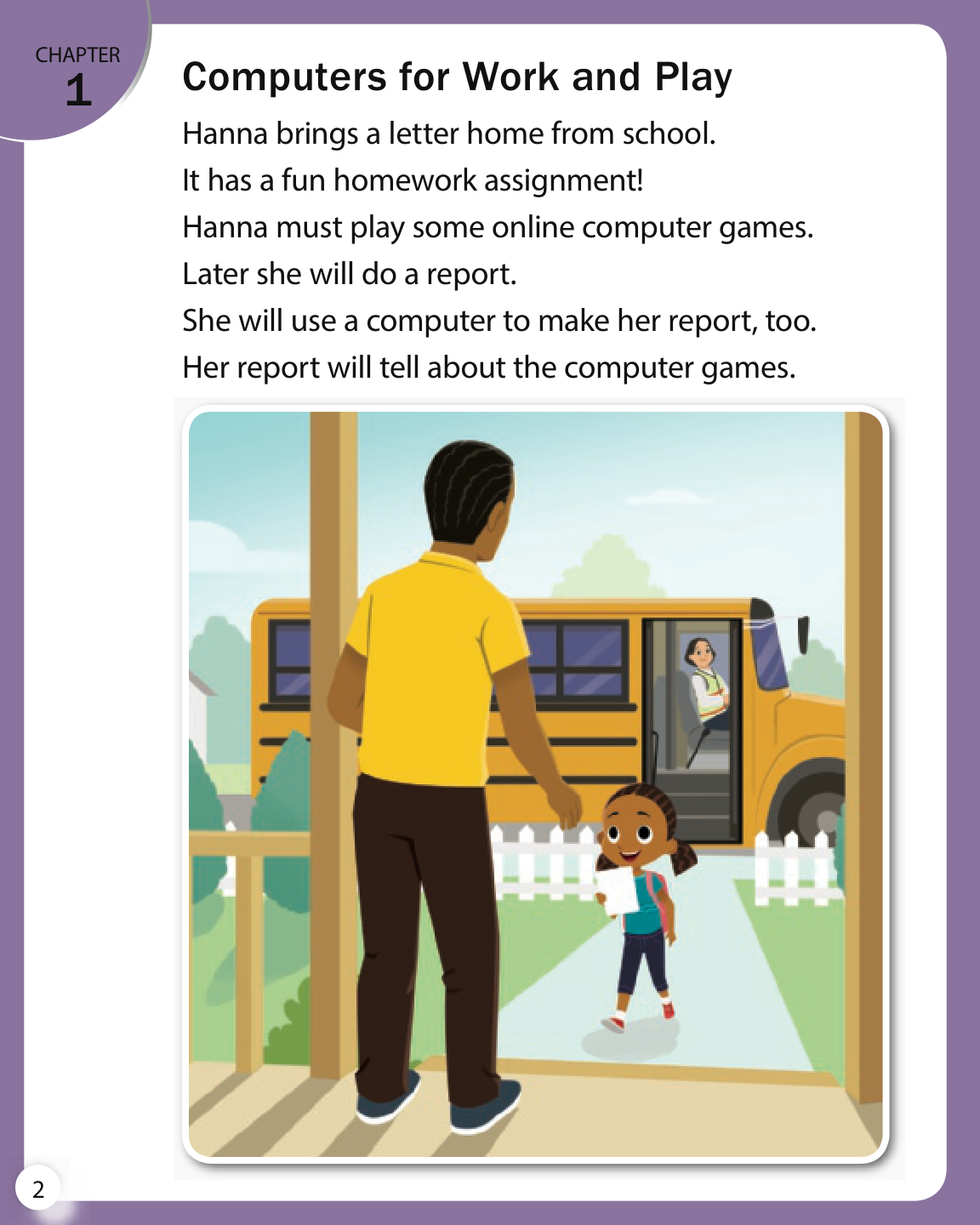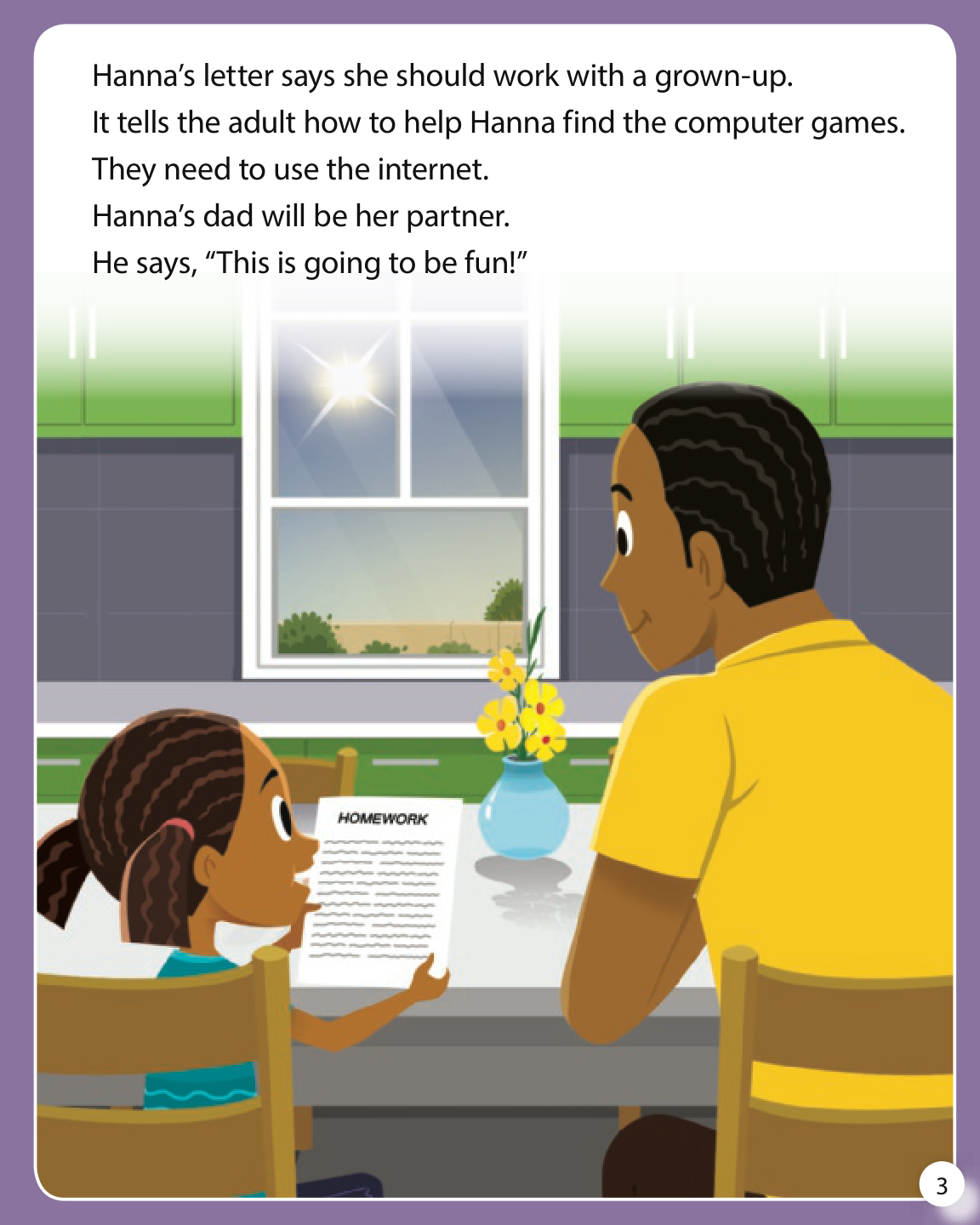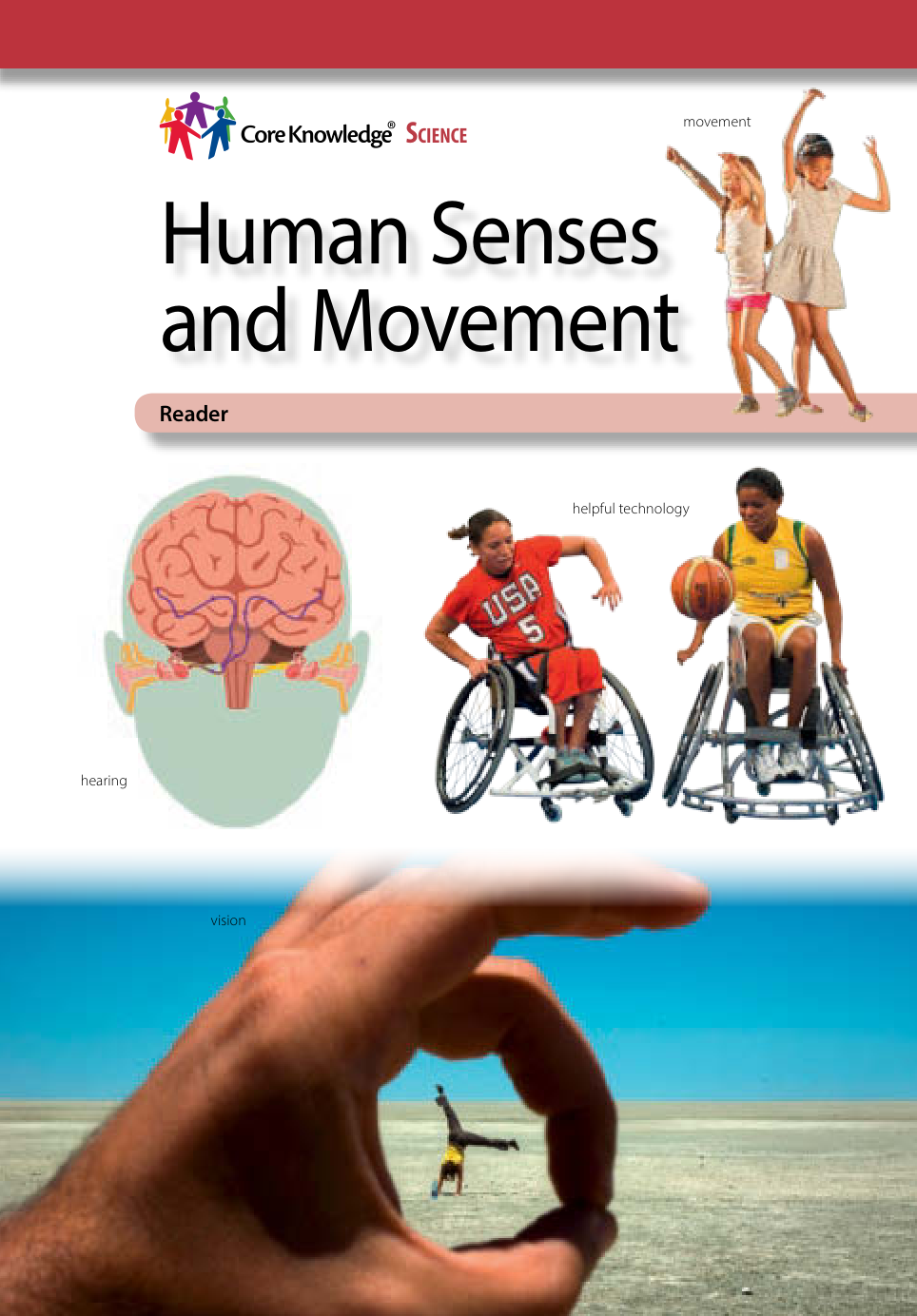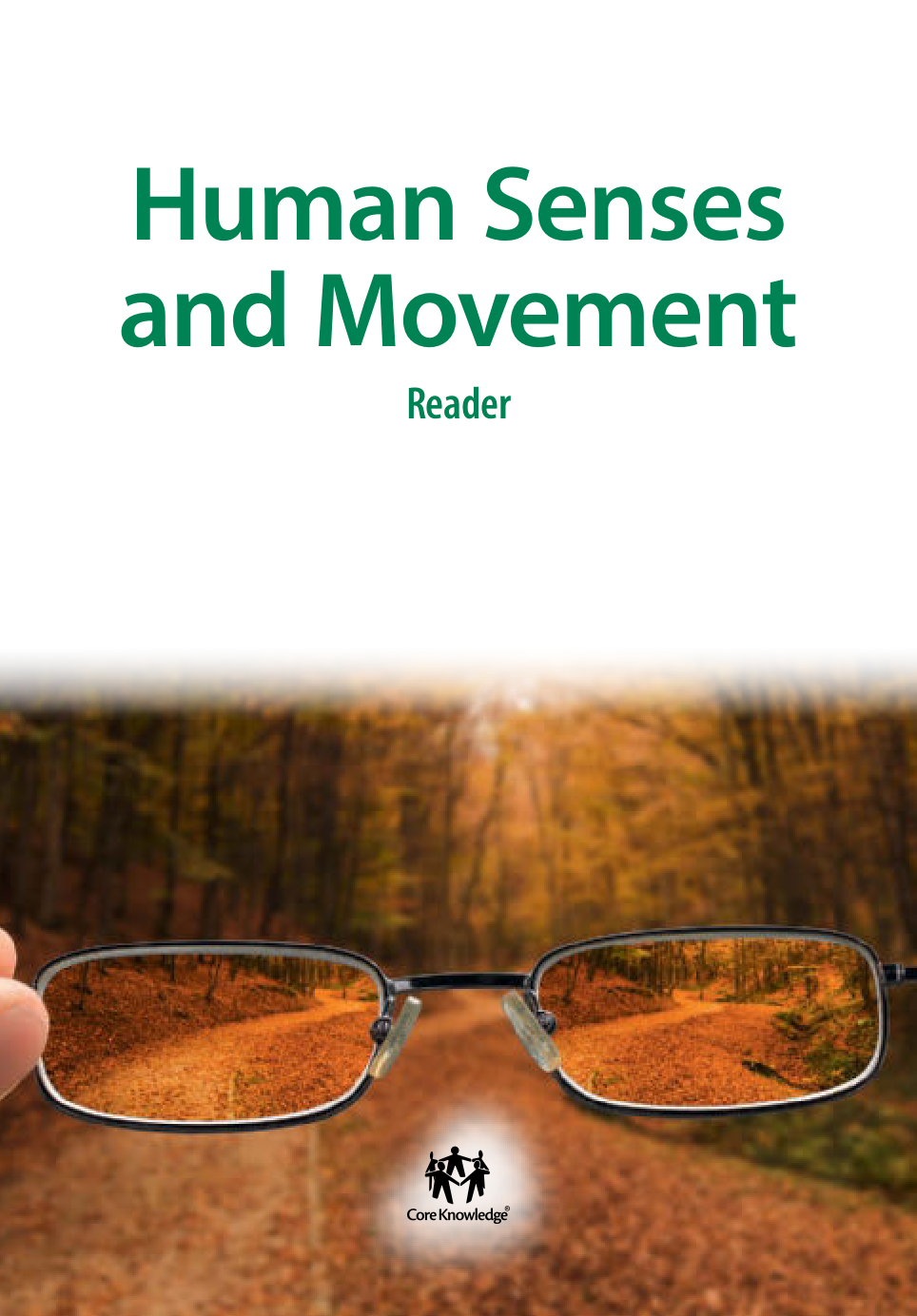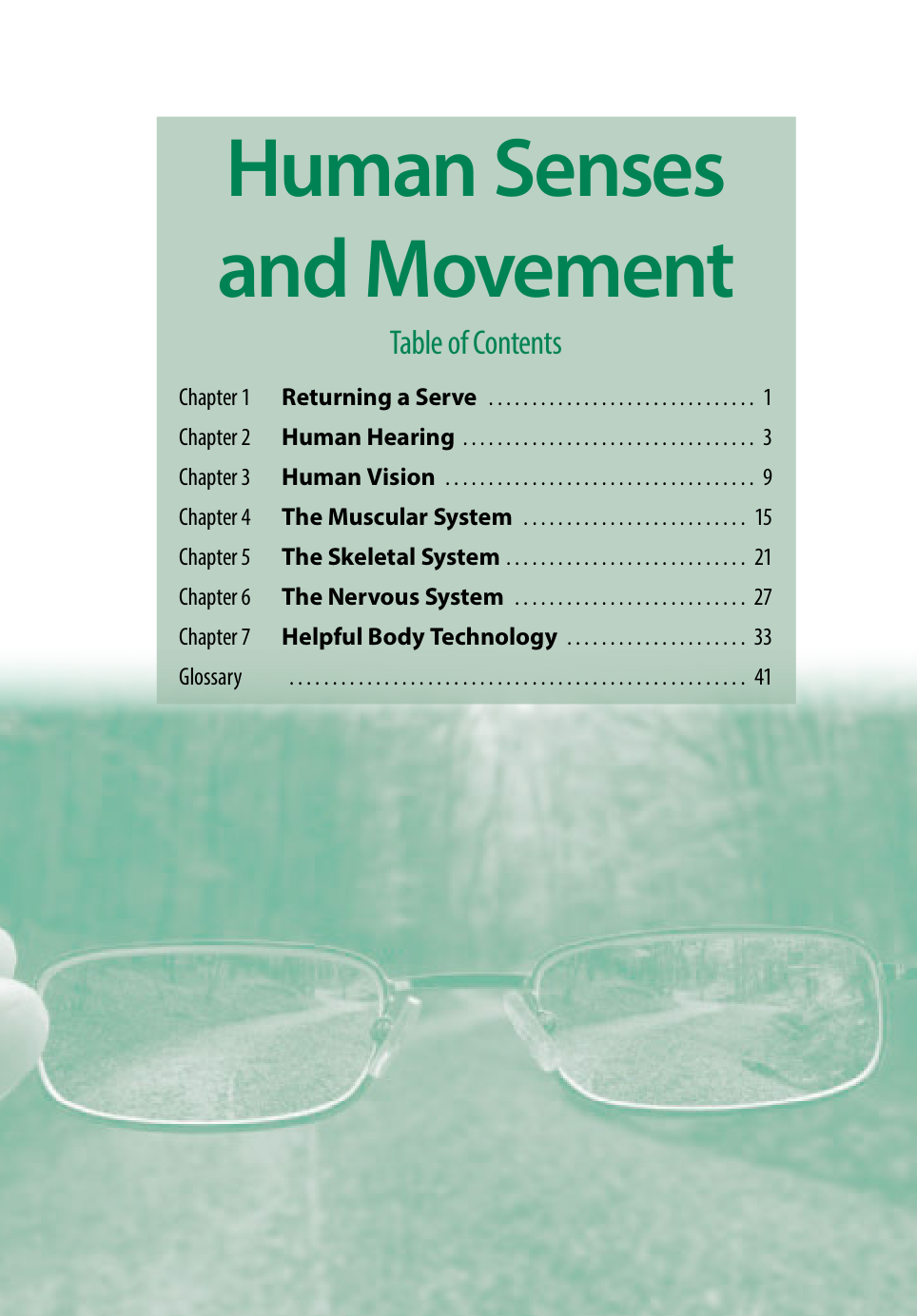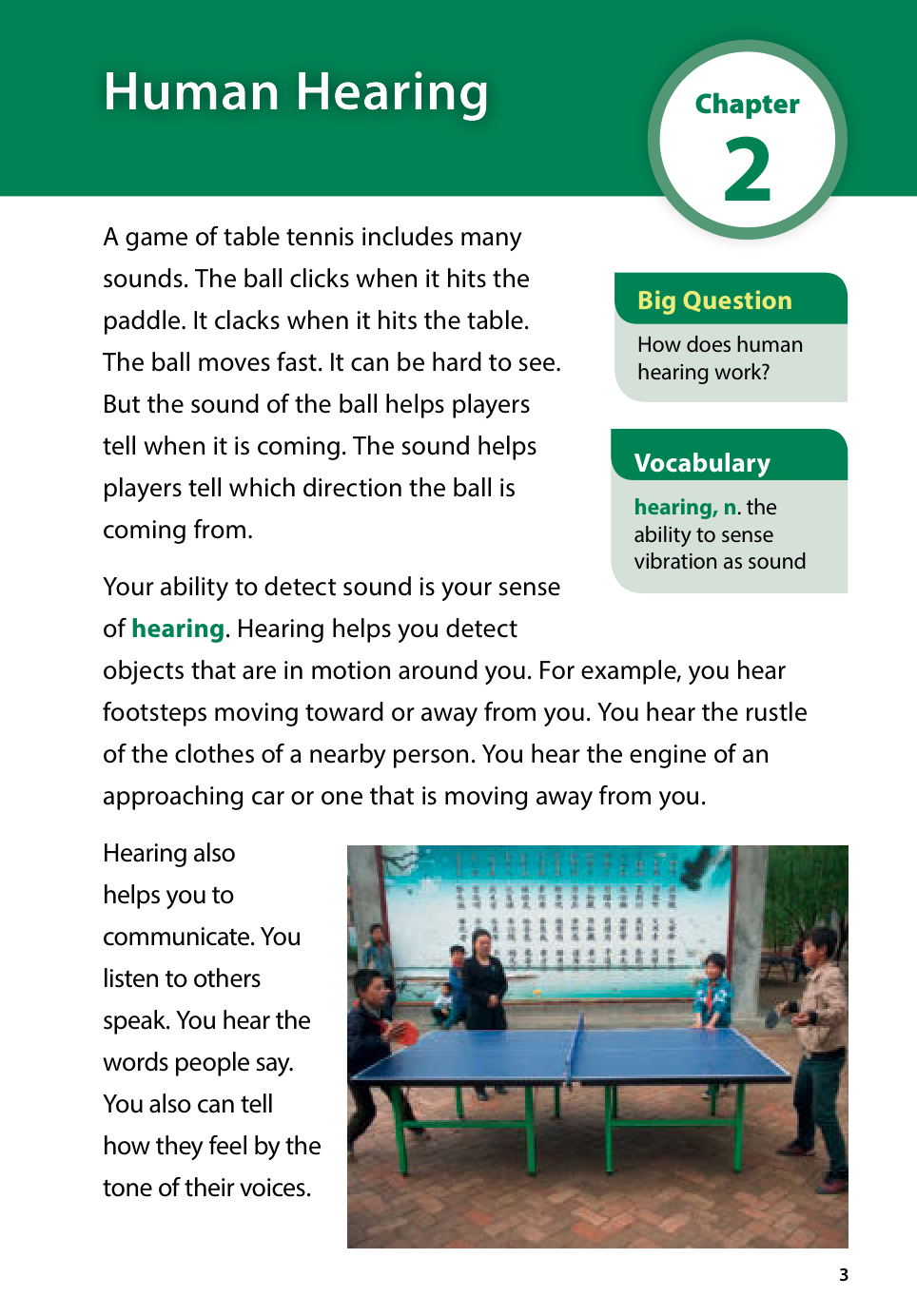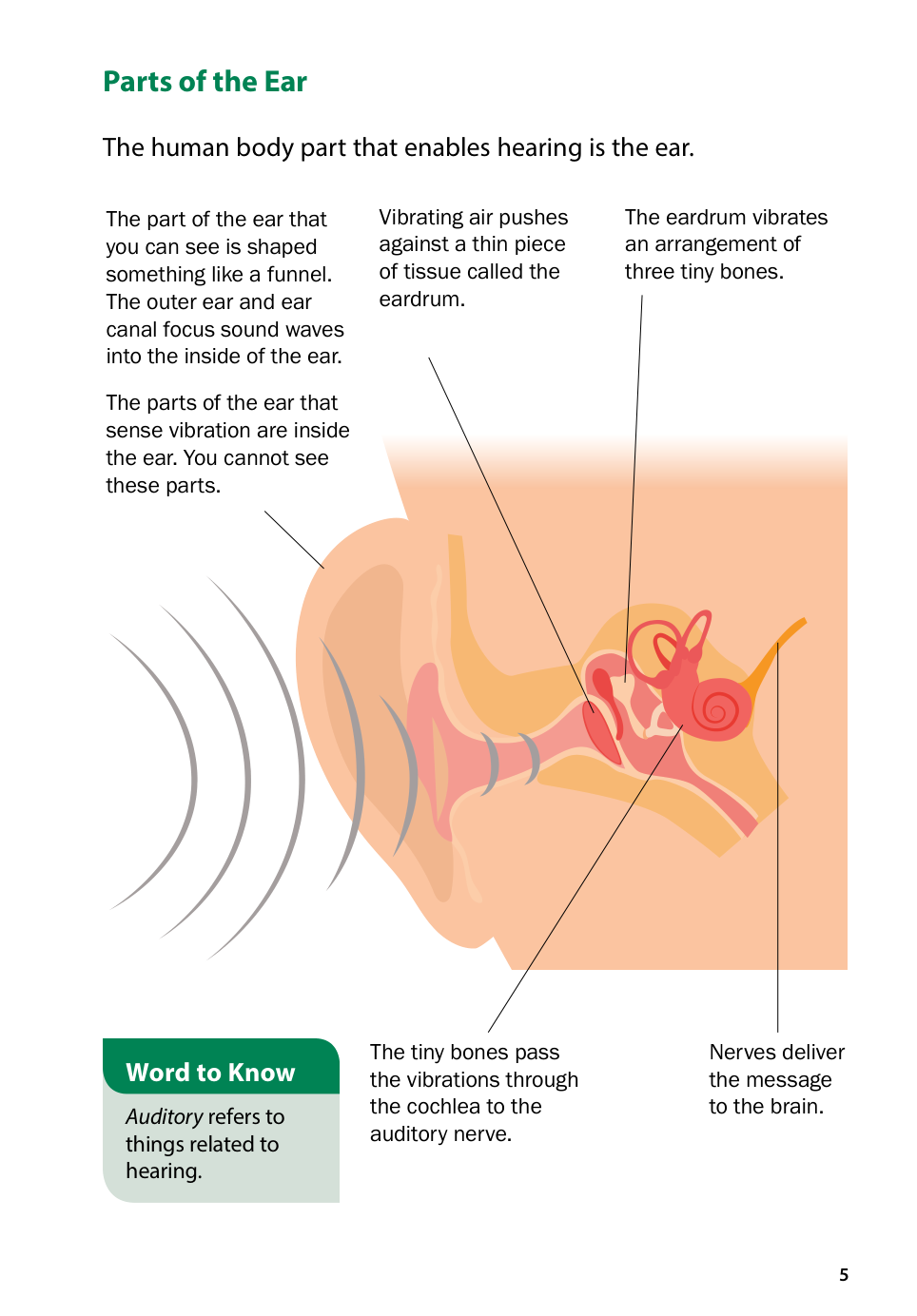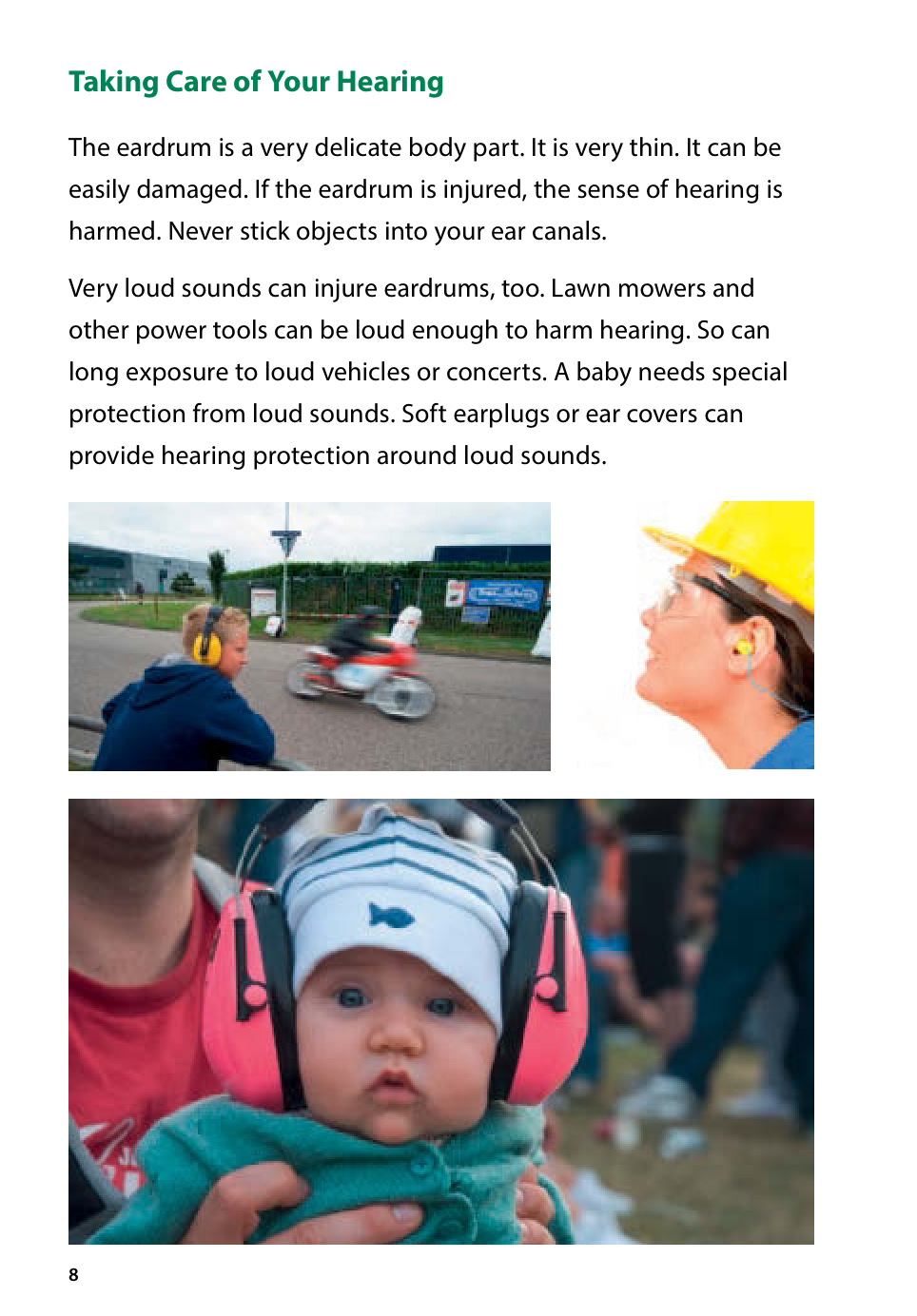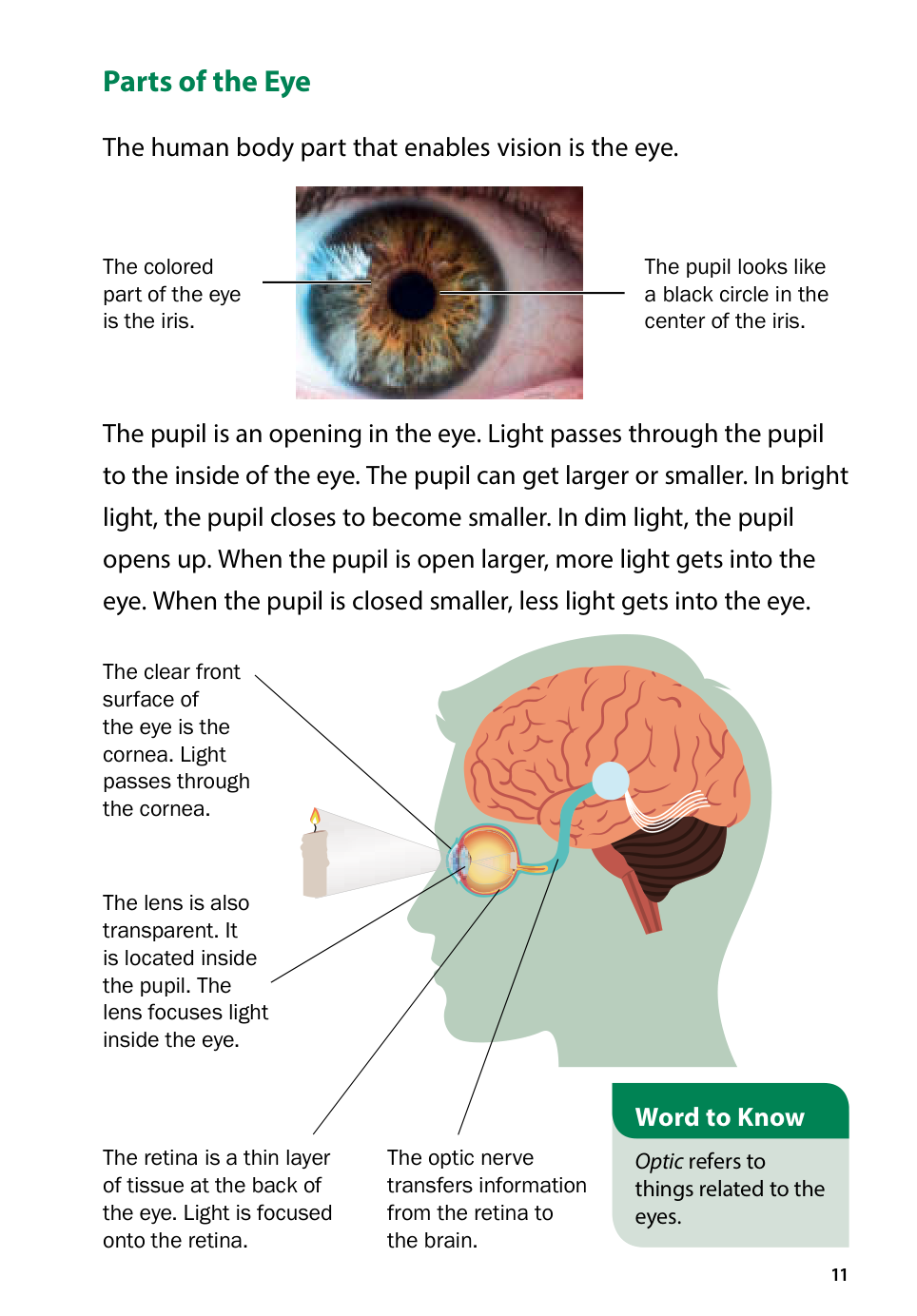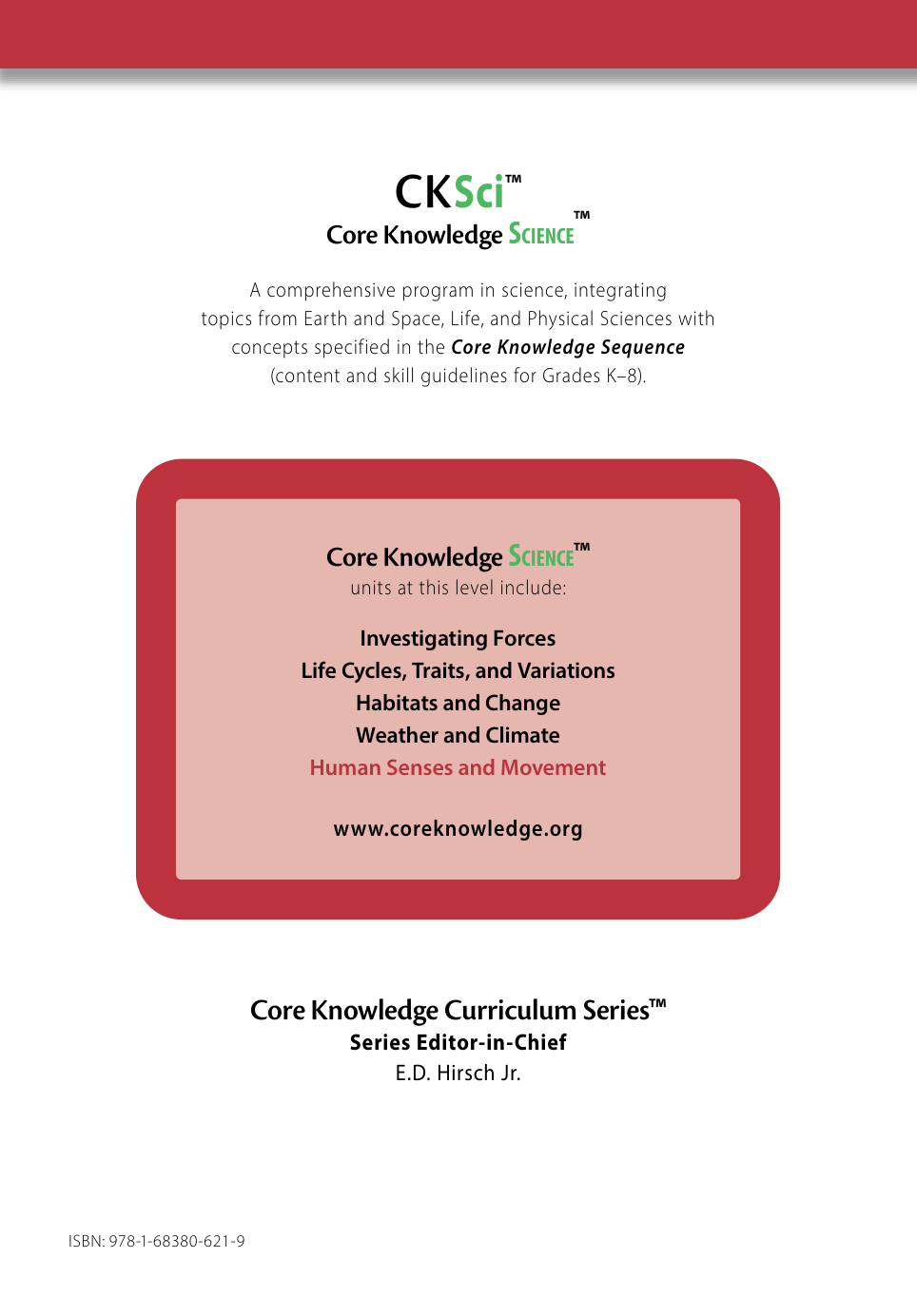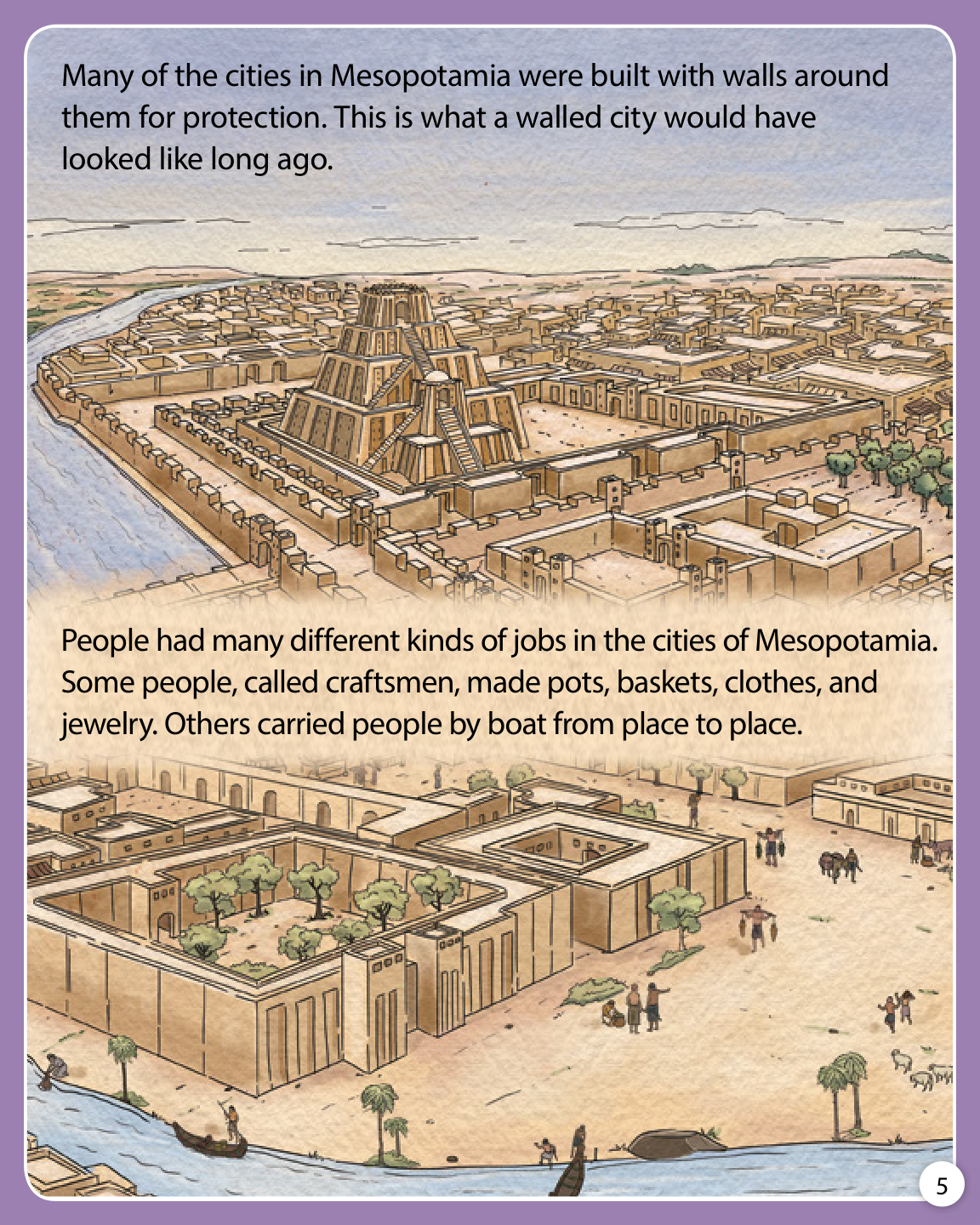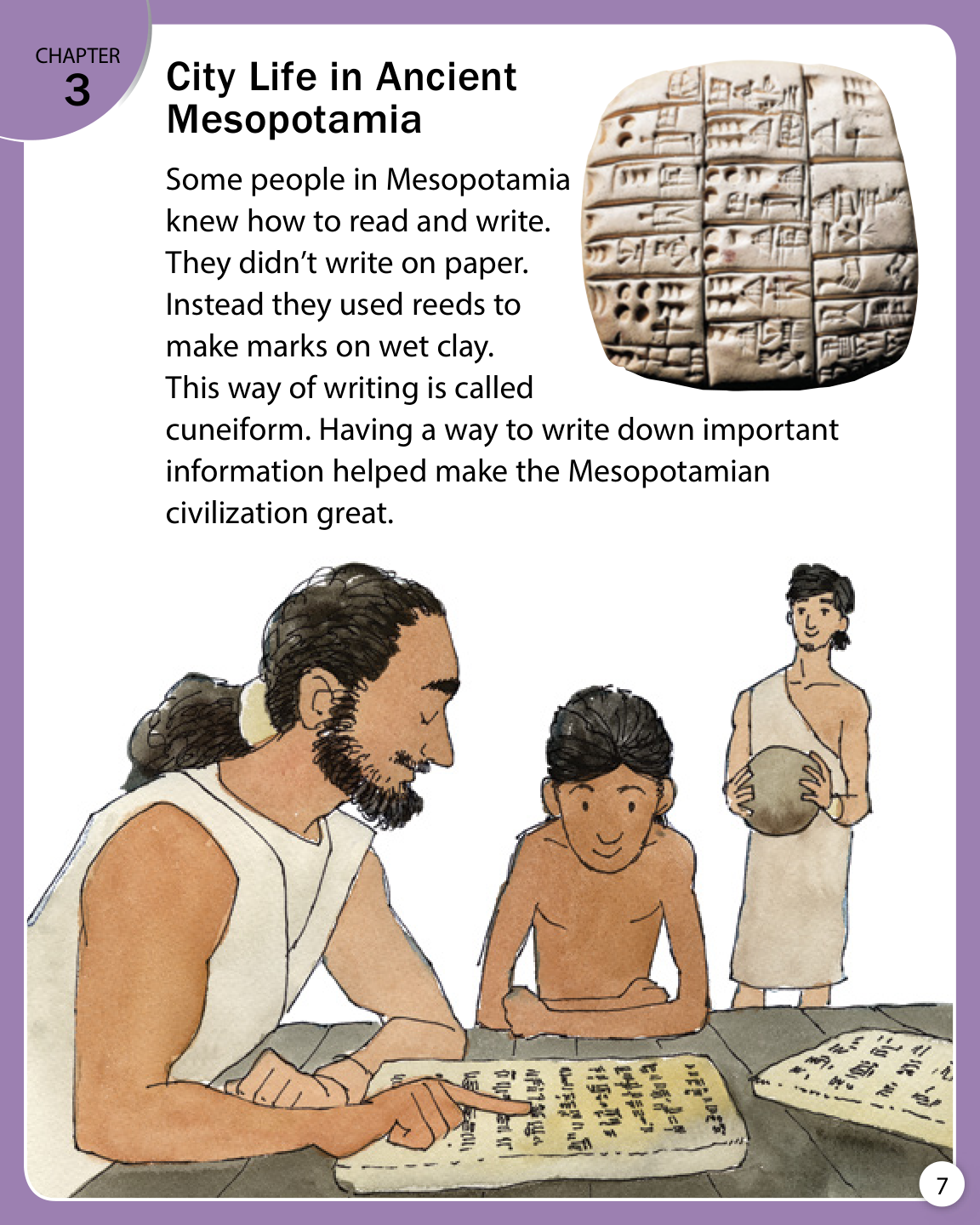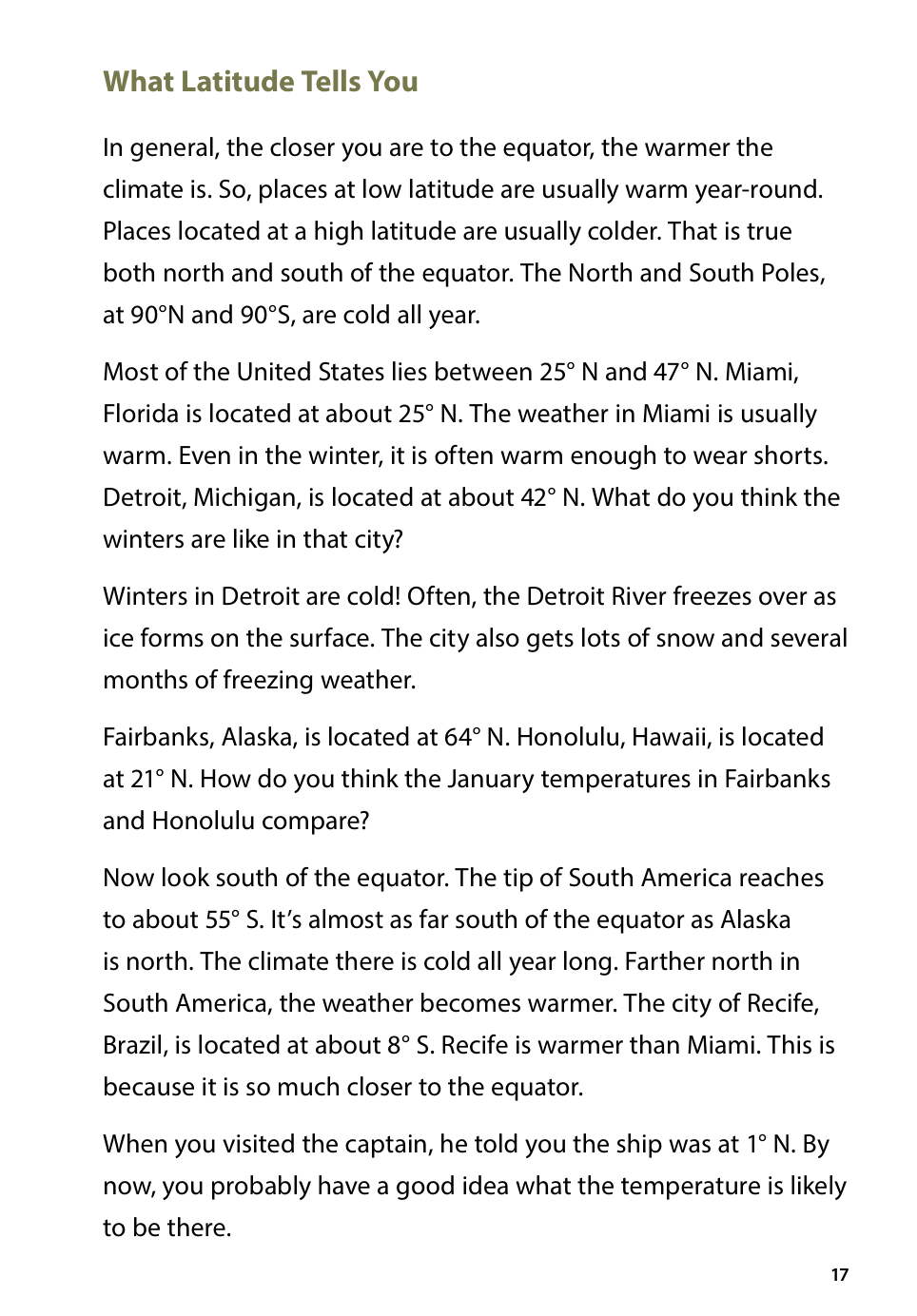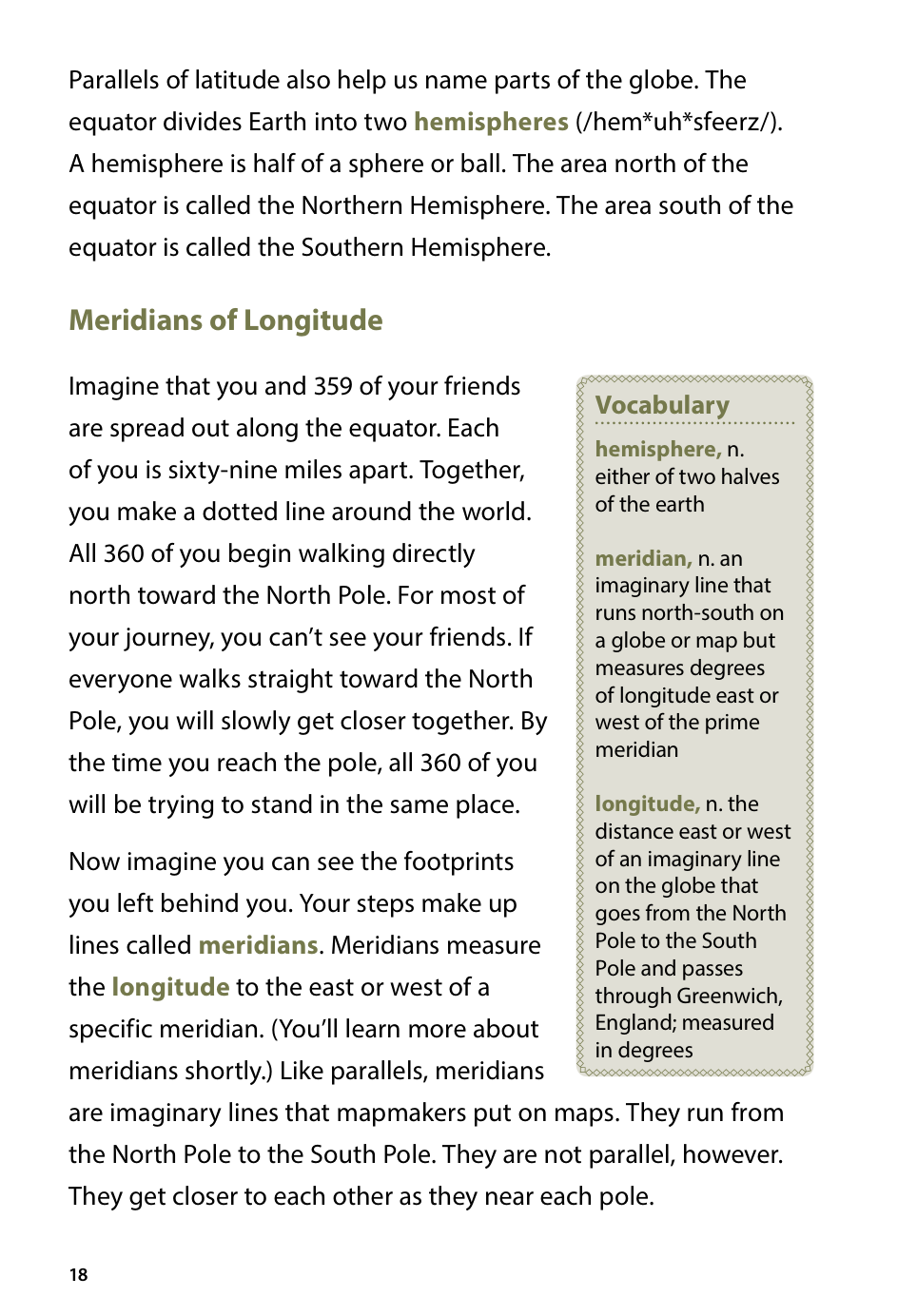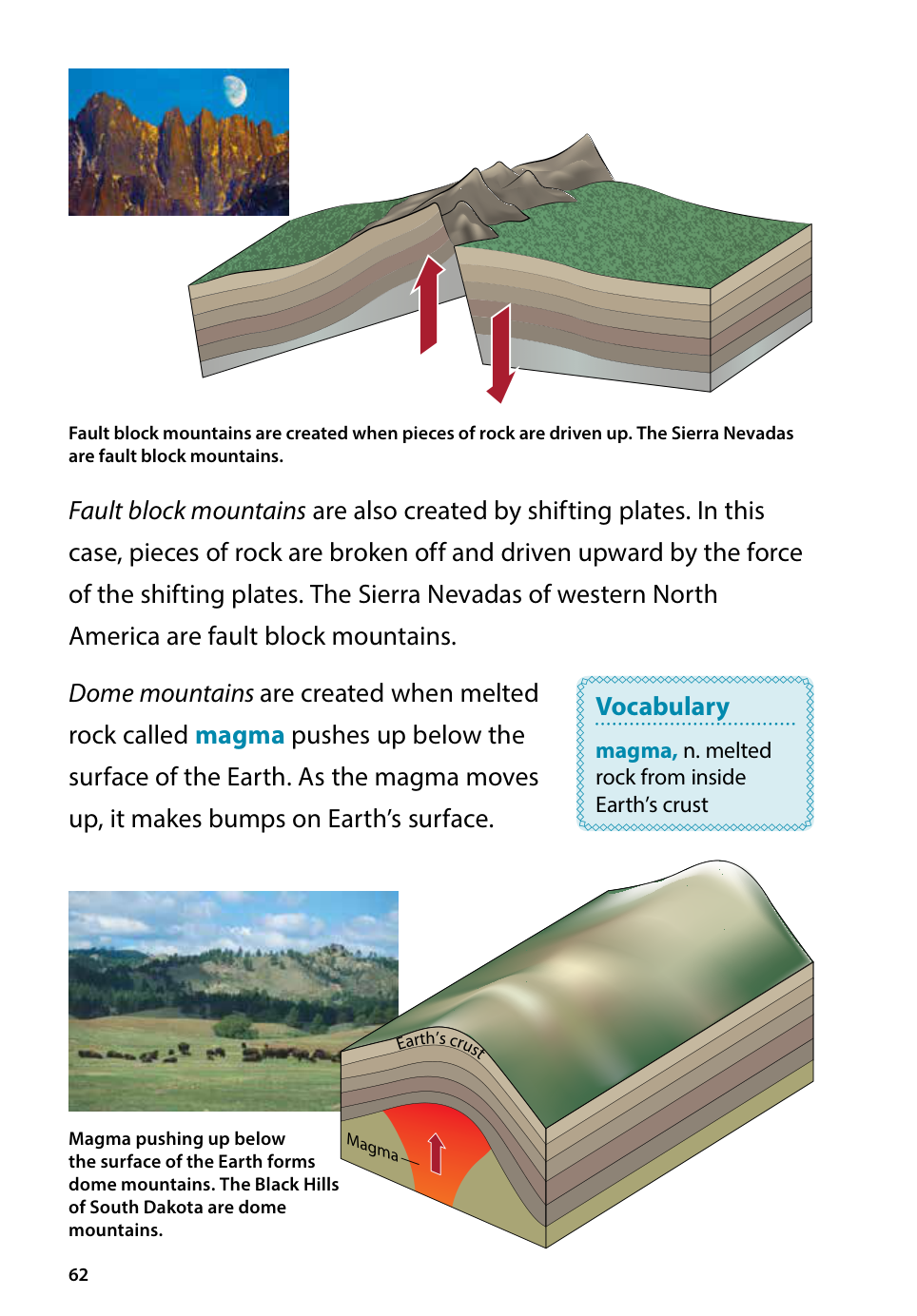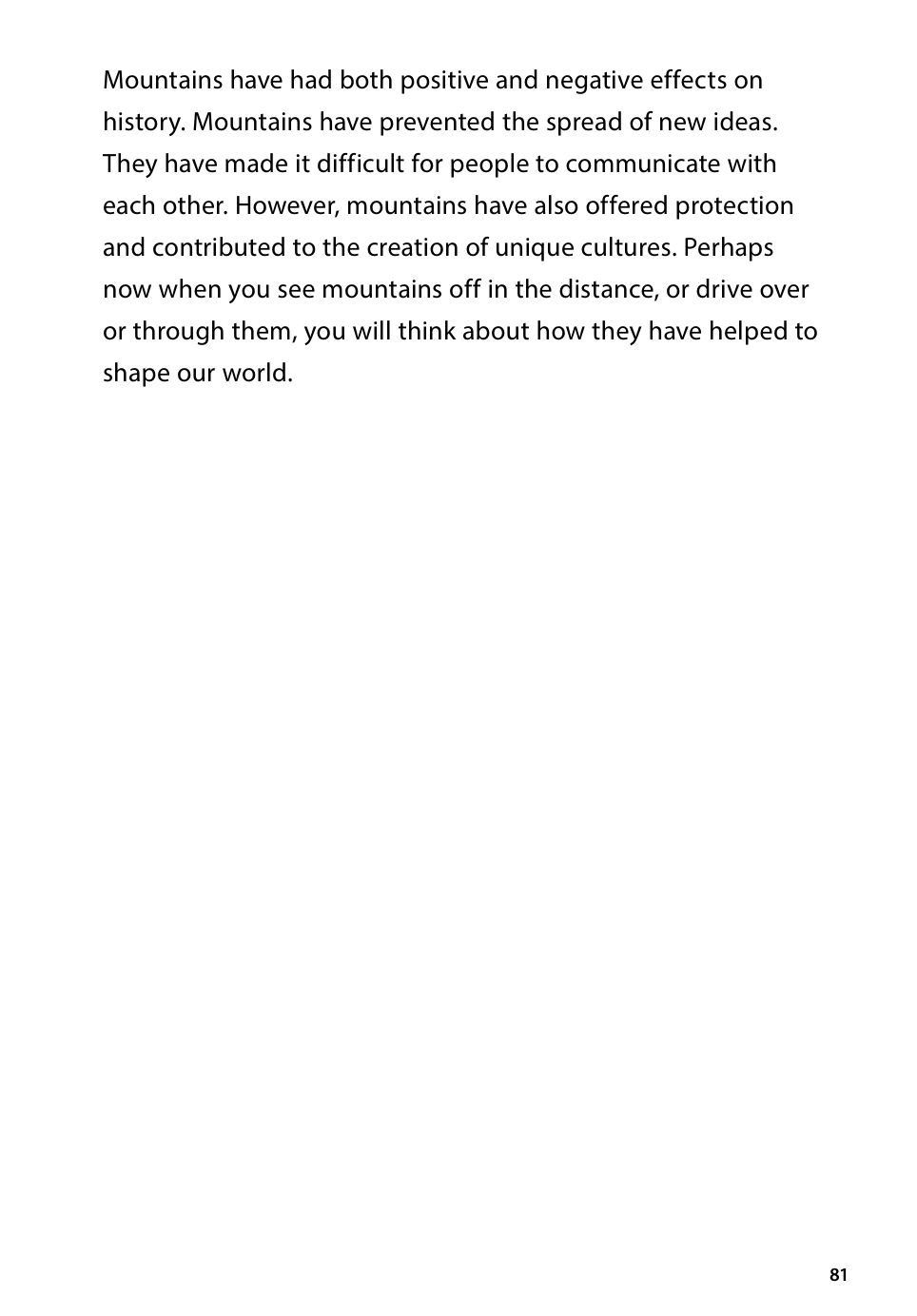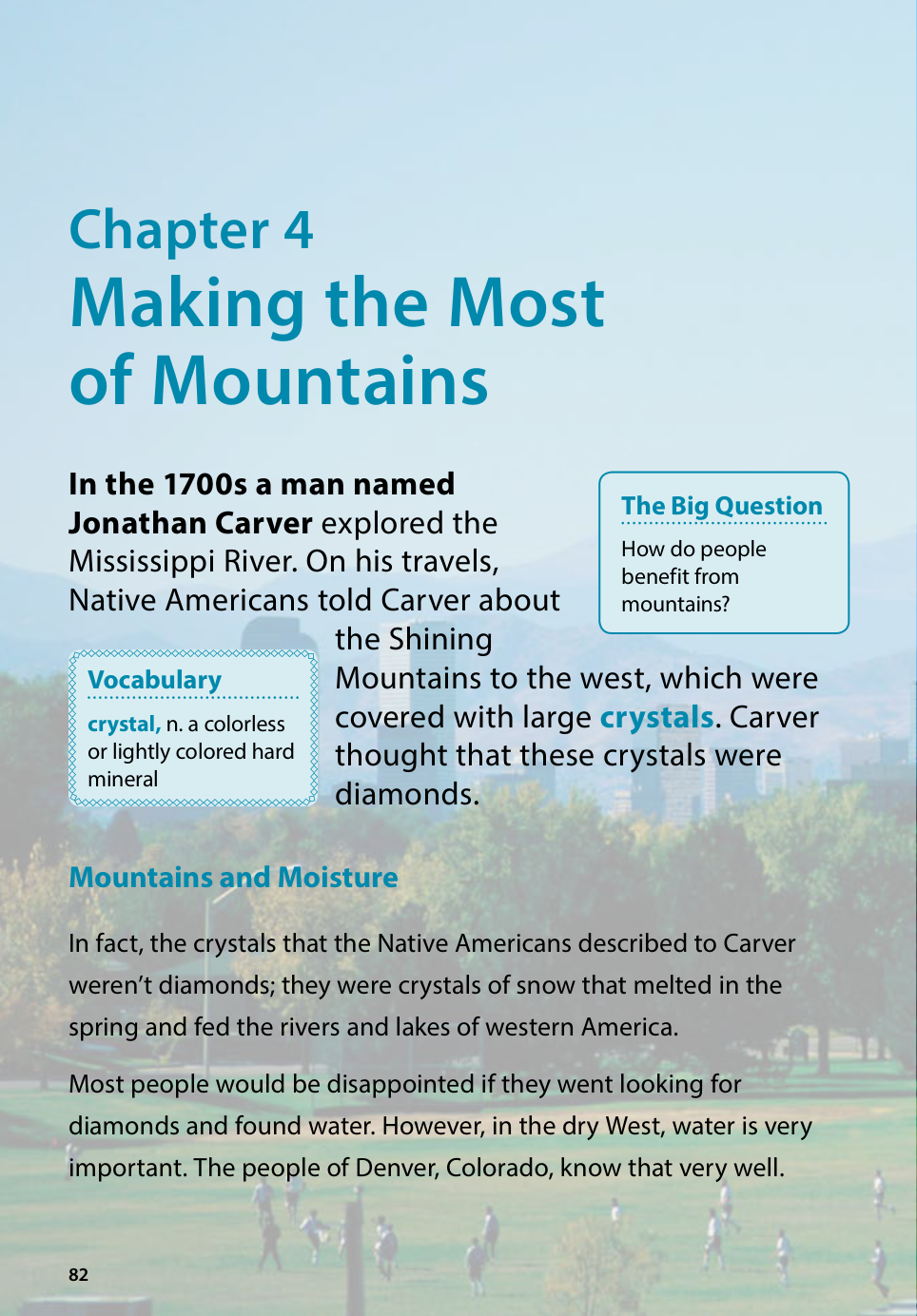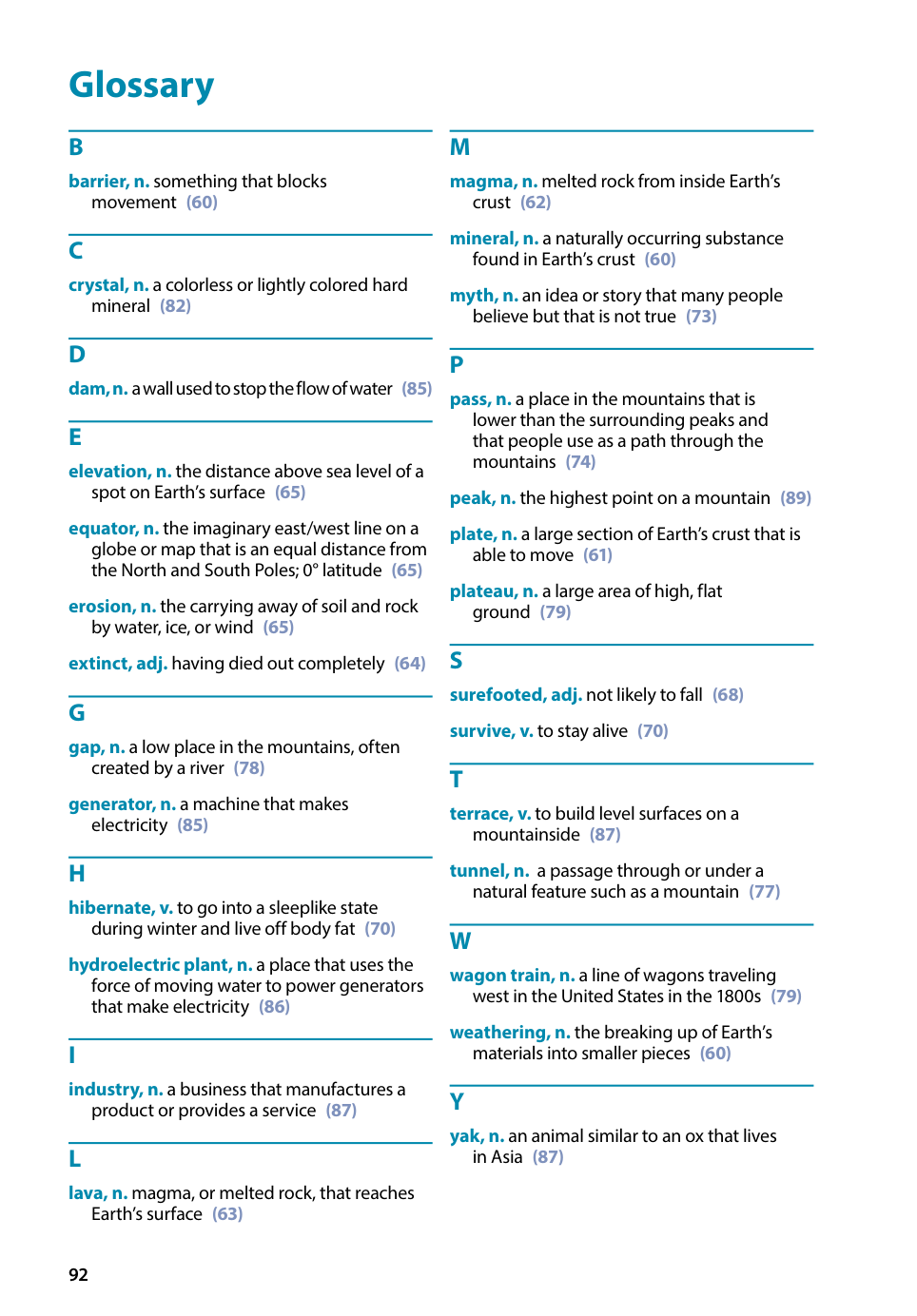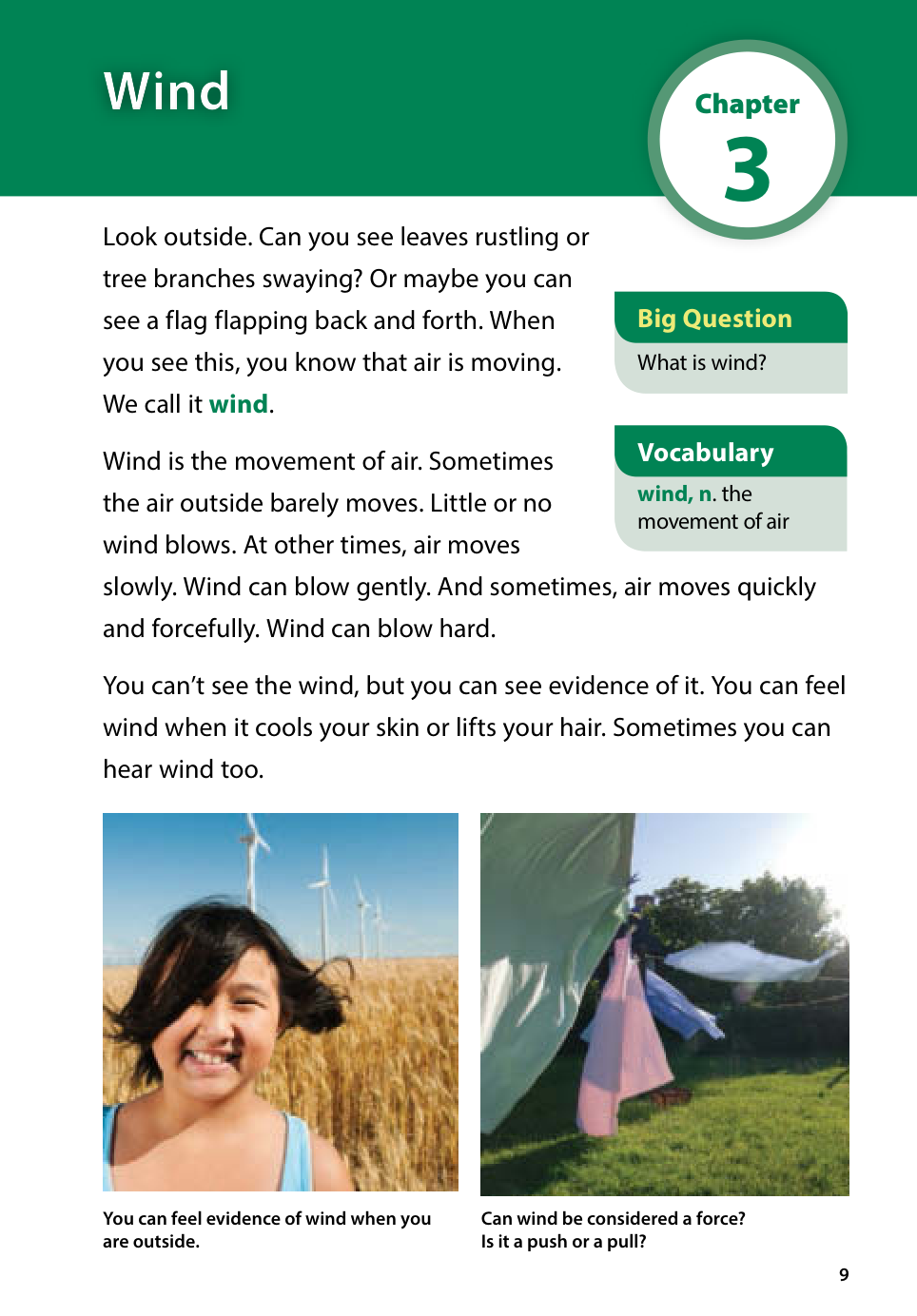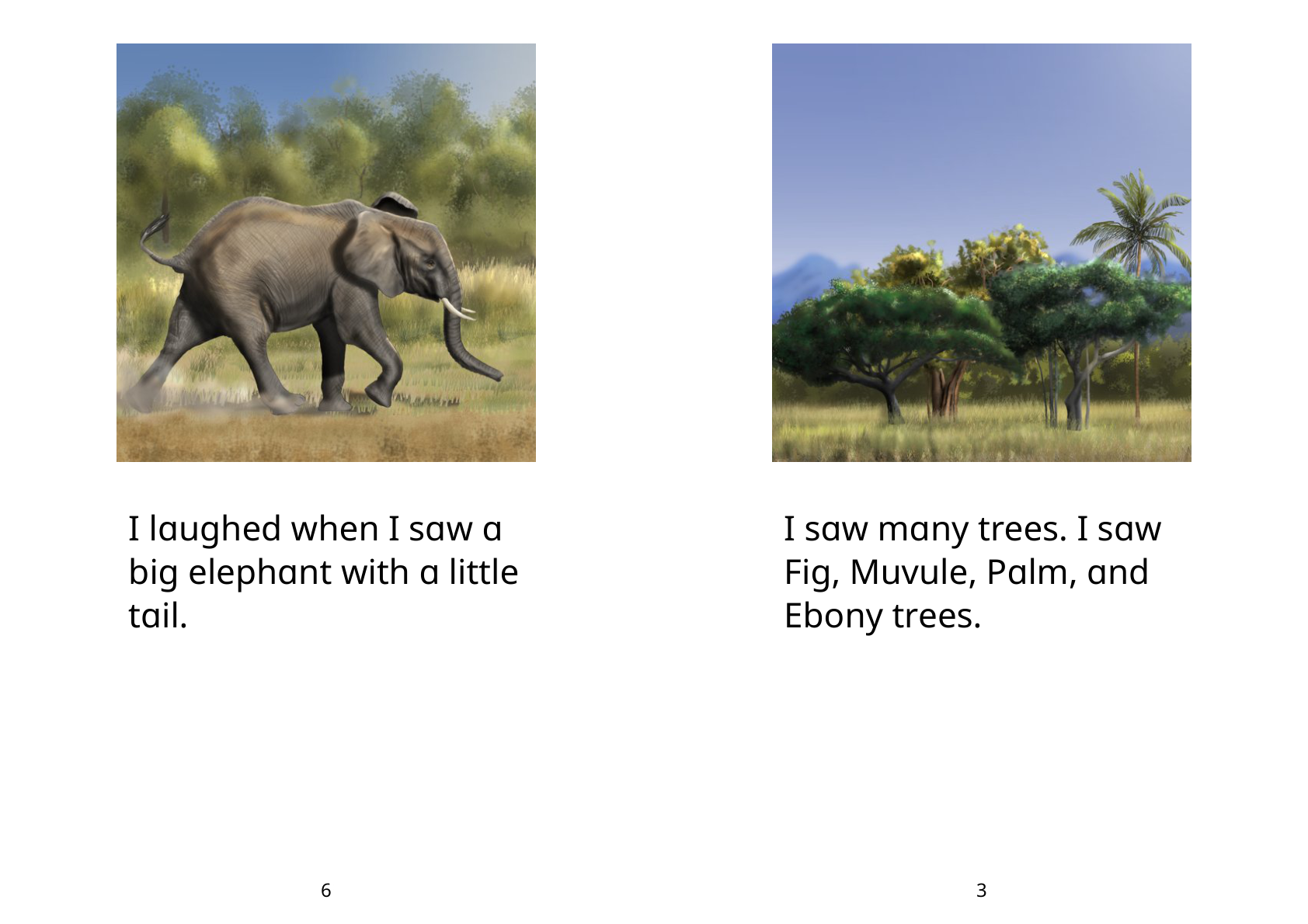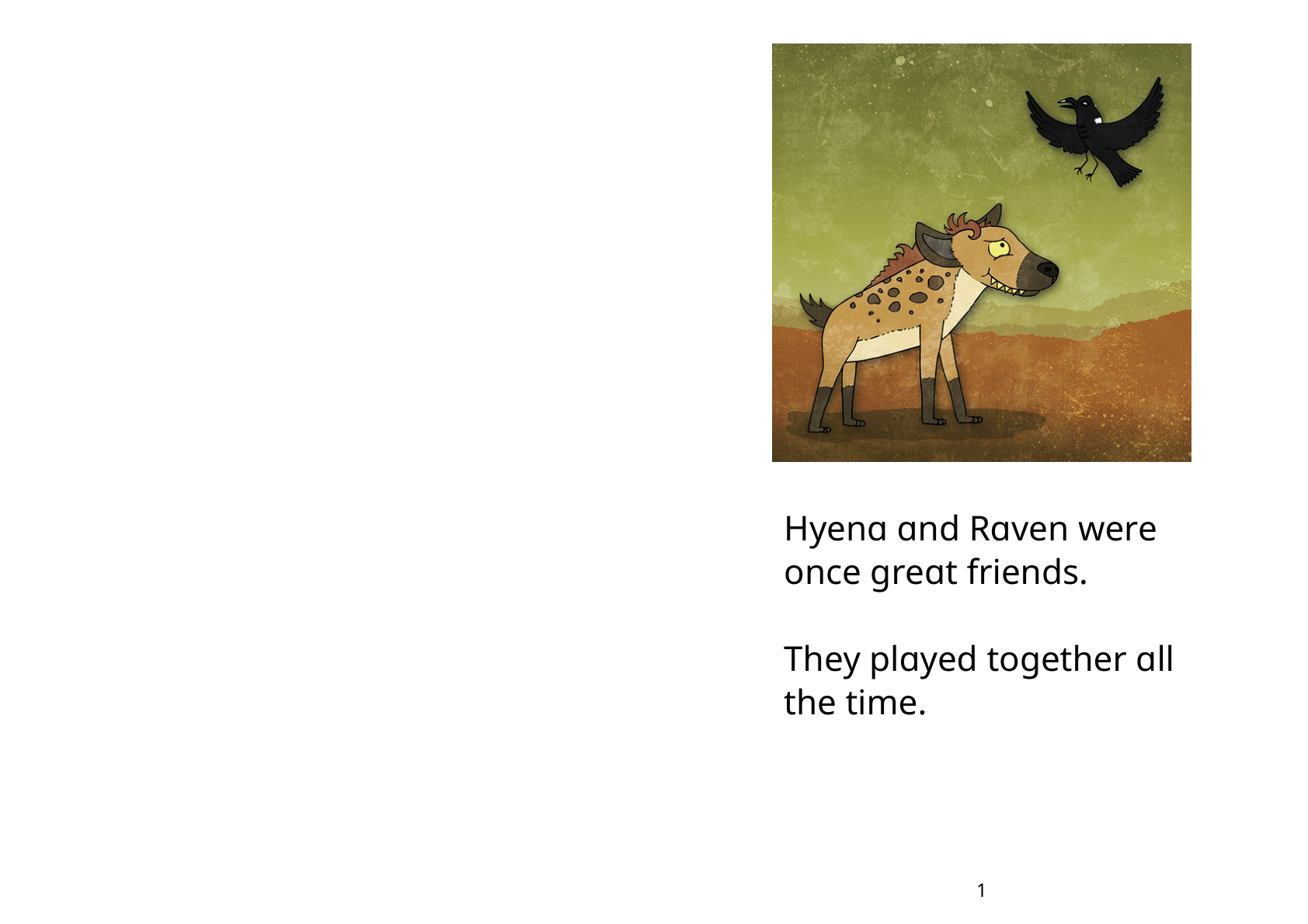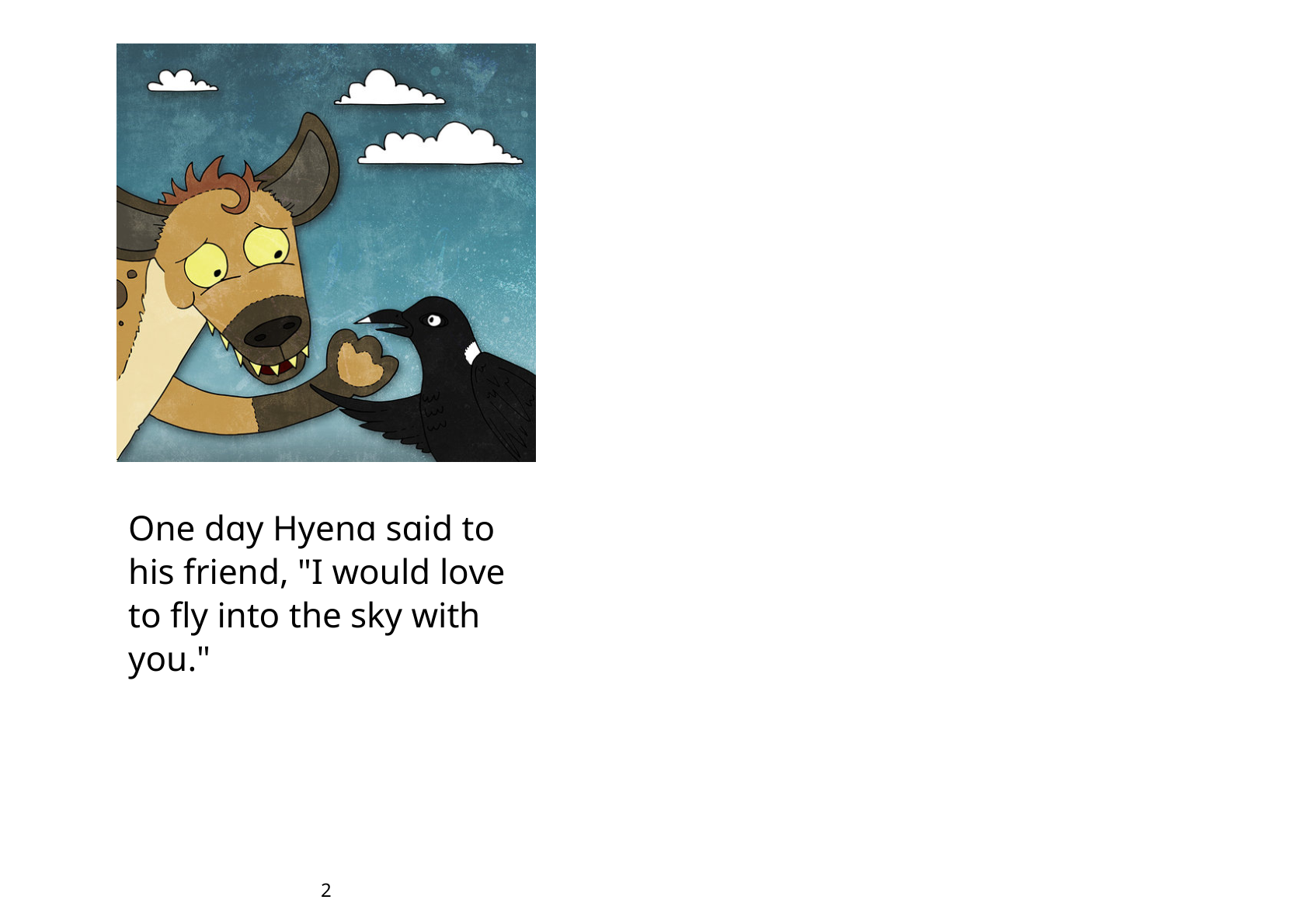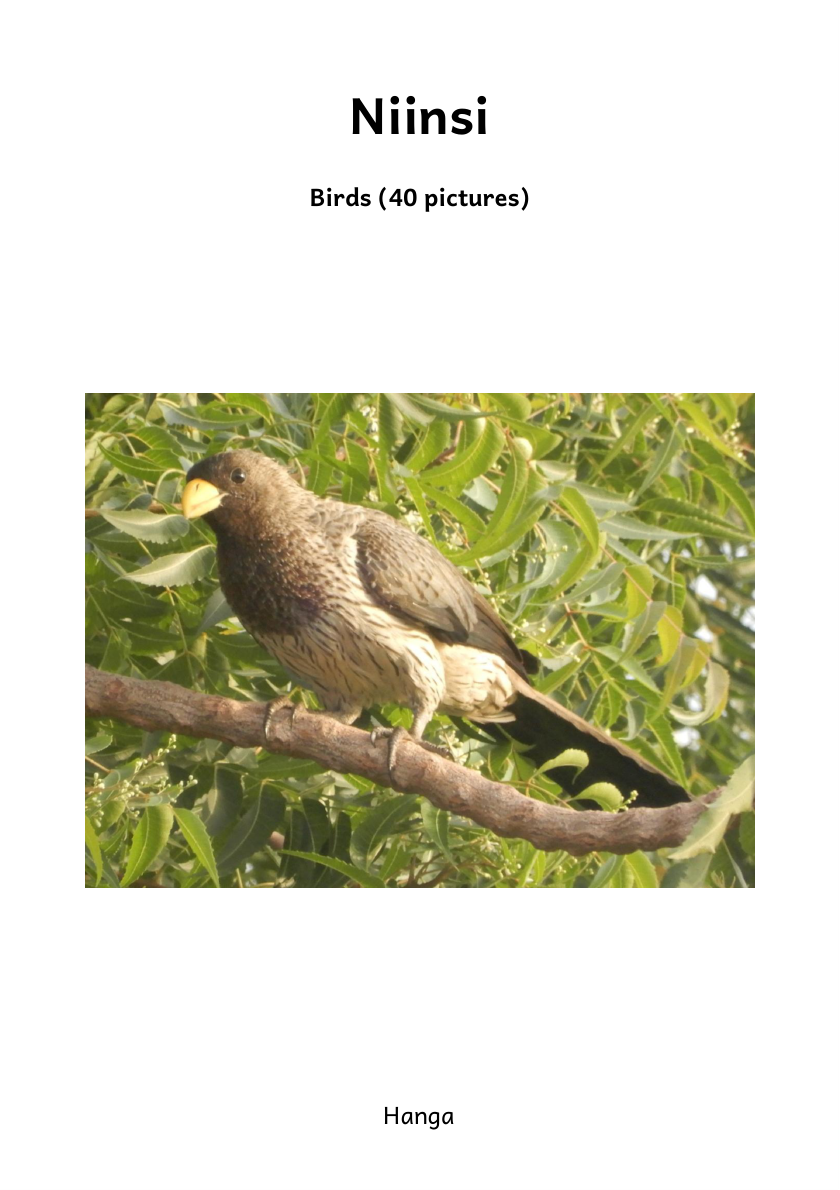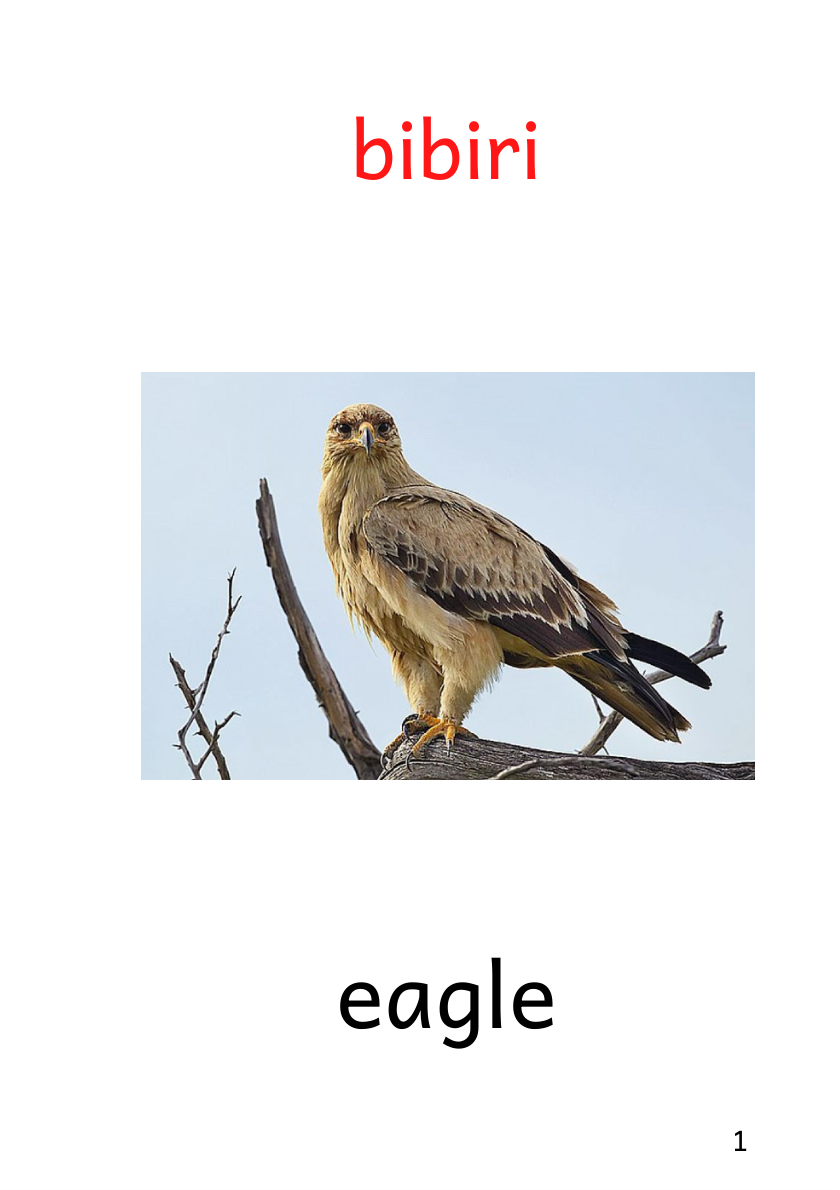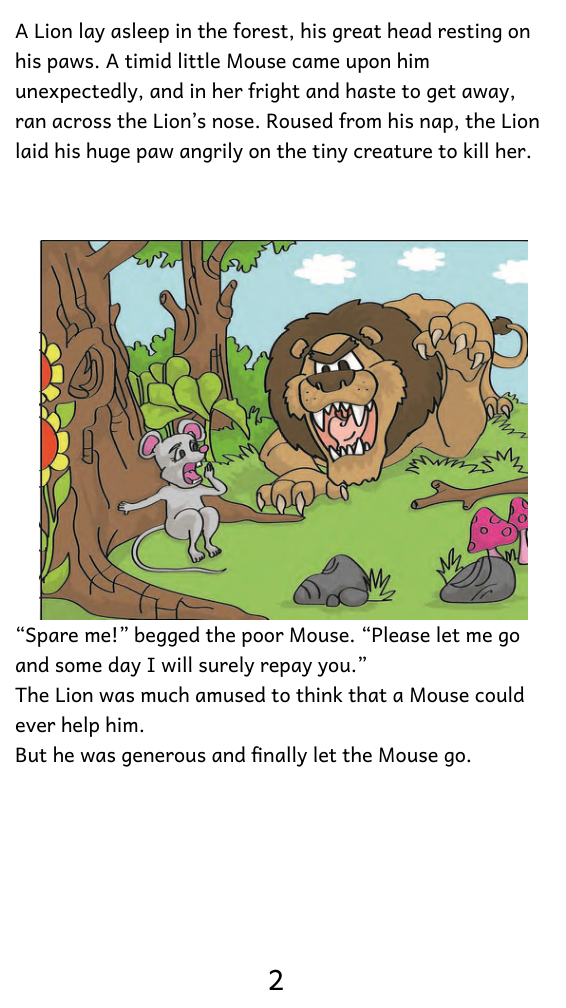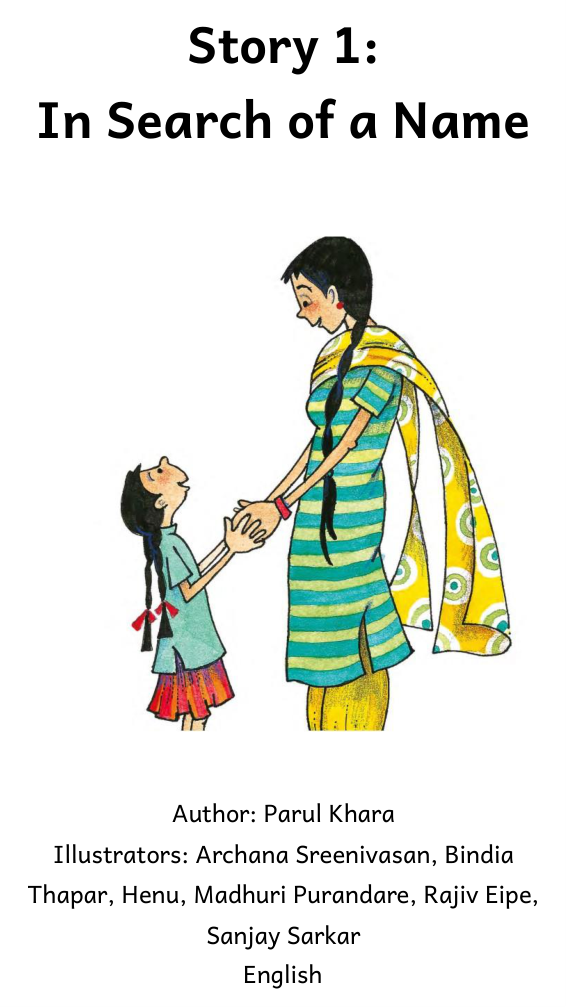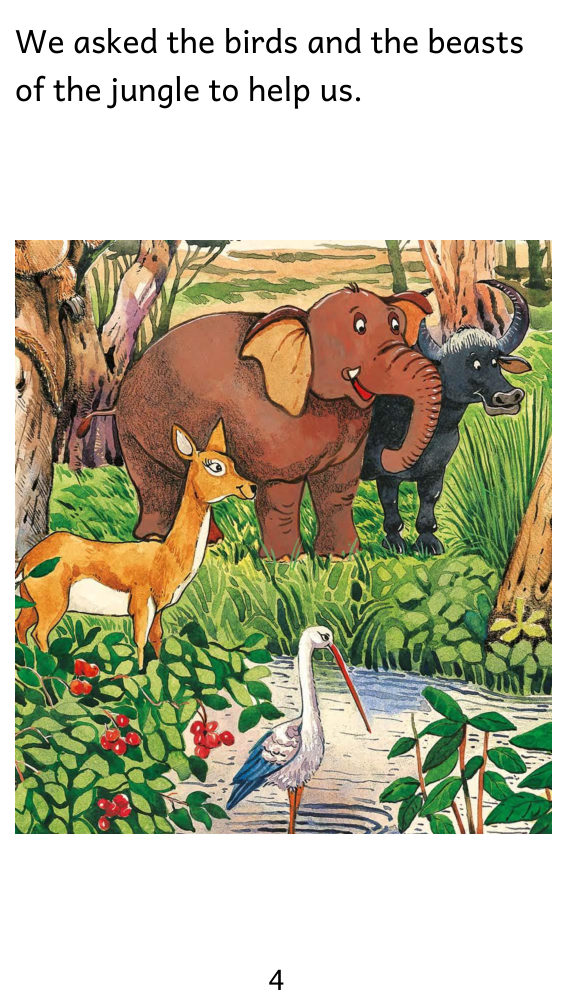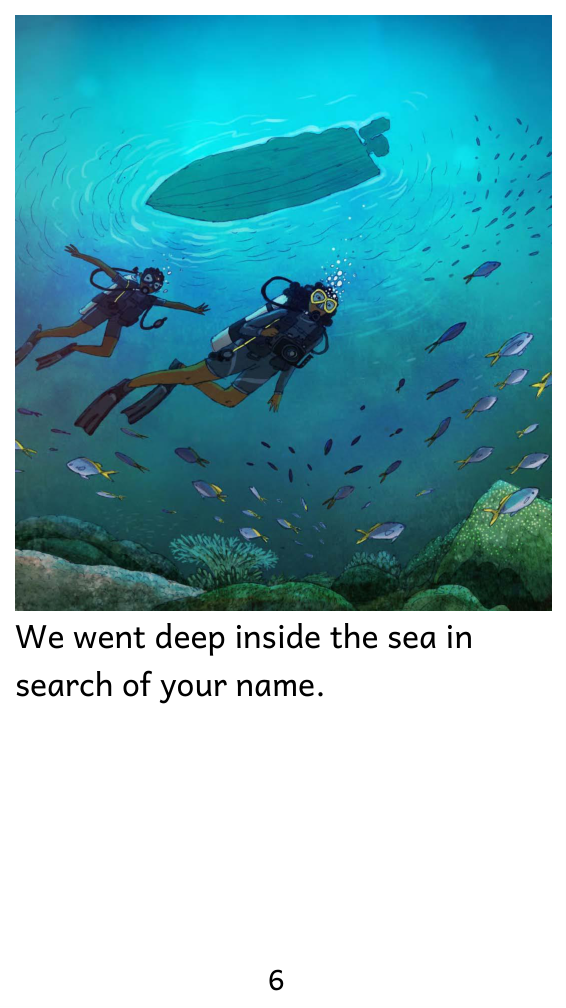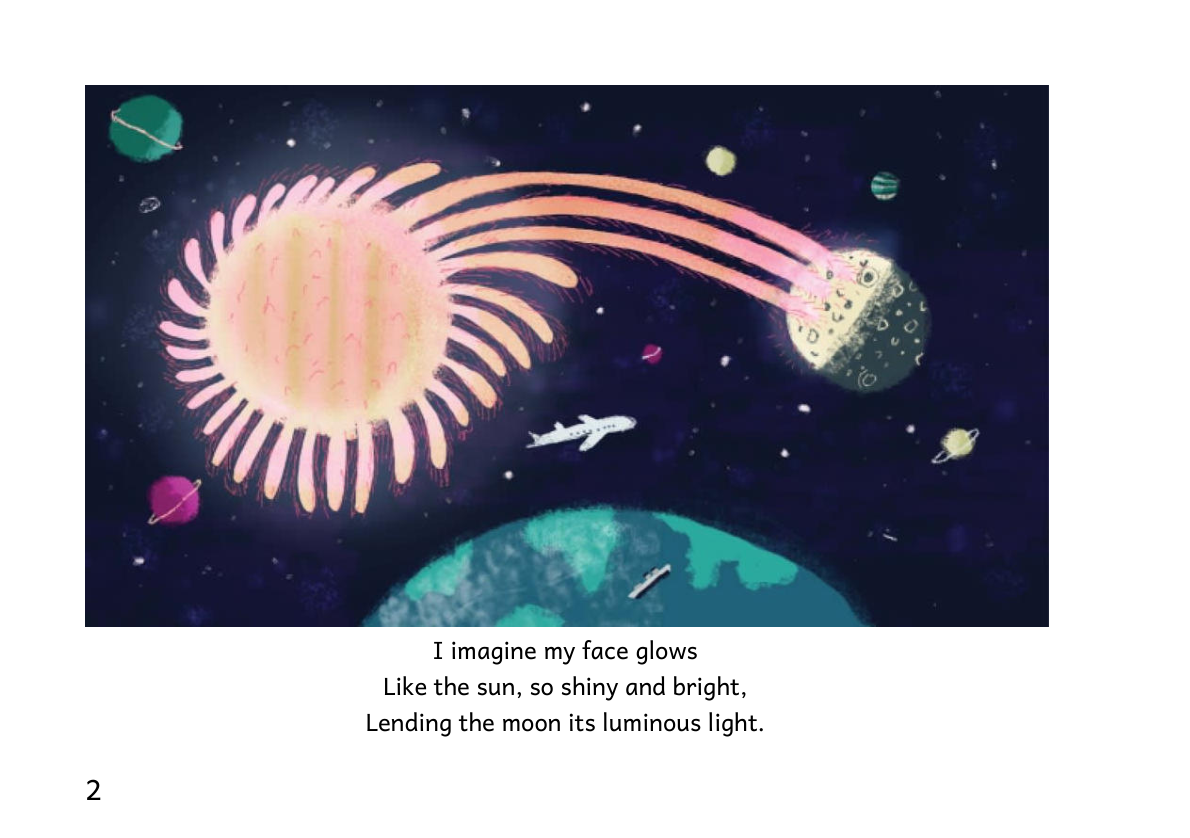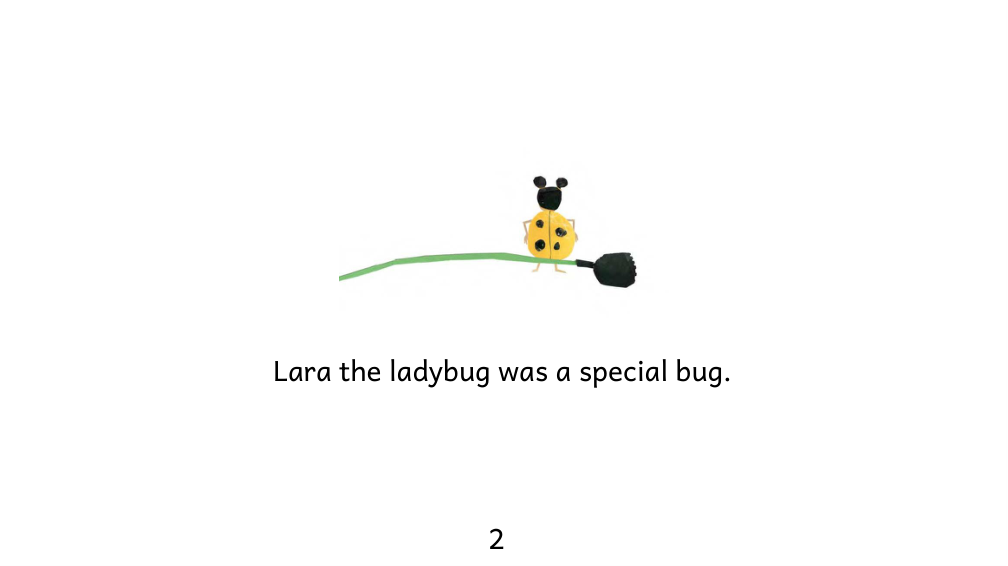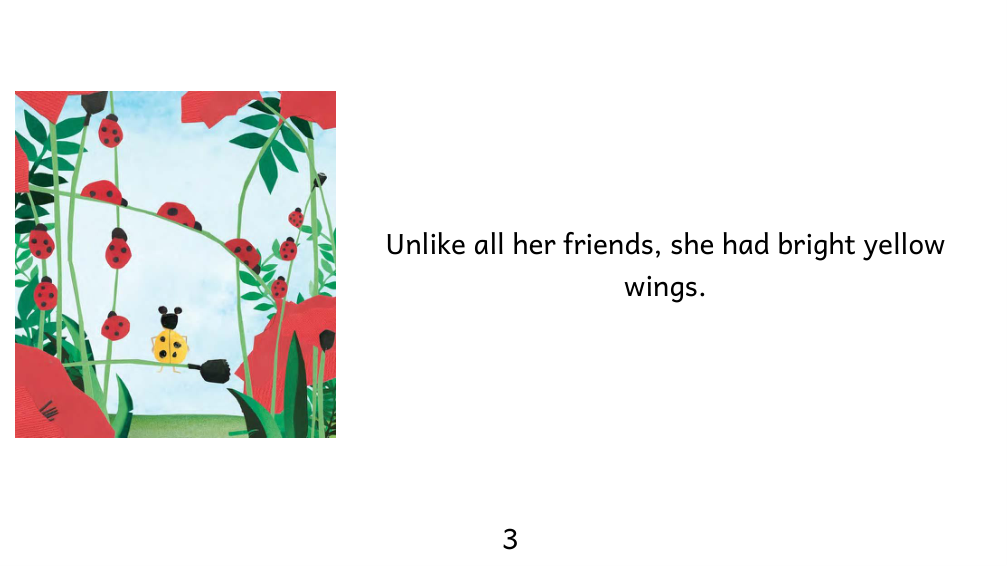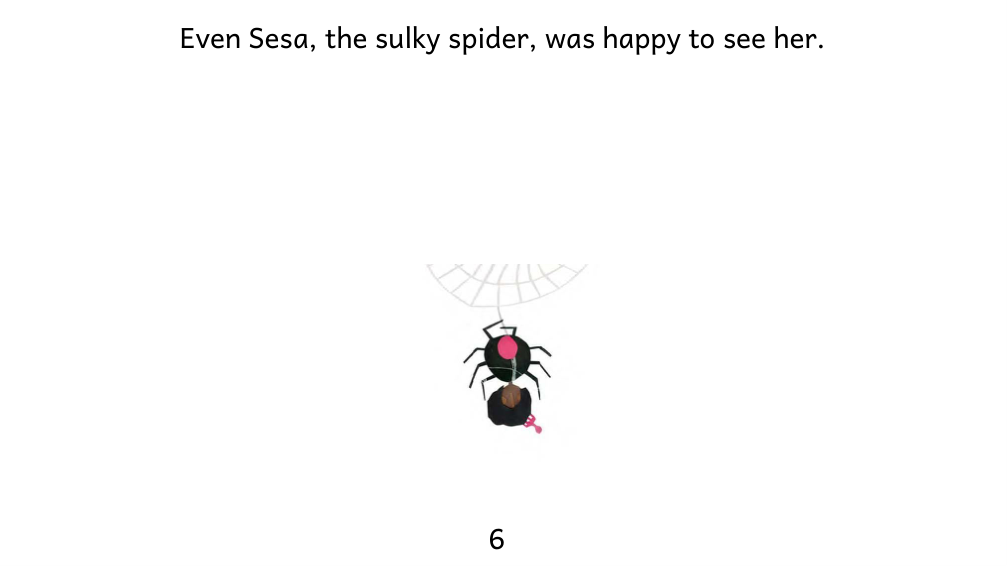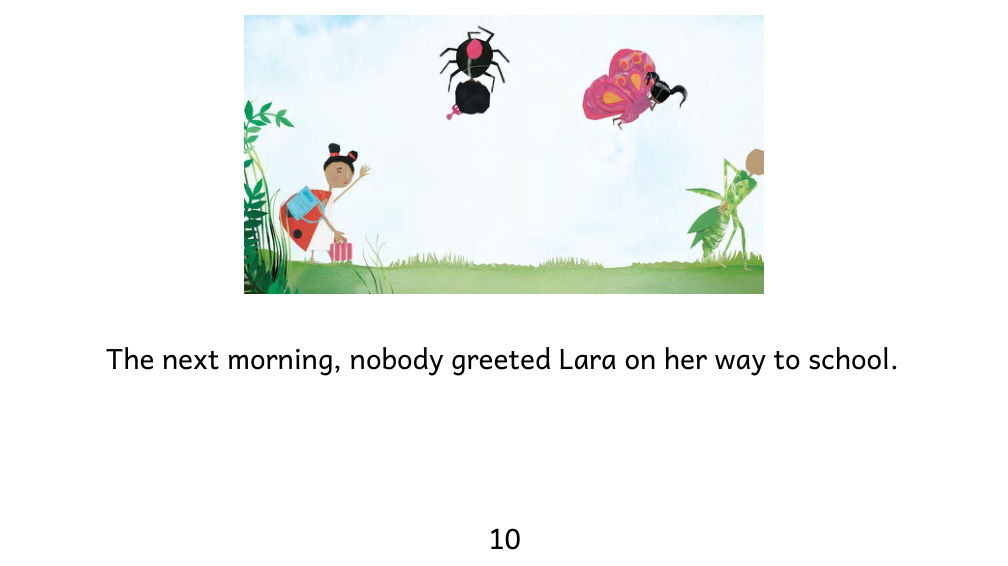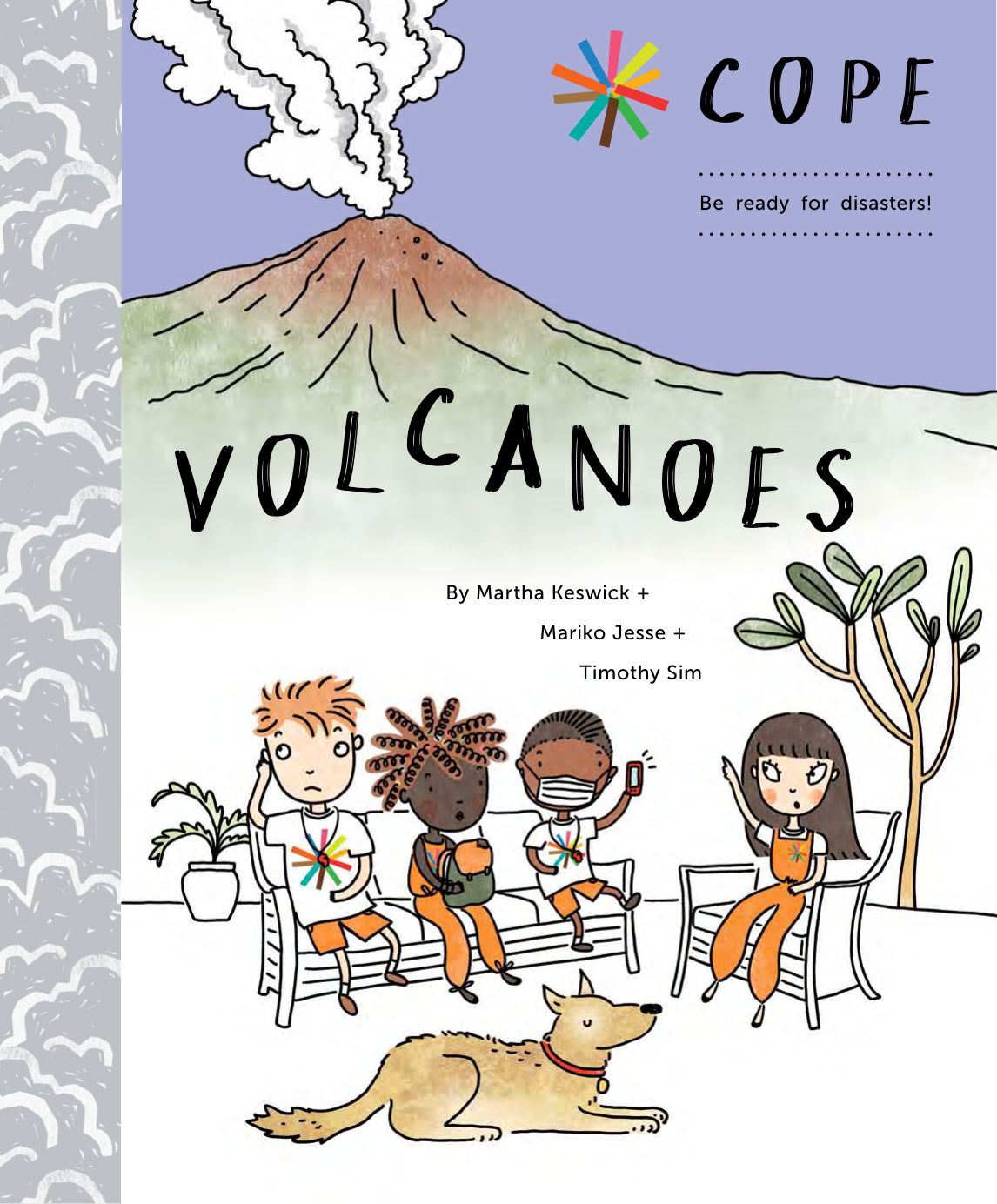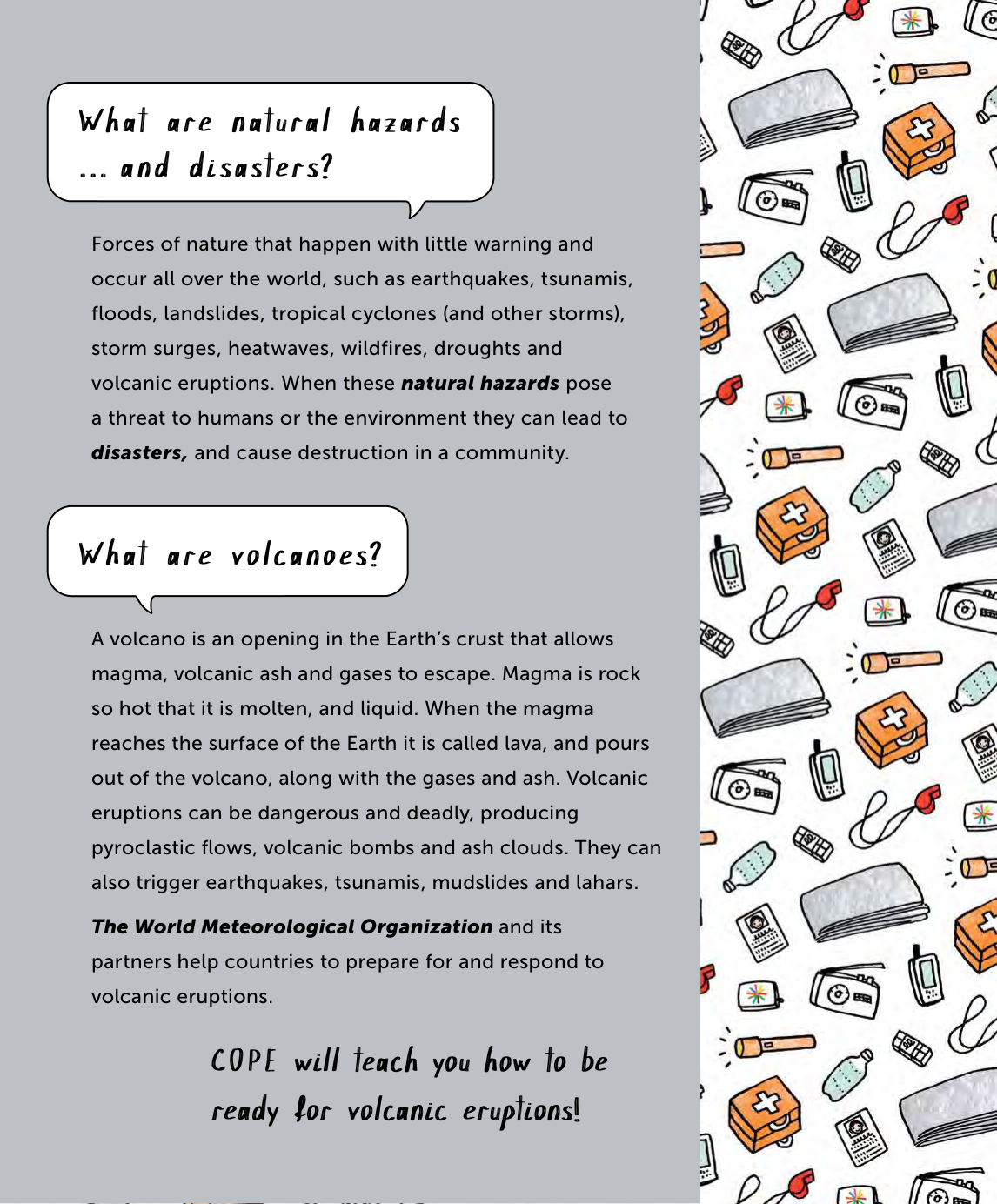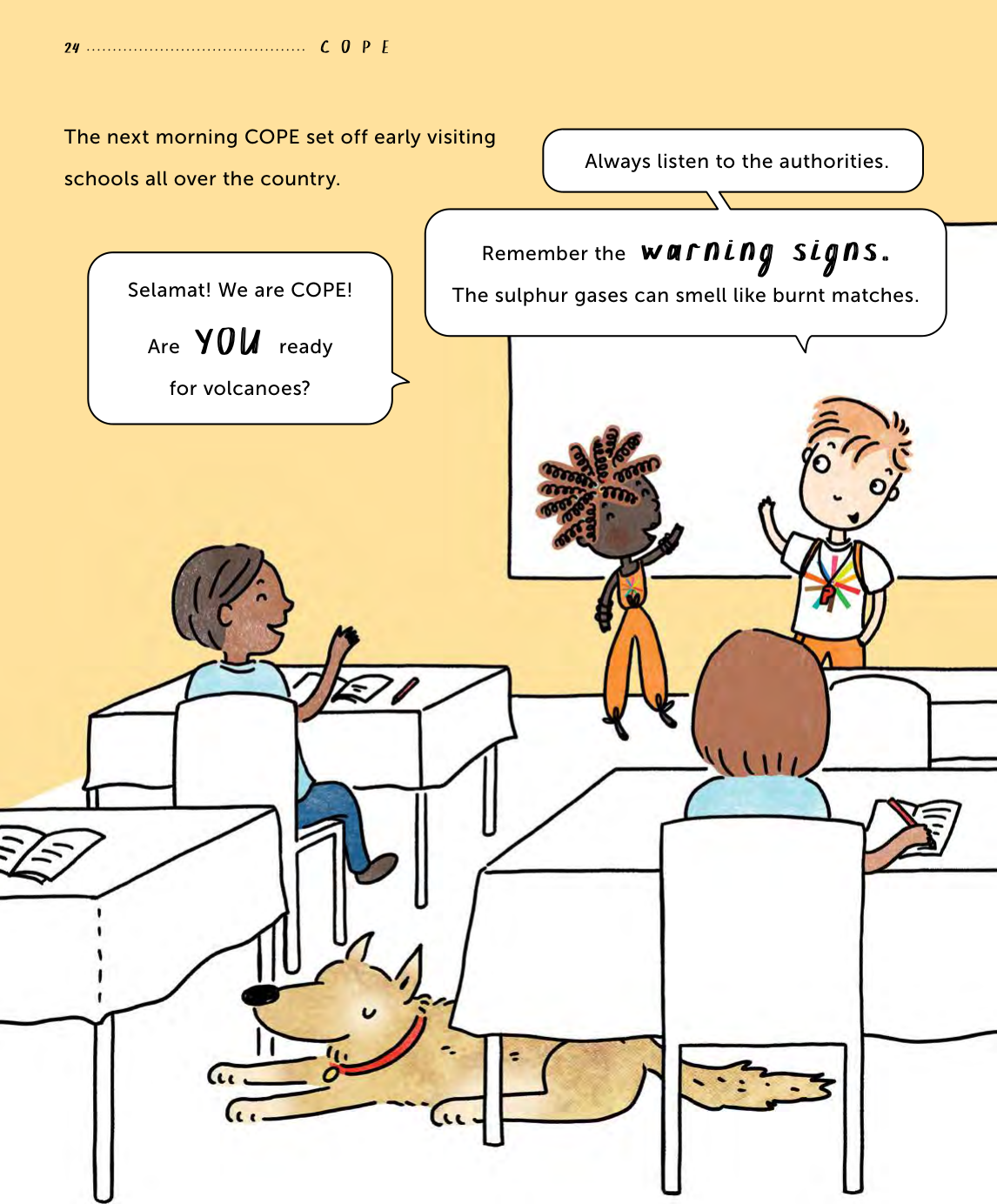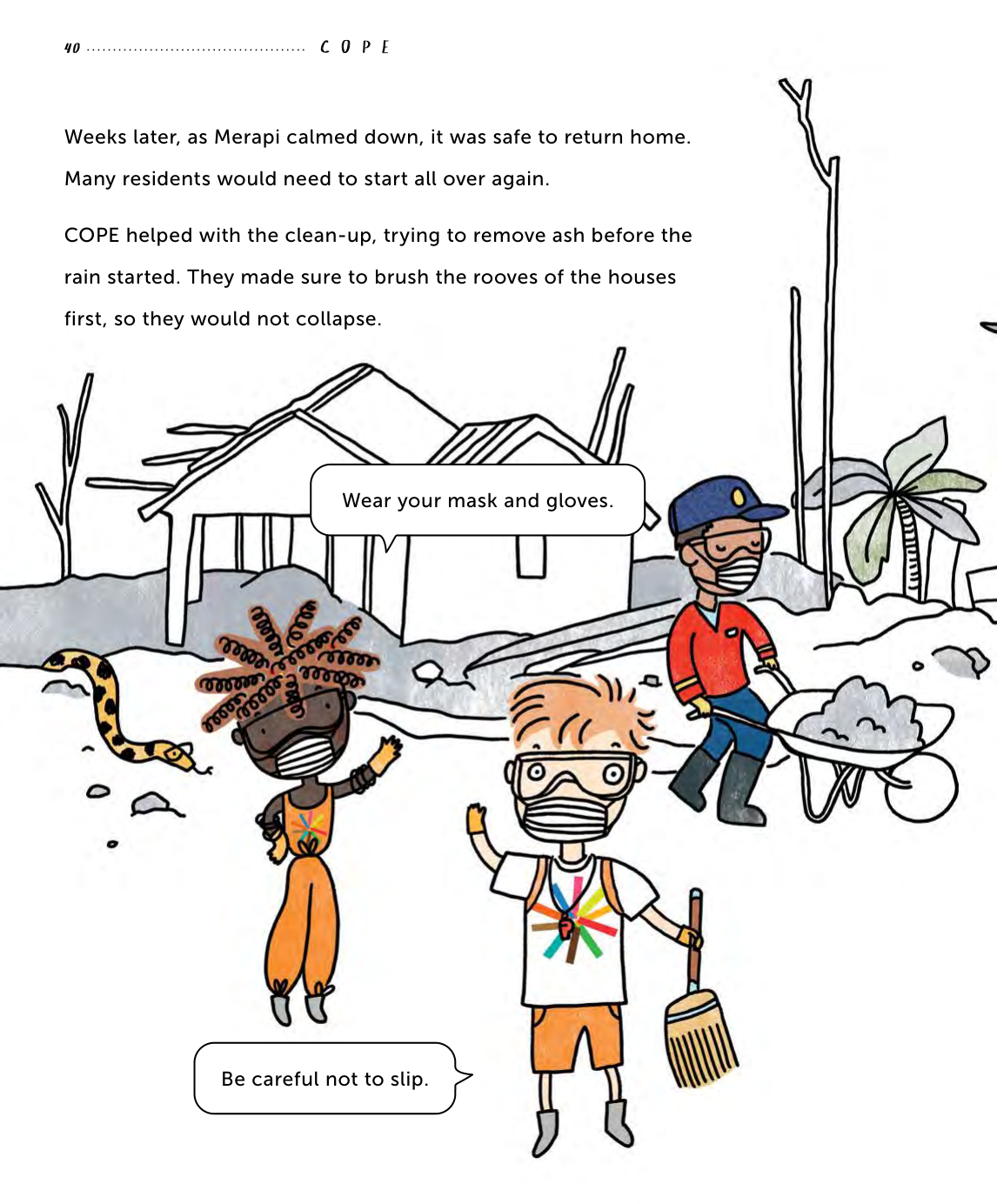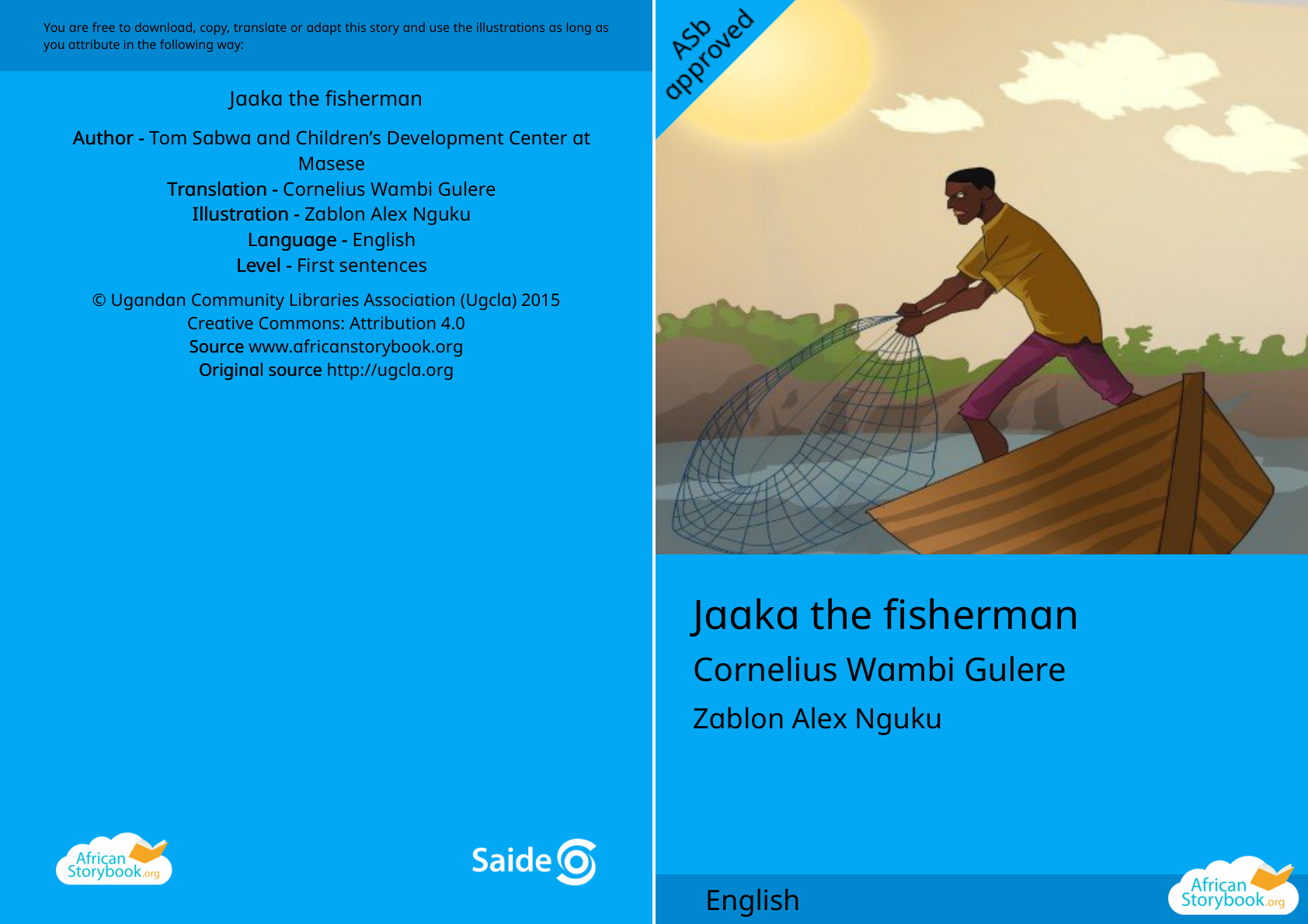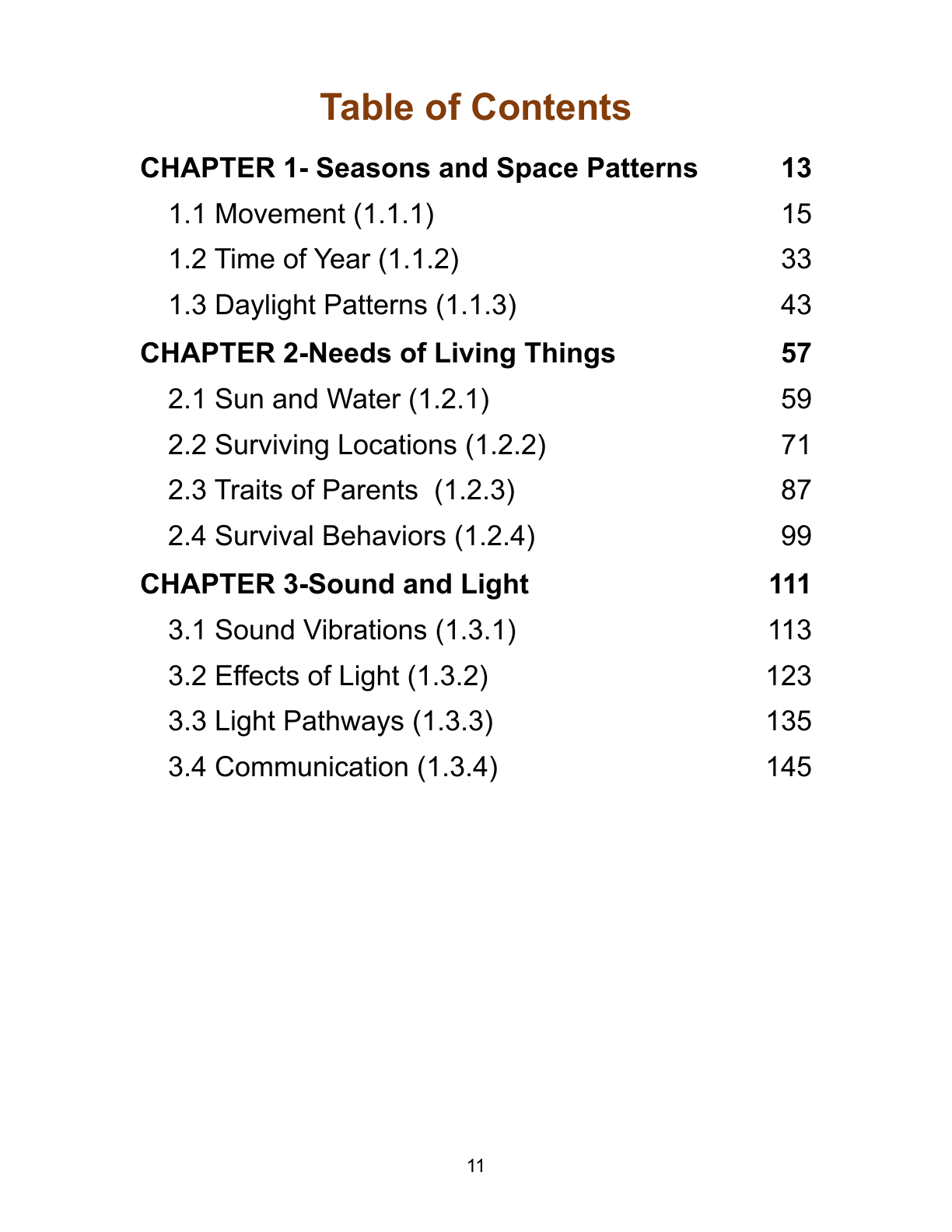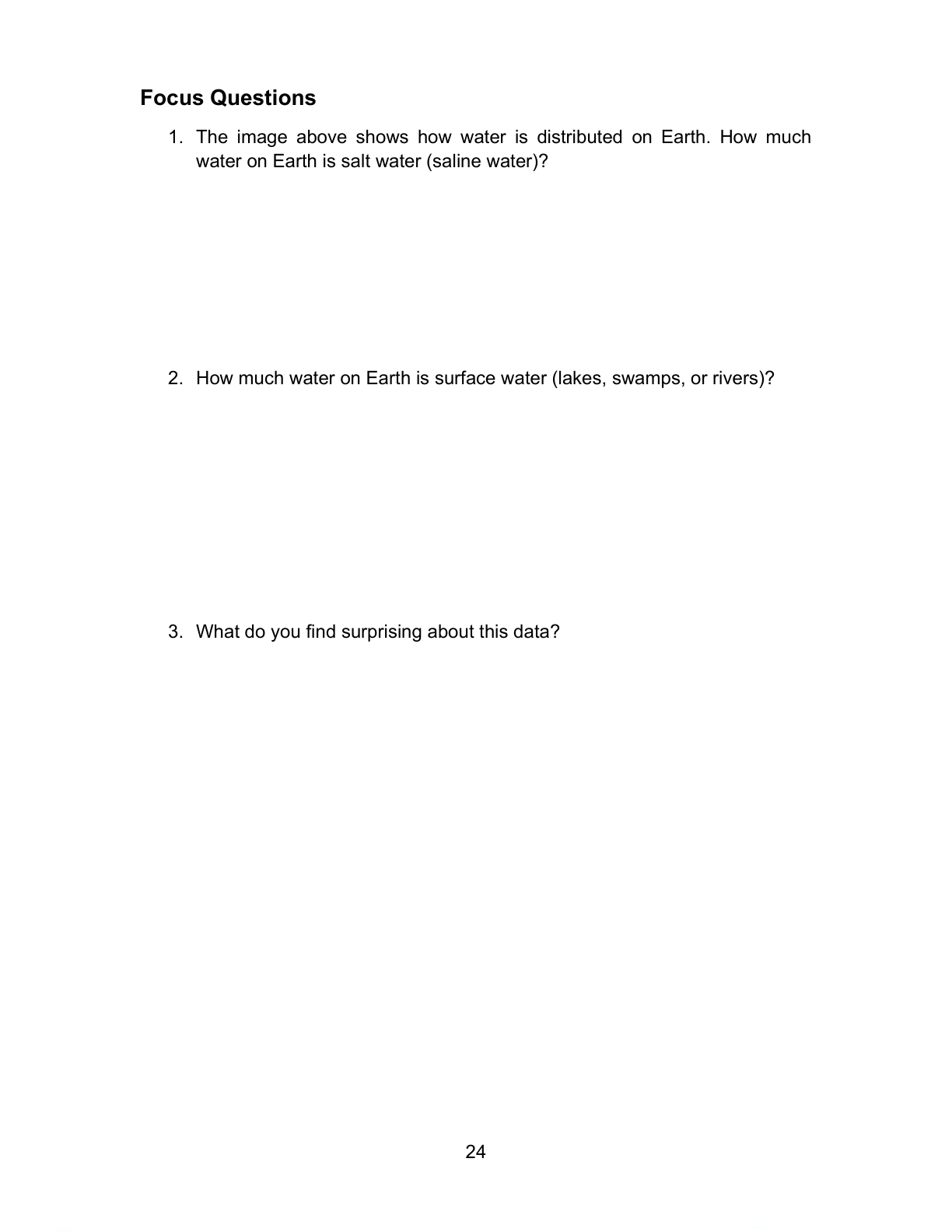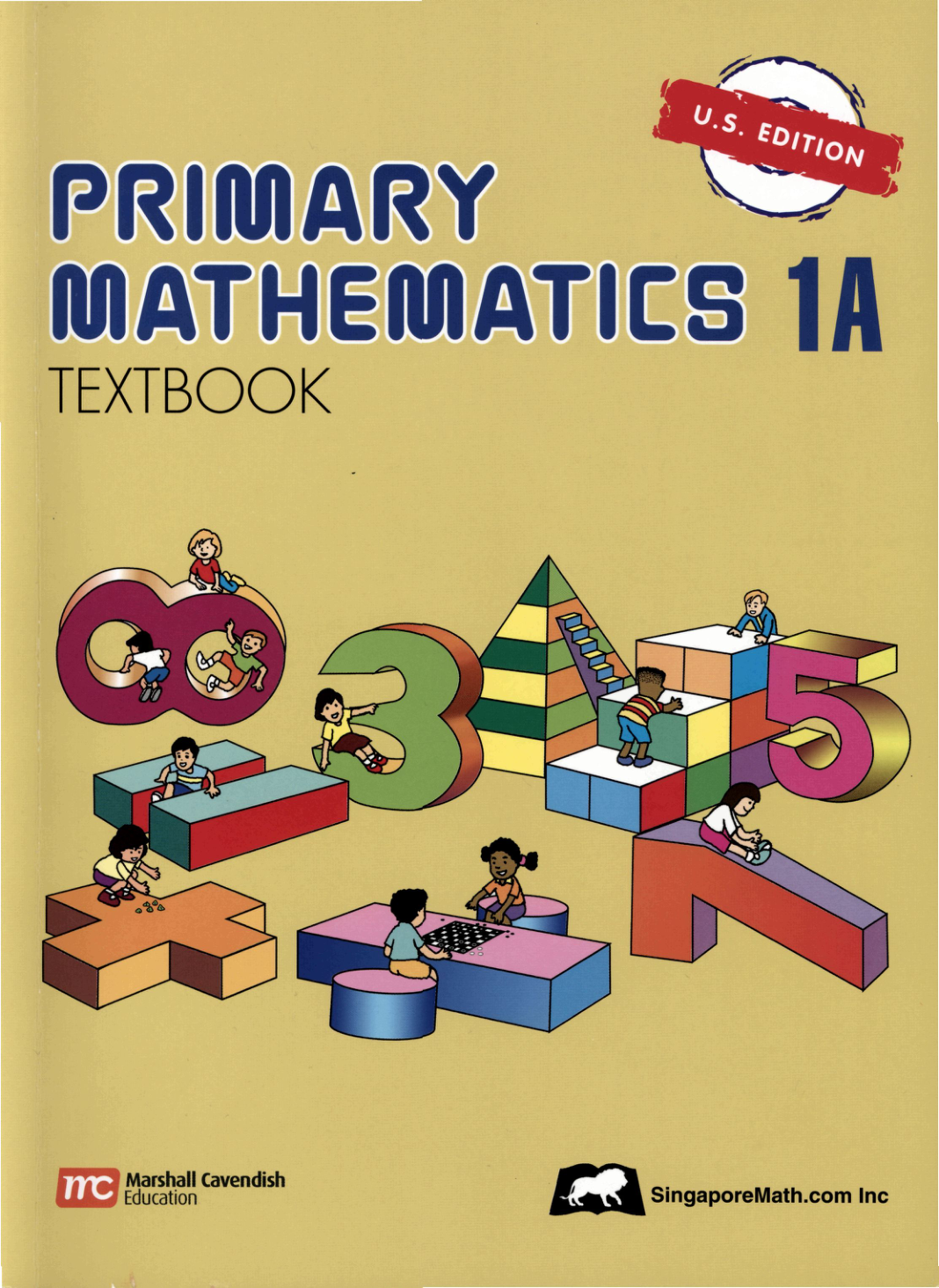Page Test 0
29320
100%
FOREWORD
This is a pivotal time in the history of the Ministry of Education and Technical Education (MOETE) in Egypt.
We are embarking on the transformation of Egypt’s K-12 education system starting in September 2018 with KG1, KG2 and Primary 1 continuing to be rolled out year after year until 2030.
We are transforming the way in which students learn to prepare Egypt’s youth to succeed in a future world that we cannot entirely imagine.
MOETE is very proud to present this new series of textbooks, Discover, with the accompanying digital learning materials that captures its vision of the transformation journey.
This is the result of much consultation, much thought and a lot of work.
We have drawn on the best expertise and experience from national and international organizations and education professionals to support us in translating our vision into an innovative national curriculum framework and exciting and inspiring print and digital learning materials.
The MOETE extends its deep appreciation to its own “Central Administration for Curriculum Development” (CACD) and “Discovery Education”.
This transformation of Egypt’s education system would not have been possible without the significant support of Egypt’s current president, His Excellency President Abdel Fattah El-Sisi.
Overhauling the education system is part of the president’s vision of ‘rebuilding the Egyptian citizen’ and it is closely coordinated with the ministries of higher education & scientific research, Culture, and Youth & Sports.
Education 2.0 is only a part in a bigger national effort to propel Egypt to the ranks of developed countries and to ensure a great future to all of its citizens.
Evaluation Results
Expected
Actual
FOREWORD
section_heading
section_heading
This is a pivotal time in the history of the Ministry of Education and Technical Education (MOETE) in Egypt.
section_text
section_text
We are embarking on the transformation of Egypt's K-12 education system starting in September 2018 with KG1, KG2 and Primary 1 continuing to be rolled out year after year until 2030.
section_text
section_text
We are transforming the way in which students learn to prepare Egypt's youth to succeed in a future world that we cannot entirely imagine.
section_text
section_text
MOETE is very proud to present this new series of textbooks, Discover, with the accompanying digital learning materials that captures its vision of the transformation journey.
section_text
section_text
This is the result of much consultation, much thought and a lot of work.
section_text
section_text
We have drawn on the best expertise and experience from national and international organizations and education professionals to support us in translating our vision into an innovative national curriculum framework and exciting and inspiring print and digital learning materials.
section_text
section_text
The MOETE extends its deep appreciation to its own "Central Administration for Curriculum Development" (CACD) and "Discovery Education".
section_text
section_text
This transformation of Egypt's education system would not have been possible without the significant support of Egypt's current president, His Excellency President Abdel Fattah El-Sisi.
section_text
section_text
Overhauling the education system is part of the president's vision of 'rebuilding the Egyptian citizen' and it is closely coordinated with the ministries of higher education & scientific research, Culture, and Youth & Sports.
section_text
section_text
Education 2.0 is only a part in a bigger national effort to propel Egypt to the ranks of developed countries and to ensure a great future to all of its citizens.
section_text
section_text
reasoning
Extracted all visible text from the provided page image and organized it into logical groups, breaking paragraphs into individual sentences. Assigned appropriate text_type values based on roles (heading vs. section text). No math or lists found.
Page Test 1
29321
35%
CONTENTS
CHAPTER 7
LESSON 1
EXPLORING MONEY
LESSON 2
COMPOSING AN AMOUNT
LESSON 3
APPLICATIONS ON MONEY
LESSON 4
MORE APPLICATIONS ON MONEY
LESSON 5
WORK WITH MONEY
LESSON 6
SAVING AND PURCHASING
LESSON 7
PLACE VALUE FOR AMOUNTS
LESSON 8
ADDING USING MONEY
LESSON 9
SUBTRACTING USING MONEY
LESSON 10
APPLICATIONS ON ADDING AND SUBTRACTING MONEY
CHAPTER 8
LESSON 1
EXPLORING EVEN NUMBER AND ODD NUMBER
LESSON 2
DOUBLE THE NUMBER
LESSON 3
AN EVEN OR AN ODD NUMBER?
LESSON 4
PATTERNS
LESSON 5
MORE PATTERNS
LESSON 6
EXPLORING THE PATTERN RULE.
LESSON 7
CREATE PATTERNS INVOLVING ADDITION AND SUBTRACTION
LESSON 8
EXPLORING ARRAYS
LESSON 9
REPEATED ADDITION AND ARRAYS
LESSON 10
CREATING ARRAYS
CHAPTER 9
LESSON 1
ESTIMATING THE SUM AND THE DIFFERENCE
LESSON 2
ROUNDING TO THE NEAREST 10
LESSON 3
APPLICATIONS ON ESTIMATING AND ROUNDING
LESSON 4
ADDING TWO 2-DIGIT NUMBERS WITH REGROUPING
LESSON 5
MORE OF ADDING TWO 2-DIGIT NUMBERS WITH REGROUPING
LESSON 6
ADDING TWO 3-DIGIT NUMBERS WITH REGROUPING
LESSON 7
MORE OF ADDING TWO 3-DIGIT NUMBERS WITH REGROUPING
LESSON 8
ADDING TWO NUMBERS WITH OR WITHOUT REGROUPING USING MODELS
LESSON 9
ADDING TWO NUMBERS WITH OR WITHOUT REGROUPING
LESSON 10
STRATEGIES FOR ADDING TWO NUMBERS
CHAPTER 10
LESSON 1
THE RELATION BETWEEN ADDING AND SUBTRACTING USING THE FAMILY FACTS
LESSON 2
SUBTRACTION USING THE NUMBER LINE
LESSON 3
STORY PROBLEMS ON SUBTRACTION
LESSON 4
BREAKING NUMBERS
LESSON 5
SUBTRACTING NUMBERS USING THE MENTAL MATHEMATICS
LESSON 6
PATTERNS OF SUBTRACTING NUMBERS WITH REGROUPING
LESSON 7
STRATEGIES OF SUBTRACTING TWO NUMBERS USING MODELS
LESSON 8
MORE STRATEGIES OF SUBTRACTING TWO NUMBERS USING MODELS
LESSON 9
SUBTRACTING TWO NUMBERS WITH REGROUPING
LESSON 10
ADDING AND SUBTRACTING TWO NUMBERS WITH REGROUPING
CHAPTER 11
LESSON 1
CREATING FRACTIONS (HALVES, THIRDS AND QUARTERS)
LESSON 2
DIFFERENT FORMS FOR THE FRACTIONS (HALVES, THIRDS AND QUARTERS)
LESSON 3
REPRESENTING AND WRITING FRACTIONS OF NUMERATORS MORE THAN 1
LESSON 4
FRACTION AS A PART OF A WHOLE
LESSON 5
FRACTIONS’ CARDS
LESSON 6
WORK WITH FRACTIONS
LESSON 7
FRACTION AS A PART OF A GROUP
LESSON 8
APPLICATIONS ON A FRACTION AS A PART OF A GROUP
LESSON 9
STORY PROBLEMS INVOLVE FRACTIONS
LESSON 10
APPLICATIONS ON FRACTIONS
CHAPTER 12
LESSON 1
READING AND INTERPRETING DATA
LESSON 2
A SCALE FOR REPRESENTING DATA USING THE BARGRAPH
LESSON 3
A SCALE FOR REPRESENTING DATA USING THE PICTOGRAPH
LESSON 4
APPLICATIONS ON ARRAYS
LESSON 5
WORK WITH ARRAYS
LESSON 6
STRATEGIES FOR ADDITION AND SUBTRACTION
LESSON 7
STORY PROBLEMS ON ADDING AND SUBTRACTING
LESSON 8
WORK WITH ADDING AND SUBTRACTING
LESSON 9
WHAT DID YOU LEARN IN MATHEMATICS?
LESSON 10
WRITING A MESSAGE ABOUT MATHEMATICS
Evaluation Results
Expected
Actual
CONTENTS
chapter_title
standalone_text
CHAPTER 7
chapter_title
chapter_title
LESSON 1
section_heading
activity_number
EXPLORING MONEY
section_heading
section_heading
LESSON 2
section_heading
activity_number
COMPOSING AN AMOUNT
section_heading
section_heading
LESSON 3
section_heading
activity_number
APPLICATIONS ON MONEY
section_heading
section_heading
LESSON 4
section_heading
activity_number
MORE APPLICATIONS ON MONEY
section_heading
section_heading
LESSON 5
section_heading
activity_number
WORK WITH MONEY
section_heading
section_heading
LESSON 6
section_heading
activity_number
SAVING AND PURCHASING
section_heading
section_heading
LESSON 7
section_heading
activity_number
PLACE VALUE FOR AMOUNTS
section_heading
section_heading
LESSON 8
section_heading
activity_number
ADDING USING MONEY
section_heading
section_heading
LESSON 9
section_heading
activity_number
SUBTRACTING USING MONEY
section_heading
section_heading
LESSON 10
section_heading
activity_number
APPLICATIONS ON ADDING AND SUBTRACTING MONEY
section_heading
section_heading
CHAPTER 8
chapter_title
chapter_title
LESSON 1
section_heading
activity_number
EXPLORING EVEN NUMBER AND ODD NUMBER
section_heading
section_heading
LESSON 2
section_heading
activity_number
DOUBLE THE NUMBER
section_heading
section_heading
LESSON 3
section_heading
activity_number
AN EVEN OR AN ODD NUMBER?
section_heading
section_heading
LESSON 4
section_heading
activity_number
PATTERNS
section_heading
section_heading
LESSON 5
section_heading
activity_number
MORE PATTERNS
section_heading
section_heading
LESSON 6
section_heading
activity_number
EXPLORING THE PATTERN RULE.
section_heading
section_heading
LESSON 7
section_heading
activity_number
CREATE PATTERNS INVOLVING ADDITION AND SUBTRACTION
section_heading
section_heading
LESSON 8
section_heading
activity_number
EXPLORING ARRAYS
section_heading
section_heading
LESSON 9
section_heading
activity_number
REPEATED ADDITION AND ARRAYS
section_heading
section_heading
LESSON 10
section_heading
activity_number
CREATING ARRAYS
section_heading
section_heading
CHAPTER 9
chapter_title
chapter_title
LESSON 1
section_heading
activity_number
ESTIMATING THE SUM AND THE DIFFERENCE
section_heading
section_heading
LESSON 2
section_heading
activity_number
ROUNDING TO THE NEAREST 10
section_heading
section_heading
LESSON 3
section_heading
activity_number
APPLICATIONS ON ESTIMATING AND ROUNDING
section_heading
section_heading
LESSON 4
section_heading
activity_number
ADDING TWO 2-DIGIT NUMBERS WITH REGROUPING
section_heading
section_heading
LESSON 5
section_heading
activity_number
MORE OF ADDING TWO 2-DIGIT NUMBERS WITH REGROUPING
section_heading
section_heading
LESSON 6
section_heading
activity_number
ADDING TWO 3-DIGIT NUMBERS WITH REGROUPING
section_heading
section_heading
LESSON 7
section_heading
activity_number
MORE OF ADDING TWO 3-DIGIT NUMBERS WITH REGROUPING
section_heading
section_heading
LESSON 8
section_heading
activity_number
ADDING TWO NUMBERS WITH OR WITHOUT REGROUPING USING MODELS
section_heading
section_heading
LESSON 9
section_heading
activity_number
ADDING TWO NUMBERS WITH OR WITHOUT REGROUPING
section_heading
section_heading
LESSON 10
section_heading
activity_number
STRATEGIES FOR ADDING TWO NUMBERS
section_heading
section_heading
CHAPTER 10
chapter_title
chapter_title
LESSON 1
section_heading
activity_number
THE RELATION BETWEEN ADDING AND SUBTRACTING USING THE FAMILY FACTS
section_heading
section_heading
LESSON 2
section_heading
activity_number
SUBTRACTION USING THE NUMBER LINE
section_heading
section_heading
LESSON 3
section_heading
activity_number
STORY PROBLEMS ON SUBTRACTION
section_heading
section_heading
LESSON 4
section_heading
activity_number
BREAKING NUMBERS
section_heading
section_heading
LESSON 5
section_heading
activity_number
SUBTRACTING NUMBERS USING THE MENTAL MATHEMATICS
section_heading
section_heading
LESSON 6
section_heading
activity_number
PATTERNS OF SUBTRACTING NUMBERS WITH REGROUPING
section_heading
section_heading
LESSON 7
section_heading
activity_number
STRATEGIES OF SUBTRACTING TWO NUMBERS USING MODELS
section_heading
section_heading
LESSON 8
section_heading
activity_number
MORE STRATEGIES OF SUBTRACTING TWO NUMBERS USING MODELS
section_heading
section_heading
LESSON 9
section_heading
activity_number
SUBTRACTING TWO NUMBERS WITH REGROUPING
section_heading
section_heading
LESSON 10
section_heading
activity_number
ADDING AND SUBTRACTING TWO NUMBERS WITH REGROUPING
section_heading
section_heading
CHAPTER 11
chapter_title
chapter_title
LESSON 1
section_heading
activity_number
CREATING FRACTIONS (HALVES, THIRDS AND QUARTERS)
section_heading
section_heading
LESSON 2
section_heading
activity_number
DIFFERENT FORMS FOR THE FRACTIONS (HALVES, THIRDS AND QUARTERS)
section_heading
section_heading
LESSON 3
section_heading
activity_number
REPRESENTING AND WRITING FRACTIONS OF NUMERATORS MORE THAN 1
section_heading
section_heading
LESSON 4
section_heading
activity_number
FRACTION AS A PART OF A WHOLE
section_heading
section_heading
LESSON 5
section_heading
activity_number
FRACTIONS' CARDS
section_heading
section_heading
LESSON 6
section_heading
activity_number
WORK WITH FRACTIONS
section_heading
section_heading
LESSON 7
section_heading
activity_number
FRACTION AS A PART OF A GROUP
section_heading
section_heading
LESSON 8
section_heading
activity_number
APPLICATIONS ON A FRACTION AS A PART OF A GROUP
section_heading
section_heading
LESSON 9
section_heading
activity_number
STORY PROBLEMS INVOLVE FRACTIONS
section_heading
section_heading
LESSON 10
section_heading
activity_number
APPLICATIONS ON FRACTIONS
section_heading
section_heading
CHAPTER 12
chapter_title
chapter_title
LESSON 1
section_heading
activity_number
READING AND INTERPRETING DATA
section_heading
section_heading
LESSON 2
section_heading
activity_number
A SCALE FOR REPRESENTING DATA USING THE BARGRAPH
section_heading
section_heading
LESSON 3
section_heading
activity_number
A SCALE FOR REPRESENTING DATA USING THE PICTOGRAPH
section_heading
section_heading
LESSON 4
section_heading
activity_number
APPLICATIONS ON ARRAYS
section_heading
section_heading
LESSON 5
section_heading
activity_number
WORK WITH ARRAYS
section_heading
section_heading
LESSON 6
section_heading
activity_number
STRATEGIES FOR ADDITION AND SUBTRACTION
section_heading
section_heading
LESSON 7
section_heading
activity_number
STORY PROBLEMS ON ADDING AND SUBTRACTING
section_heading
section_heading
LESSON 8
section_heading
activity_number
WORK WITH ADDING AND SUBTRACTING
section_heading
section_heading
LESSON 9
section_heading
activity_number
WHAT DID YOU LEARN IN MATHEMATICS?
section_heading
section_heading
LESSON 10
section_heading
activity_number
WRITING A MESSAGE ABOUT MATHEMATICS
section_heading
section_heading
5
None
['other']
7
None
['other']
8
None
['other']
9
None
['other']
11
None
['other']
13
None
['other']
15
None
['other']
16
None
['other']
17
None
['other']
18
None
['other']
47
None
['other']
49
None
['other']
50
None
['other']
52
None
['other']
53
None
['other']
55
None
['other']
56
None
['other']
57
None
['other']
58
None
['other']
60
None
['other']
20
None
['other']
21
None
['other']
23
None
['other']
24
None
['other']
25
None
['other']
26
None
['other']
27
None
['other']
28
None
['other']
29
None
['other']
31
None
['other']
61
None
['other']
62
None
['other']
64
None
['other']
67
None
['other']
68
None
['other']
70
None
['other']
72
None
['other']
74
None
['other']
76
None
['other']
78
None
['other']
32
None
['other']
33
None
['other']
34
None
['other']
35
None
['other']
37
None
['other']
39
None
['other']
40
None
['other']
42
None
['other']
43
None
['other']
45
None
['other']
79
None
['other']
81
None
['other']
82
None
['other']
83
None
['other']
85
None
['other']
86
None
['other']
89
None
['other']
90
None
['other']
93
None
['other']
95
None
['other']
reasoning
I grouped the page as a contents page: a main heading, followed by chapter headings and, under each, a list of lessons. Each lesson line is broken into its logical components: the lesson label, the lesson title, and the destination page number. Items are ordered top-to-bottom and left-to-right as they appear on the page.
Page Test 2
29322
93%
FOREWORD
The MOETE launched Egypt’s reform vision for the development of education, and the process of developing curricula comes at the heart of this vision.
The implementation of this vision was heralded in 2018, starting with the kindergarten stage in its first and second grades, with the aim of continuing until the end of the secondary stage.
This vision endeavored to make major transformations in the teaching and learning processes, where there is a transition from acquiring knowledge to producing it, and from learning skills to employing them both in specific learning situations and in the general life of the learner outside the classroom.
Our curricula also integrate values that contribute to the establishment of our society—values which pose as a protective fort for our homeland.
Egypt’s reform vision for curriculum development also aims to take into account the specifications of pre-university education graduates, as well as the challenges Egypt faces locally, regionally, and globally.
The developed curricula are intended to foster a citizen who is capable of engaging in civilized conversations and positive dialogues with the other, in addition to acquiring digital citizenship skills.
In this regard, the MOETE extends its gratitude and appreciation to the Central Administration for the Development of Curricula and Educational Materials.
It also extends its thanks and gratitude to Discovery Education for their active participation in the preparation of this book.
Gratefulness also goes to all the Ministry’s experts who contributed to the enrichment of this work.
This transformation of Egypt’s education system would not have been possible without the significant support of Egypt’s current president, His Excellency President Abdel Fattah el-Sisi.
Overhauling the education system is part of the President’s vision of “rebuilding the Egyptian citizen” and it is closely coordinated with the Ministries of Higher Education and Scientific Research, Culture, and Youth and Sports.
The new education system is only a part in a bigger national effort to propel Egypt to the ranks of developed countries, and to ensure a great future for all of its citizens.
Evaluation Results
Expected
Actual
FOREWORD
section_heading
section_heading
The MOETE launched Egypt's reform vision for the development of education, and the process of developing curricula comes at the heart of this vision.
section_text
section_text
The implementation of this vision was heralded in 2018, starting with the kindergarten stage in its first and second grades, with the aim of continuing until the end of the secondary stage.
section_text
section_text
This vision endeavored to make major transformations in the teaching and learning processes, where there is a transition from acquiring knowledge to producing it, and from learning skills to employing them both in specific learning situations and in the general life of the learner outside the classroom.
section_text
section_text
Our curricula also integrate values that contribute to the establishment of our society—values which pose as a protective fort for our homeland.
section_text
section_text
Egypt's reform vision for curriculum development also aims to take into account the specifications of pre-university education graduates, as well as the challenges Egypt faces locally, regionally, and globally.
section_text
section_text
The developed curricula are intended to foster a citizen who is capable of engaging in civilized conversations and positive dialogues with the other, in addition to acquiring digital citizenship skills.
section_text
section_text
In this regard, the MOETE extends its gratitude and appreciation to the Central Administration for the Development of Curricula and Educational Materials.
section_text
section_text
It also extends its thanks and gratitude to Discovery Education for their active participation in the preparation of this book.
section_text
section_text
Gratefulness also goes to all the Ministry's experts who contributed to the enrichment of this work.
section_text
section_text
This transformation of Egypt's education system would not have been possible without the significant support of Egypt's current president, His Excellency President Abdel Fattah el-Sisi.
section_text
section_text
Overhauling the education system is part of the President's vision of "rebuilding the Egyptian citizen" and it is closely coordinated with the Ministries of Higher Education and Scientific Research, Culture, and Youth and Sports.
section_text
section_text
The new education system is only a part in a bigger national effort to propel Egypt to the ranks of developed countries, and to ensure a great future for all of its citizens.
section_text
section_text
iv
None
['page_number']
reasoning
Extracted all visible text from the provided page image and the supplied PyMuPDF text. Organized into logical reading order with headings and individual sentences as separate entries. Included the footer page number.
Page Test 3
29323
2%
Table of Contents
Theme 1 | Systems
Unit 1: Living Systems
Get Started
What I Already Know
Anchor Phenomenon: Studying Bats
Unit Project Preview: Bat Chat
Concept 1.1 Adaptation and Survival
Lesson 1
Lesson 2
Lesson 3
Lesson 4
Lesson 5
Concept 1.2 Senses at Work
Lesson 1
Lesson 2
Lesson 3
Lesson 4
Concept 1.3 Light and Sight
Lesson 1
Lesson 2
Lesson 3
Lesson 4
Unit Wrap-Up
Unit Project: Bat Chat
Interdisciplinary Project
To Get to the Other Side
Assess your learning
Evaluation Results
Expected
Actual
Table of Contents
section_heading
standalone_text
Theme 1 | Systems
section_heading
standalone_text
Unit 1: Living Systems
section_heading
chapter_title
Get Started
section_heading
section_heading
What I Already Know
section_text
None
Anchor Phenomenon: Studying Bats
section_text
None
Unit Project Preview: Bat Chat
section_text
None
Concept 1.1 Adaptation and Survival
chapter_title
section_heading
Lesson 1
section_heading
None
Lesson 2
section_heading
None
Lesson 3
section_heading
None
Lesson 4
section_heading
None
Lesson 5
section_heading
None
Concept 1.2 Senses at Work
chapter_title
section_heading
Lesson 1
section_heading
None
Lesson 2
section_heading
None
Lesson 3
section_heading
None
Lesson 4
section_heading
None
Concept 1.3 Light and Sight
chapter_title
section_heading
Lesson 1
section_heading
None
Lesson 2
section_heading
None
Lesson 3
section_heading
None
Lesson 4
section_heading
None
Unit Wrap-Up
chapter_title
section_heading
Unit Project: Bat Chat
section_text
None
Interdisciplinary Project
chapter_title
section_heading
To Get to the Other Side
section_text
None
Assess your learning
chapter_title
None
What I Already Know .................................................... 1
None
['standalone_text']
Anchor Phenomenon: Studying Bats ..................................... 2
None
['standalone_text']
Unit Project Preview: Bat Chat ......................................... 3
None
['standalone_text']
Lesson 1 ................................................................. 5
None
['standalone_text']
Lesson 2 ................................................................. 8
None
['standalone_text']
Lesson 3 ................................................................. 14
None
['standalone_text']
Lesson 4 ................................................................. 21
None
['standalone_text']
Lesson 5 ................................................................. 23
None
['standalone_text']
Lesson 1 ................................................................. 27
None
['standalone_text']
Lesson 2 ................................................................. 30
None
['standalone_text']
Lesson 3 ................................................................. 33
None
['standalone_text']
Lesson 4 ................................................................. 36
None
['standalone_text']
Lesson 1 ................................................................. 41
None
['standalone_text']
Lesson 2 ................................................................. 46
None
['standalone_text']
Lesson 3 ................................................................. 50
None
['standalone_text']
Lesson 4 ................................................................. 52
None
['standalone_text']
Unit Project: Bat Chat .................................................. 54
None
['standalone_text']
To Get to the Other Side ............................................... 56
None
['standalone_text']
Assess your learning .................................................... 64
None
['standalone_text']
viii
None
['page_number']
reasoning
Extracted all visible text from the provided Table of Contents page image, organizing by logical headings and lists. Each list item retains dotted leaders and page references. The footer page number is captured separately.
Page Test 4
29324
0%
Evaluation Results
Expected
Actual
Theme 1 | Systems
book_subtitle
standalone_text
Unit 1
book_title
activity_number
Living Systems
book_title
chapter_title
Photo Credit: Christian Musat / Shutterstock.com
image_label
image_caption
reasoning
Read the visible text on the page image and aligned it with the PyMuPDF extraction. Grouped logical elements in reading order: theme label, unit title, and photo credit. Chose text types to best represent semantics (chapter title for "Living Systems", activity_number for "Unit 1", image_caption for photo credit).
Page Test 5
29325
38%
Lesson 1
Activity 1
Can You Explain?
Have you ever seen a desert lizard like this one?
This starred agama keeps cool by finding shade during a hot sunny day.
Many animals have special ways to keep cool in the hot desert.
How do different types of animals adapt to hot, dry climates?
How do different types of animals and plants adapt to survive extreme climates?
Life Skills
I can share ideas I am not yet sure about.
Concept 1.1: Adaptation and Survival
Photo Credit: (a) Miriam82 / Shutterstock.com, (b) Martin Pelanek / Shutterstock.com
Evaluation Results
Expected
Actual
Lesson 1
section_heading
chapter_title
Activity 1
activity_number
activity_number
Can You Explain?
instruction_text
section_heading
Have you ever seen a desert lizard like this one?
section_text
section_text
This starred agama keeps cool by finding shade during a hot sunny day.
section_text
section_text
Many animals have special ways to keep cool in the hot desert.
section_text
section_text
How do different types of animals adapt to hot, dry climates?
section_text
instruction_text
How do different types of animals and plants adapt to survive extreme climates?
section_text
instruction_text
Life Skills
hint
boxed_text
I can share ideas I am not yet sure about.
hint
boxed_text
Concept 1.1: Adaptation and Survival
chapter_title
footer_text
Photo Credit: (a) Miriam82 / Shutterstock.com, (b) Martin Pelanek / Shutterstock.com
image_caption
image_caption
5
None
['page_number']
reasoning
I combined OCR text and visual inspection to capture all visible text, preserving logical reading order, splitting paragraphs into sentences, and categorizing headings, instructions, boxed text, captions, footer, and page number. No math appears on the page.
Page Test 6
29326
67%
Lesson 1
Activity 3
Observe Like a Scientist
Adaptations for Survival
Scientists ask a lot of questions.
When scientists learn something new, new questions come to mind.
Read the text about another type of adaptation that helps animals survive.
Then, write two questions you have.
Adaptations for Survival
Adaptations are characteristics that help living organisms survive and reproduce in the ecosystem in which they live.
For example, thick, white fur is an adaptation in polar bears.
It helps them stay warm in their cold, Arctic home.
It also helps polar bears blend in with the snow as they sneak up on their prey.
In contrast, many bears that live in other habitats have darker fur.
Brown bears and black bears live in forests.
Their dark fur helps them stay hidden among the trees as they hunt.
Sandy-colored fur helps desert animals, such as caracals and fennec foxes, blend in with desert landscapes.
Rocks in the desert can also be quite colorful.
Many lizards have colorful scales that make them hard to see among the rocks.
This type of adaptation that hides animals from a predator or their prey is called camouflage.
Can the fur on some animals change color with different seasons?
What prey do polar bears need to sneak up on?
Write other questions.
I wonder . . .
Concept 1.1: Adaptation and Survival
Photo Credit: (1) Miriam 82 / Shutterstock.com, (b) Icom made by Freepik from www.flaticon.com
Photo Credit: Miriam 82 / Shutterstock.com
Evaluation Results
Expected
Actual
Lesson 1
section_heading
section_heading
Activity 3
activity_number
activity_number
Observe Like a Scientist
instruction_text
section_heading
Adaptations for Survival
section_heading
section_heading
Scientists ask a lot of questions.
section_text
section_text
When scientists learn something new, new questions come to mind.
section_text
section_text
Read the text about another type of adaptation that helps animals survive.
instruction_text
instruction_text
Then, write two questions you have.
instruction_text
instruction_text
Adaptations for Survival
section_heading
section_heading
Adaptations are characteristics that help living organisms survive and reproduce in the ecosystem in which they live.
section_text
section_text
For example, thick, white fur is an adaptation in polar bears.
section_text
section_text
It helps them stay warm in their cold, Arctic home.
section_text
section_text
It also helps polar bears blend in with the snow as they sneak up on their prey.
section_text
section_text
In contrast, many bears that live in other habitats have darker fur.
section_text
section_text
Brown bears and black bears live in forests.
section_text
section_text
Their dark fur helps them stay hidden among the trees as they hunt.
section_text
section_text
Sandy-colored fur helps desert animals, such as caracals and fennec foxes, blend in with desert landscapes.
section_text
section_text
Rocks in the desert can also be quite colorful.
section_text
section_text
Many lizards have colorful scales that make them hard to see among the rocks.
section_text
section_text
This type of adaptation that hides animals from a predator or their prey is called camouflage.
section_text
section_text
Can the fur on some animals change color with different seasons?
section_text
hint
What prey do polar bears need to sneak up on?
section_text
hint
Write other questions.
instruction_text
instruction_text
I wonder . . .
fill_in_the_blank
boxed_text
Concept 1.1: Adaptation and Survival
chapter_title
footer_text
Photo Credit: (1) Miriam 82 / Shutterstock.com, (b) Icom made by Freepik from www.flaticon.com
image_caption
None
Photo Credit: Miriam 82 / Shutterstock.com
image_caption
None
Photo Credit: (b) Miriam82 / Shutterstock.com, (b) Icon made by Freepik from www.flaticon.com
None
['other']
Photo Credit: Miriam82 / Shutterstock.com
None
['other']
7
None
['page_number']
reasoning
I carefully reviewed the provided OCR text and the attached page image to capture every visible textual element. I organized headings, instructional text, body paragraphs, prompts, boxed text, credits, footer, and page number. Each paragraph was split into individual sentences, preserving punctuation and order for logical reading. No math was present.
Page Test 7
29327
67%
Lesson 2
1.1 Learn
How do different types of animals and plants adapt to survive extreme climates?
Activity 4
Analyze Like a Scientist
Types of Adaptations
Animals can be found from the coldest polar regions to the hottest deserts and the deepest oceans on our planet.
An adaptation is a characteristic of an animal that helps the animal survive.
An adaptation can be structural, a change to the animal’s body, or behavioral, a change to the way a group of animals behaves or acts.
Read the text that follows, think about both the structural and behavioral adaptations described.
Circle behavioral adaptations and underline the structural adaptations you find in the passages.
Fennec foxes and Arctic foxes both live in extreme climates.
Fennec foxes have a tan-colored coat that provides camouflage in a sandy, rocky environment and protects them from the scorching hot sun.
Fennec foxes, like dogs, also cool themselves by panting, taking up to 700 breaths per minute.
Arctic foxes live in a different type of desert, a tundra.
With temperatures as cold as 50 degree below zero (50º).C in the winter months, a thick fur coat helps them hunt even in deep snow.
This coat is white during the winter but turns brown in summer when the snow melts, so they can sneak up on prey in any season.
Extra-large ears allow heat to escape to cool fennec foxes, while short ears and legs help the Arctic fox stay warm.
Both types of foxes also live in burrows.
A burrow is an excellent place for the Arctic fox to stay warm at night and the fennec fox to stay cool during the day.
Food can be hard to find at times in both the hot, dry desert and the cold tundra.
Both foxes have learned to eat all kinds of food, including insects, fruit, plant roots, and even leftovers from another animal’s prey.
Animals that are flexible about what they eat and where they hunt are well-adapted for survival.
Bull sharks are special because they can survive in both salt water and fresh water, unlike other sharks.
Since there are not other sharks in fresh water, bull sharks
Photo Credit: Miriam82 / Shutterstock.com
Photo Credit: (a) Miriam82 / Shutterstock.com, (b) JoannaPerchaluk / Shutterstock.com
Evaluation Results
Expected
Actual
Lesson 2
chapter_title
section_heading
1.1 Learn
section_heading
None
How do different types of animals and plants adapt to survive extreme climates?
standalone_text
section_heading
Activity 4
activity_number
activity_number
Analyze Like a Scientist
section_heading
section_heading
Types of Adaptations
section_heading
section_heading
Animals can be found from the coldest polar regions to the hottest deserts and the deepest oceans on our planet.
section_text
section_text
An adaptation is a characteristic of an animal that helps the animal survive.
section_text
section_text
An adaptation can be structural, a change to the animal's body, or behavioral, a change to the way a group of animals behaves or acts.
section_text
section_text
Read the text that follows, think about both the structural and behavioral adaptations described.
instruction_text
instruction_text
Circle behavioral adaptations and underline the structural adaptations you find in the passages.
instruction_text
instruction_text
Fennec foxes and Arctic foxes both live in extreme climates.
section_text
section_text
Fennec foxes have a tan-colored coat that provides camouflage in a sandy, rocky environment and protects them from the scorching hot sun.
section_text
section_text
Fennec foxes, like dogs, also cool themselves by panting, taking up to 700 breaths per minute.
section_text
section_text
Arctic foxes live in a different type of desert, a tundra.
section_text
section_text
With temperatures as cold as 50 degree below zero (50º).C in the winter months, a thick fur coat helps them hunt even in deep snow.
section_text
None
This coat is white during the winter but turns brown in summer when the snow melts, so they can sneak up on prey in any season.
section_text
section_text
Extra-large ears allow heat to escape to cool fennec foxes, while short ears and legs help the Arctic fox stay warm.
section_text
section_text
Both types of foxes also live in burrows.
section_text
section_text
A burrow is an excellent place for the Arctic fox to stay warm at night and the fennec fox to stay cool during the day.
section_text
section_text
Food can be hard to find at times in both the hot, dry desert and the cold tundra.
section_text
section_text
Both foxes have learned to eat all kinds of food, including insects, fruit, plant roots, and even leftovers from another animal's prey.
section_text
section_text
Animals that are flexible about what they eat and where they hunt are well-adapted for survival.
section_text
section_text
Bull sharks are special because they can survive in both salt water and fresh water, unlike other sharks.
section_text
section_text
Since there are not other sharks in fresh water, bull sharks
section_text
None
Photo Credit: Miriam82 / Shutterstock.com
image_caption
image_caption
Photo Credit: (a) Miriam82 / Shutterstock.com, (b) JoannaPerchaluk / Shutterstock.com
image_caption
image_caption
1.1 | Learn
None
['section_heading']
With temperatures as cold as 50 degrees below zero
None
['section_text']
50^{\circ}\mathrm{C}
None
['math']
in the winter months, a thick fur coat helps them hunt even in deep snow.
None
['section_text']
Since there are no other sharks in fresh water, bull sharks
None
['section_text']
8
None
['page_number']
reasoning
Extracted all visible text from the provided page image and the supplied PyMuPDF text. Organized into logical reading order with headings, instructions, paragraphs, image captions, and page number. Broke paragraphs into sentences. Separated the temperature value into a LaTeX math entry as it is a numeric expression within a sentence.
Page Test 8
29328
40%
Lesson 3
1.1 Learn
How do different types of animals and plants adapt to survive extreme climates?
Activity 7
Think Like a Scientist
Plant Scientist
In this investigation, you will carry out the work of plant scientists, called botanists.
You have just learned about how the roots, trunks, and leaves of two trees have adapted to extremely different environments.
Consider what you know about how each part of a plant plays a role in getting the plant what it needs to survive.
What Will You Do?
Examine the photos for clues that might tell a story about the conditions and environment where these plants live.
Which adaptations do you think are critical to their survival?
Record your answers in the table.
Palm Tree in a Desert
Pine Trees in the Snow
Mangrove Trees in Saltwater
Water Lilies in a Wetland
Acacia Trees in the Savannah
Barbary Fig in a Desert
Life Skills
I can analyze a situation.
Evaluation Results
Expected
Actual
Lesson 3
chapter_title
section_heading
1.1 Learn
section_heading
None
How do different types of animals and plants adapt to survive extreme climates?
standalone_text
section_heading
Activity 7
activity_number
activity_number
Think Like a Scientist
section_heading
section_heading
Plant Scientist
section_heading
section_heading
In this investigation, you will carry out the work of plant scientists, called botanists.
section_text
section_text
You have just learned about how the roots, trunks, and leaves of two trees have adapted to extremely different environments.
section_text
section_text
Consider what you know about how each part of a plant plays a role in getting the plant what it needs to survive.
section_text
section_text
What Will You Do?
section_heading
section_heading
Examine the photos for clues that might tell a story about the conditions and environment where these plants live.
instruction_text
instruction_text
Which adaptations do you think are critical to their survival?
instruction_text
instruction_text
Record your answers in the table.
instruction_text
instruction_text
Palm Tree in a Desert
image_caption
image_label
Pine Trees in the Snow
image_caption
image_label
Mangrove Trees in Saltwater
image_caption
image_label
Water Lilies in a Wetland
image_caption
image_label
Acacia Trees in the Savannah
image_caption
image_label
Barbary Fig in a Desert
image_caption
image_label
Life Skills
hint
boxed_text
I can analyze a situation.
hint
boxed_text
1.1
None
['activity_number']
Learn
None
['section_heading']
Photo Credits: (a) MrKornFlakes / Shutterstock.com, (b) Procyk / Shutterstock.com, (c) JohanSwanepoel / Shutterstock.com, (d) Paul E. Tessier, (e) Felix Lipov / Shutterstock.com, (f) Discovery Communications, Inc.
None
['other']
14
None
['page_number']
reasoning
I grouped the content by logical reading order from the page banner down through the activity card, instructions, image labels, boxed life-skill callout, the vertical photo credits, and the footer page number. Paragraphs are split into individual sentences. Captions on the images are labeled as image_label. The activity numbers and section headings are separated appropriately.
Page Test 9
29329
81%
Lesson 3
1.1 Learn
How do different types of animals and plants adapt to survive extreme climates?
How Are Body Systems Adapted to Meet the Needs of a Living organisms?
Activity 8
Observe Like a Scientist
Digestive System
All organisms show individual adaptations, but how do these adaptations work together?
Parts of an animal’s body that work together to perform a job are called systems.
A system is made up of organs that work together to keep an organism alive.
How are other body systems adapted to meet specific needs?
Let’s investigate two examples: the digestive system and the respiratory system.
You might not always think about how you breathe or process food for energy.
You might think that all animals eat and breathe in the same way as humans.
It is important to understand the difference between body systems in animals and humans.
Read the text that follows and complete the interactive to learn about the digestive system.
Then, answer the questions.
Human Digestive System
Have you ever wondered what your body does with all the food you eat?
Or why we need to eat food at all?
Your body gets nutrients from food.
It gets energy from some of these nutrients.
You need energy to walk, talk, or sleep.
You also need energy for your body to function on the inside.
You need energy for your heart to beat, your lungs to breathe, and your brain to think.
Your body uses the digestive system to get nutrients from food.
The digestive system is made up of different organs.
The organs work together to break down food into smaller parts that your body can use.
Photo Credit: Miriam82 / Shutterstock.com
Evaluation Results
Expected
Actual
Lesson 3
chapter_title
section_heading
1.1 Learn
section_heading
None
How do different types of animals and plants adapt to survive extreme climates?
section_text
section_heading
How Are Body Systems Adapted to Meet the Needs of a Living organisms?
section_heading
section_heading
Activity 8
activity_number
activity_number
Observe Like a Scientist
instruction_text
section_heading
Digestive System
section_heading
section_heading
All organisms show individual adaptations, but how do these adaptations work together?
section_text
section_text
Parts of an animal's body that work together to perform a job are called systems.
section_text
section_text
A system is made up of organs that work together to keep an organism alive.
section_text
section_text
How are other body systems adapted to meet specific needs?
section_text
section_text
Let's investigate two examples: the digestive system and the respiratory system.
section_text
section_text
You might not always think about how you breathe or process food for energy.
section_text
section_text
You might think that all animals eat and breathe in the same way as humans.
section_text
section_text
It is important to understand the difference between body systems in animals and humans.
section_text
section_text
Read the text that follows and complete the interactive to learn about the digestive system.
instruction_text
instruction_text
Then, answer the questions.
instruction_text
instruction_text
Human Digestive System
section_heading
section_heading
Have you ever wondered what your body does with all the food you eat?
section_text
section_text
Or why we need to eat food at all?
section_text
section_text
Your body gets nutrients from food.
section_text
section_text
It gets energy from some of these nutrients.
section_text
section_text
You need energy to walk, talk, or sleep.
section_text
section_text
You also need energy for your body to function on the inside.
section_text
section_text
You need energy for your heart to beat, your lungs to breathe, and your brain to think.
section_text
section_text
Your body uses the digestive system to get nutrients from food.
section_text
section_text
The digestive system is made up of different organs.
section_text
section_text
The organs work together to break down food into smaller parts that your body can use.
section_text
section_text
Photo Credit: Miriam82 / Shutterstock.com
image_caption
image_caption
1.1 | Learn
None
['section_heading']
16
None
['page_number']
reasoning
I reviewed the provided page image and the PyMuPDF extraction, then captured every visible piece of text in logical reading order. I grouped standalone headings and activity titles as heading groups, split paragraphs into individual sentences, marked instructions, included the photo credit and page number, and preserved exact wording and punctuation from the page.
Page Test 10
29330
38%
Concept 1.1: Adaptation and Survival
Lesson 4
Activity 10
Observe Like a Scientist
How Fish Breathe
Have you ever tried to hold your breath underwater?
How long were you able to stay under without coming up for air?
Now imagine that you were a fish and could breathe under the water but not on land.
How would your respiratory system need to be different?
Read the text that follows to learn about how fish have adapted to life underwater.
Unlike humans, fish do not breathe using lungs.
Fish use gills to take oxygen that dissolved in water out and release carbon dioxide.
Gills are found on the sides of a fish's head.
Water enters the mouth of the fish and passes across the gills.
Just like in our lungs, blood vessels then carry oxygen to the rest of the body.
Gills are unique structural adaptations that allow fish to live and breathe underwater.
How do you think water pollution impacts the fish that live nearby?
Just as we need to breathe clean air to stay healthy, fish need clean water to survive.
What are the similarities between the human respiratory system and the fish respiratory system?
What are the differences?
Life Skills
I can analyze a situation.
Photo Credit: Miriam82 / Shutterstock.com
Evaluation Results
Expected
Actual
Concept 1.1: Adaptation and Survival
chapter_title
footer_text
Lesson 4
section_heading
section_heading
Activity 10
activity_number
activity_number
Observe Like a Scientist
instruction_text
section_heading
How Fish Breathe
section_heading
section_heading
Have you ever tried to hold your breath underwater?
section_text
section_text
How long were you able to stay under without coming up for air?
section_text
section_text
Now imagine that you were a fish and could breathe under the water but not on land.
section_text
section_text
How would your respiratory system need to be different?
section_text
section_text
Read the text that follows to learn about how fish have adapted to life underwater.
instruction_text
instruction_text
Unlike humans, fish do not breathe using lungs.
section_text
boxed_text
Fish use gills to take oxygen that dissolved in water out and release carbon dioxide.
section_text
boxed_text
Gills are found on the sides of a fish's head.
section_text
boxed_text
Water enters the mouth of the fish and passes across the gills.
section_text
boxed_text
Just like in our lungs, blood vessels then carry oxygen to the rest of the body.
section_text
boxed_text
Gills are unique structural adaptations that allow fish to live and breathe underwater.
section_text
boxed_text
How do you think water pollution impacts the fish that live nearby?
section_text
boxed_text
Just as we need to breathe clean air to stay healthy, fish need clean water to survive.
section_text
boxed_text
What are the similarities between the human respiratory system and the fish respiratory system?
section_text
instruction_text
What are the differences?
section_text
instruction_text
Life Skills
hint
boxed_text
I can analyze a situation.
hint
boxed_text
Photo Credit: Miriam82 / Shutterstock.com
image_caption
image_caption
21
None
['page_number']
reasoning
Parsed all visible text from the provided page image and the fitz extraction. Headings were grouped together, introductory prompts and instructions were separated into logical sentences, the shaded content block was tagged as boxed_text, and footer elements and photo credit were captured. Reading order flows from top headings to footer.
Page Test 11
29331
64%
Concept 1.1: Adaptation and Survival
1.1 Share
How do different types of animals and plants adapt to survive extreme climates?
Lesson 5
Activity 12
Record Evidence Like a Scientist
Penguin
You have learned a lot about how different types of adaptations help plants and animals survive.
Now let’s return to the examples of how a lizard stays cool and a penguin’s feet stay warm.
Review the text, and the early ideas you recorded in Wonder.
Then, answer the questions that follow.
How can you describe penguin feet now?
How is your explanation different from before?
Once scientist have asked questions and gathered information from multiple sources.
They share what they have learned.
Look at Can you explain? question.
You first read this at the beginning of wonder.
Think about how you would answer this question now.
How is your answer different from before?
Record some notes about examples you can now use to answer the question.
Can You Explain?
How do different types of animals and plants adapt to survive in extreme climates?
Evidence
Now, write your new answer in full sentences to share your scientific explanation with others.
Photo Credit: Miriam82/ Shutterstock.com
Evaluation Results
Expected
Actual
Concept 1.1: Adaptation and Survival
chapter_title
footer_text
1.1 Share
section_heading
None
How do different types of animals and plants adapt to survive extreme climates?
section_text
section_heading
Lesson 5
section_heading
activity_number
Activity 12
activity_number
activity_number
Record Evidence Like a Scientist
instruction_text
section_heading
Penguin
section_heading
section_heading
You have learned a lot about how different types of adaptations help plants and animals survive.
section_text
section_text
Now let's return to the examples of how a lizard stays cool and a penguin's feet stay warm.
section_text
section_text
Review the text, and the early ideas you recorded in Wonder.
instruction_text
instruction_text
Then, answer the questions that follow.
instruction_text
instruction_text
How can you describe penguin feet now?
instruction_text
instruction_text
How is your explanation different from before?
instruction_text
instruction_text
Once scientist have asked questions and gathered information from multiple sources.
section_text
section_text
They share what they have learned.
section_text
section_text
Look at Can you explain? question.
instruction_text
instruction_text
You first read this at the beginning of wonder.
section_text
section_text
Think about how you would answer this question now.
instruction_text
instruction_text
How is your answer different from before?
instruction_text
instruction_text
Record some notes about examples you can now use to answer the question.
instruction_text
instruction_text
Can You Explain?
boxed_text
boxed_text
How do different types of animals and plants adapt to survive in extreme climates?
boxed_text
boxed_text
Evidence
activity_input_placeholder_text
boxed_text
Now, write your new answer in full sentences to share your scientific explanation with others.
instruction_text
instruction_text
Photo Credit: Miriam82/ Shutterstock.com
image_caption
None
1.1 | Share
None
['section_heading']
Photo Credit: Miriam82 / Shutterstock.com
None
['image_caption']
23
None
['page_number']
reasoning
I reviewed the provided OCR text and cross-checked it against the page image to ensure every visible text element was captured, including headers, activity labels, boxed prompts, instructions, image credit, footer, and page number. I grouped content logically by layout (headings, paragraphs, boxed elements, and other standalone prompts) and split paragraphs into individual sentences as required. No math or placeholders were present.
Page Test 12
29332
81%
Lesson 1
1.3 Wonder
What needs to happen for humans or other animals to see an object in low-light areas?
Activity 2
Ask Questions Like a Scientist
Hunting with Night Vision
You thought about how difficult it is to see when there is not much light.
Consider other animals.
Do you know of any animals that can see in the dark?
Read the text.
Then, discuss what you notice about how your own vision works at night, record your question.
We use our sense of sight to gather information about what is happening around us.
To see well, our eyes require light.
Without light, we would need a set of night vision goggles to see in the dark.
This is not true for all animals though.
The fishing cat is a wild cat that hunts for food at night.
These animals are able to find their prey in the dark because of the structure of their eyes.
The fishing cat’s eyes seem to glow in the dark.
The reason they do this is because all cats have a mirror-like membrane on the back of their eyes.
As light enters, it bounces off this membrane, allowing the eye to collect more available light.
This adaptation (structural adaptation) allows cats to have excellent night vision that they use to hunt successfully in the dark.
Humans have difficulty seeing in the dark, but nocturnal animals are better able to see.
Why is this so?
Many nocturnal animals have spectacular night vision.
As you read in the Investigative Phenomenon, some animals have eyes that are different than ours.
There are many differences between the eyes of a human and a nocturnal animal.
To start, nocturnal animals have bigger eyes than humans.
Cat Eyes in the Dark
Photo Credit: inigolai-Photography / Shutterstock.com
Photo Credit: (a) Ann in the uk / Shutterstock.com, (b) PicksArt / Shutterstock.com
Evaluation Results
Expected
Actual
Lesson 1
section_heading
chapter_title
1.3 Wonder
chapter_title
section_heading
What needs to happen for humans or other animals to see an object in low-light areas?
section_text
standalone_text
Activity 2
activity_number
activity_number
Ask Questions Like a Scientist
section_heading
section_heading
Hunting with Night Vision
section_heading
section_heading
You thought about how difficult it is to see when there is not much light.
section_text
instruction_text
Consider other animals.
instruction_text
instruction_text
Do you know of any animals that can see in the dark?
section_text
instruction_text
Read the text.
instruction_text
instruction_text
Then, discuss what you notice about how your own vision works at night, record your question.
instruction_text
instruction_text
We use our sense of sight to gather information about what is happening around us.
section_text
section_text
To see well, our eyes require light.
section_text
section_text
Without light, we would need a set of night vision goggles to see in the dark.
section_text
section_text
This is not true for all animals though.
section_text
section_text
The fishing cat is a wild cat that hunts for food at night.
section_text
section_text
These animals are able to find their prey in the dark because of the structure of their eyes.
section_text
section_text
The fishing cat's eyes seem to glow in the dark.
section_text
section_text
The reason they do this is because all cats have a mirror-like membrane on the back of their eyes.
section_text
section_text
As light enters, it bounces off this membrane, allowing the eye to collect more available light.
section_text
section_text
This adaptation (structural adaptation) allows cats to have excellent night vision that they use to hunt successfully in the dark.
section_text
section_text
Humans have difficulty seeing in the dark, but nocturnal animals are better able to see.
section_text
section_text
Why is this so?
section_text
section_text
Many nocturnal animals have spectacular night vision.
section_text
section_text
As you read in the Investigative Phenomenon, some animals have eyes that are different than ours.
section_text
section_text
There are many differences between the eyes of a human and a nocturnal animal.
section_text
section_text
To start, nocturnal animals have bigger eyes than humans.
section_text
section_text
Cat Eyes in the Dark
image_caption
image_caption
Photo Credit: inigolai-Photography / Shutterstock.com
image_caption
image_caption
Photo Credit: (a) Ann in the uk / Shutterstock.com, (b) PicksArt / Shutterstock.com
image_caption
image_caption
42
None
['page_number']
reasoning
Parsed all visible text from the provided page image and the accompanying extracted text. Grouped by headings, instructions, body paragraphs, image captions/credits, and page number. Each paragraph is split into individual sentences. Ordering follows top-to-bottom, left-to-right reading flow.
Page Test 13
29333
48%
Lesson 2
1.3 Learn
What needs to happen for humans or other animals to see an object in low-light areas?
What Happens When Light Strikes Matter?
Activity 4
Investigate Like a Scientist
Hands-On Investigation: Reflection
During the last activity, you learned about a special feature in some animals’ eyes that reflects light and improves night vision.
In this activity, you will investigate how light interacts with different types of materials.
Use your flashlight to investigate which objects are reflective and which are not.
Identify qualities that are common in the reflective materials.
Make a Prediction
Which objects do you think will reflect light best?
Write and explain your prediction.
What Will You Do?
1. Choose four objects of different materials to investigate.
2. Shine your flashlight on each object.
3. Observe how the light interacts with the material.
4. Record how well the material reflects the light.
5. Fill in the table with your results.
What materials do you need? (per group)
Flashlight
Various objects made of different materials (such as a plastic block, wooden block, piece of cloth, mirror, paper, piece of metal,
Life Skills I can analyze a situation.
Photo Credit: inigolai-Photography / Shutterstock.com
Photo Credit: Todorean-Gabriel / Shutterstock.com
Evaluation Results
Expected
Actual
Lesson 2
chapter_title
standalone_text
1.3 Learn
section_heading
standalone_text
What needs to happen for humans or other animals to see an object in low-light areas?
standalone_text
standalone_text
What Happens When Light Strikes Matter?
section_heading
section_heading
Activity 4
activity_number
activity_number
Investigate Like a Scientist
instruction_text
section_heading
Hands-On Investigation: Reflection
section_heading
section_heading
During the last activity, you learned about a special feature in some animals' eyes that reflects light and improves night vision.
section_text
section_text
In this activity, you will investigate how light interacts with different types of materials.
section_text
section_text
Use your flashlight to investigate which objects are reflective and which are not.
instruction_text
instruction_text
Identify qualities that are common in the reflective materials.
instruction_text
instruction_text
Make a Prediction
instruction_text
section_heading
Which objects do you think will reflect light best?
instruction_text
instruction_text
Write and explain your prediction.
instruction_text
instruction_text
What Will You Do?
instruction_text
section_heading
1. Choose four objects of different materials to investigate.
instruction_text
instruction_text
2. Shine your flashlight on each object.
instruction_text
instruction_text
3. Observe how the light interacts with the material.
instruction_text
instruction_text
4. Record how well the material reflects the light.
instruction_text
instruction_text
5. Fill in the table with your results.
instruction_text
instruction_text
What materials do you need? (per group)
instruction_text
section_heading
Flashlight
instruction_text
boxed_text
Various objects made of different materials (such as a plastic block, wooden block, piece of cloth, mirror, paper, piece of metal,
instruction_text
boxed_text
Life Skills I can analyze a situation.
standalone_text
None
Photo Credit: inigolai-Photography / Shutterstock.com
Photo Credit: Todorean-Gabriel / Shutterstock.com
image_caption
None
Life Skills
None
['boxed_text']
I can analyze a situation.
None
['boxed_text']
Photo Credit: inigolai-Photography / Shutterstock.com
None
['image_caption']
Photo Credit: Todorean-Gabriel / Shutterstock.com
None
['image_caption']
HANDS-ON INVESTIGATION
None
['image_overlay']
46
None
['page_number']
reasoning
Extracted all visible text from the page image and provided by fitz, grouped logically by headers, paragraphs, and lists. Each sentence or logical phrase appears as its own entry and is ordered as it would be read.
Page Test 14
29334
43%
Unit 1: Living Systems
Procedure
Follow these steps with your teammates:
1. Review the Challenge
Study the requirements from the school and the needs of the Sinai agama.
2. Assign Group Roles
Decide the roles for the members of your group and record the names next to each role.
3. Sketch Ideas
After brainstorming, as a team, select three or four ideas to plan out in the Sketching Our Design boxes.
Review your sketches and decide on one design to fully develop.
Add more details to make it your blueprint that you will use to help you create your solution.
4. Plan and Build
Gather materials and begin building your prototype.
Make sure to keep track of your steps and process.
5. Reflect and Present
When finished, review your product and your process.
Identify ways you could improve.
Prepare to share with your class.
Design Requirements
Your solution must include a diagram and small prototype of your sidewalk design, as well as a presentation sharing both your prototype (product) and how you worked together as a team (process).
Your solution can only use materials the school has available: planks of wood, concrete, gravel, and natural materials found near the path, such as different size rocks, sand, dirt, sticks, and fallen leaves.
Life Skills
I can review expectations.
Evaluation Results
Expected
Actual
Unit 1: Living Systems
chapter_title
footer_text
Procedure
section_heading
section_heading
Follow these steps with your teammates:
instruction_text
instruction_text
1. Review the Challenge
activity_number
None
Study the requirements from the school and the needs of the Sinai agama.
instruction_text
instruction_text
2. Assign Group Roles
activity_number
None
Decide the roles for the members of your group and record the names next to each role.
instruction_text
instruction_text
3. Sketch Ideas
activity_number
None
After brainstorming, as a team, select three or four ideas to plan out in the Sketching Our Design boxes.
instruction_text
instruction_text
Review your sketches and decide on one design to fully develop.
instruction_text
instruction_text
Add more details to make it your blueprint that you will use to help you create your solution.
instruction_text
instruction_text
4. Plan and Build
activity_number
None
Gather materials and begin building your prototype.
instruction_text
instruction_text
Make sure to keep track of your steps and process.
instruction_text
instruction_text
5. Reflect and Present
activity_number
None
When finished, review your product and your process.
instruction_text
instruction_text
Identify ways you could improve.
instruction_text
instruction_text
Prepare to share with your class.
instruction_text
instruction_text
Design Requirements
section_heading
section_heading
Your solution must include a diagram and small prototype of your sidewalk design, as well as a presentation sharing both your prototype (product) and how you worked together as a team (process).
instruction_text
instruction_text
Your solution can only use materials the school has available: planks of wood, concrete, gravel, and natural materials found near the path, such as different size rocks, sand, dirt, sticks, and fallen leaves.
instruction_text
instruction_text
Life Skills
standalone_text
boxed_text
I can review expectations.
standalone_text
boxed_text
1.
None
['activity_number']
Review the Challenge
None
['instruction_text']
2.
None
['activity_number']
Assign Group Roles
None
['instruction_text']
3.
None
['activity_number']
Sketch Ideas
None
['instruction_text']
4.
None
['activity_number']
Plan and Build
None
['instruction_text']
5.
None
['activity_number']
Reflect and Present
None
['instruction_text']
Photo Credit: inga1photography / Shutterstock.com
None
['image_caption']
61
None
['page_number']
reasoning
I carefully read all visible text on the page image and cross-checked with the provided extracted text. I organized content in logical reading order: headings first, then introductory instruction, numbered procedural steps as a list with separate entries for numbers, item titles, and sentences. I added the design requirements section with its two checklist items, captured the boxed Life Skills text, included the photo credit on the page margin, and finally extracted the footer unit title and page number. Each sentence or distinct phrase is a separate text entry with appropriate text_type labels.
Page Test 15
29335
20%
Evaluation Results
Expected
Actual
Lesson 2: Find the Unknown Addend
chapter_title
section_heading
Let's find values that make the equations true.
instruction_text
instruction_text
Grade 2 Unit 2
None
['footer_text']
Lesson 2
None
['footer_text']
4
None
['page_number']
reasoning
I reviewed the provided page image and the extracted text. The page contains a prominent lesson heading, a single bullet point that serves as an instruction, and footer elements including unit, lesson label, and page number. I grouped the elements logically (heading, list, footer) and split text into individual items per the guidelines.
Page Test 16
29336
17%
Core Knowledge® SCIENCE
Exploring Land and Water
rocks shaped by water and wind
hot springs
volcanoes
mountains and valleys carved by glaciers
Evaluation Results
Expected
Actual
Core Knowledge® SCIENCE
book_subtitle
standalone_text
Exploring Land and Water
book_title
book_title
rocks shaped by water and wind
image_caption
image_label
hot springs
image_caption
image_label
volcanoes
image_caption
image_label
mountains and valleys carved by glaciers
image_caption
image_label
reasoning
This page appears to be a title/cover-like page with a brand line, a large main title, and several short labels associated with images. I arranged text top-to-bottom and grouped the main title as a heading, with other short phrases labeled as image labels or standalone text.
Page Test 17
29337
0%
Evaluation Results
Expected
Actual
Exploring Land and Water
book_title
None
Core Knowledge
image_label
image_overlay
Exploring Land
None
['chapter_title']
and Water
None
['chapter_title']
reasoning
Identified large title text split across two lines and a small logo text overlaid on the image near the bottom. No other text or page number visible.
Page Test 18
29338
3%
Exploring Land and Water
Table of Contents
Chapter 1
America’s Amazing Landscape
Chapter 2
Protecting Stone from Changes
Chapter 3
Next Stop—Glacier National Park
Chapter 4
Mountains, Ice, and Water
Chapter 5
Next Stop—Yellowstone National Park
Chapter 6
Heat Below Earth’s Surface
Chapter 7
Next Stop—Yosemite National Park
Chapter 8
Next Stop—Arches National Park
Chapter 9
Last Stop—A Day at the Beach
Chapter 10
Wind, Water, and Moving Sand
Chapter 11
Science in Action
Evaluation Results
Expected
Actual
Exploring Land and Water
book_title
book_title
Table of Contents
section_heading
standalone_text
Chapter 1
chapter_title
None
America's Amazing Landscape
chapter_title
None
Chapter 2
chapter_title
None
Protecting Stone from Changes
chapter_title
None
Chapter 3
chapter_title
None
Next Stop—Glacier National Park
chapter_title
None
Chapter 4
chapter_title
None
Mountains, Ice, and Water
chapter_title
None
Chapter 5
chapter_title
None
Next Stop—Yellowstone National Park
chapter_title
None
Chapter 6
chapter_title
None
Heat Below Earth's Surface
chapter_title
None
Chapter 7
chapter_title
None
Next Stop—Yosemite National Park
chapter_title
None
Chapter 8
chapter_title
None
Next Stop—Arches National Park
chapter_title
None
Chapter 9
chapter_title
None
Last Stop—A Day at the Beach
chapter_title
None
Chapter 10
chapter_title
None
Wind, Water, and Moving Sand
chapter_title
None
Chapter 11
chapter_title
None
Science in Action
chapter_title
None
Chapter 1 America's Amazing Landscape ............ 2
None
['standalone_text']
Chapter 2 Protecting Stone from Changes .......... 8
None
['standalone_text']
Chapter 3 Next Stop—Glacier National Park ........ 12
None
['standalone_text']
Chapter 4 Mountains, Ice, and Water .............. 16
None
['standalone_text']
Chapter 5 Next Stop—Yellowstone National Park .... 20
None
['standalone_text']
Chapter 6 Heat Below Earth's Surface ............. 24
None
['standalone_text']
Chapter 7 Next Stop—Yosemite National Park ....... 28
None
['standalone_text']
Chapter 8 Next Stop—Arches National Park ......... 36
None
['standalone_text']
Chapter 9 Last Stop—A Day at the Beach ........... 42
None
['standalone_text']
Chapter 10 Wind, Water, and Moving Sand .......... 46
None
['standalone_text']
Chapter 11 Science in Action ..................... 50
None
['standalone_text']
reasoning
Identified a table of contents page with a large book title, a smaller heading, and a list of chapter entries with dot leaders and page numbers. Grouped the headings separately and the chapter lines as a list, preserving order and punctuation from the image.
Page Test 19
29339
42%
First Stop—Mount Rushmore
Logan’s family’s first stop is Mount Rushmore National Memorial in the state of South Dakota.
Logan thinks that with a name like “Mount Rushmore,” they must be visiting a mountain.
He learns that one side of this mountain is unusual, though.
Mount Rushmore National Memorial South Dakota
Boston
Atlantic Ocean
Evaluation Results
Expected
Actual
First Stop—Mount Rushmore
section_heading
section_heading
Logan's family's first stop is Mount Rushmore National Memorial in the state of South Dakota.
section_text
section_text
Logan thinks that with a name like "Mount Rushmore," they must be visiting a mountain.
section_text
section_text
He learns that one side of this mountain is unusual, though.
section_text
section_text
Mount Rushmore National Memorial South Dakota
image_label
None
Boston
image_label
image_label
Atlantic Ocean
image_overlay
None
Mount Rushmore
None
['image_label']
National Memorial
None
['image_label']
South Dakota
None
['image_label']
ATLANTIC OCEAN
None
['image_label']
4
None
['page_number']
reasoning
Extracted all visible text from the provided page image and validated against the provided OCR text. Included heading, paragraph sentences, map labels as image labels, and the page number. Preserved line breaks for the multi-line map label.
Page Test 20
29340
83%
When they arrive at the park, Logan’s family walks down a long stone path.
It is lined with flags on both sides.
The faces of Mount Rushmore loom above them.
Logan feels as tiny as an ant.
The carved rock faces are huge!
Evaluation Results
Expected
Actual
When they arrive at the park, Logan's family walks down a long stone path.
boxed_text
boxed_text
It is lined with flags on both sides.
boxed_text
boxed_text
The faces of Mount Rushmore loom above them.
boxed_text
boxed_text
Logan feels as tiny as an ant.
boxed_text
boxed_text
The carved rock faces are huge!
boxed_text
boxed_text
6
None
['page_number']
reasoning
Used the provided extracted text and verified against the image. The page contains a rounded rectangular text box with five sentences and a page number at the bottom-left. No headings, lists, math, or other distinct elements are present. The text box content is categorized as boxed_text and broken into individual sentences. The page number is captured separately.
Page Test 21
29341
0%
Logan learns that the people who work to preserve the monument check the stone for cracks.
The faces at Mount Rushmore are carved into a kind of rock called granite.
Water can seep into cracks in the rock.
During cold weather, the water freezes into ice.
As ice becomes solid, it expands, or gets a little bigger.
Ice inside cracks in rock pushes the granite apart little by little.
The cracks can get bigger.
Over time, small cracks could cause large chunks of rock to break off and fall.
This happens to carved stones and to natural rock, too.
Water gets into a crack.
Ice gets bigger and pushes the crack wider.
The rock can break.
Evaluation Results
Expected
Actual
Logan learns that the people who work to preserve the monument check the stone for cracks.
section_text
standalone_text
The faces at Mount Rushmore are carved into a kind of rock called granite.
section_text
standalone_text
Water can seep into cracks in the rock.
section_text
standalone_text
During cold weather, the water freezes into ice.
section_text
standalone_text
As ice becomes solid, it expands, or gets a little bigger.
section_text
standalone_text
Ice inside cracks in rock pushes the granite apart little by little.
section_text
standalone_text
The cracks can get bigger.
section_text
standalone_text
Over time, small cracks could cause large chunks of rock to break off and fall.
section_text
standalone_text
This happens to carved stones and to natural rock, too.
section_text
standalone_text
Water gets into a crack.
image_caption
image_label
Ice gets bigger and pushes the crack wider.
image_caption
image_label
The rock can break.
image_caption
image_label
9
None
['page_number']
reasoning
I used the provided PyMuPDF text and cross-checked it with the page image to ensure all visible text was captured. I split the main body into individual sentences, grouped them as a paragraph, and identified the three short lines near the illustrations as image labels. I also included the page number from the bottom-right corner. No headings or math were present.
Page Test 22
29342
0%
Glaciers shaped the land in Glacier National Park.
They also helped form its water features.
Many glaciers melt a little in the summer.
Water flows out from them.
It flows into streams, rivers, and lakes.
Some glaciers melt completely over time.
When this happens, the hollow shape of the glacier is left behind.
It fills with water, and a lake is formed.
Sliding glaciers can grind rock into a fine powder.
The powder mixes with water in lakes.
It can make them appear blue or green.
Evaluation Results
Expected
Actual
Glaciers shaped the land in Glacier National Park.
section_text
standalone_text
They also helped form its water features.
section_text
standalone_text
Many glaciers melt a little in the summer.
section_text
standalone_text
Water flows out from them.
section_text
standalone_text
It flows into streams, rivers, and lakes.
section_text
standalone_text
Some glaciers melt completely over time.
section_text
standalone_text
When this happens, the hollow shape of the glacier is left behind.
section_text
standalone_text
It fills with water, and a lake is formed.
section_text
standalone_text
Sliding glaciers can grind rock into a fine powder.
section_text
standalone_text
The powder mixes with water in lakes.
section_text
standalone_text
It can make them appear blue or green.
section_text
standalone_text
19
None
['page_number']
reasoning
Used the provided fitz extraction and verified with the page image. Identified two paragraphs of body text and a page number. Broke each paragraph into individual sentences and ordered them top-to-bottom, left-to-right. No headings, lists, math, captions, or image labels were present.
Page Test 23
29343
40%
There are different kinds of volcanoes.
Some are steep mountains.
Others are hidden under the ocean.
But the volcano in Yellowstone is under the ground.
Volcanoes and geysers are produced by heat from below Earth's surface.
Volcanoes occur where hot melted rock from underground pushes up and out through an opening.
The hot rock can also heat underground water.
Logan saw signs of underground heat as he walked around the park.
Volcano
lava
underground heat
Geyser
steam
water
Evaluation Results
Expected
Actual
There are different kinds of volcanoes.
section_text
standalone_text
Some are steep mountains.
section_text
standalone_text
Others are hidden under the ocean.
section_text
standalone_text
But the volcano in Yellowstone is under the ground.
section_text
standalone_text
Volcanoes and geysers are produced by heat from below Earth's surface.
section_text
standalone_text
Volcanoes occur where hot melted rock from underground pushes up and out through an opening.
section_text
standalone_text
The hot rock can also heat underground water.
section_text
standalone_text
Logan saw signs of underground heat as he walked around the park.
section_text
standalone_text
Volcano
image_label
image_label
lava
image_label
image_label
underground heat
image_label
image_label
Geyser
image_label
image_label
steam
image_label
image_label
water
image_label
image_label
25
None
['page_number']
reasoning
I reviewed the provided page image and the extracted text. I split the two body paragraphs into individual sentences and grouped them as paragraph groups. All diagram annotations were grouped as image labels. The page number was captured separately. The reading order goes top-to-bottom, left-to-right.
Page Test 24
29344
0%
Millions of years ago, huge eruptions happened where Yellowstone is now.
The ground caved in after each one.
Deep craters were suddenly left behind.
Hot liquid still flows miles under these craters.
Heat from the liquid causes many of Yellowstone’s features.
A hot spring is a pool of hot water.
The water is heated from beneath the ground.
Steam vents do not have pools of water like hot springs.
Hot water underground turns into steam and flows out of cracks in the earth.
Evaluation Results
Expected
Actual
Millions of years ago, huge eruptions happened where Yellowstone is now.
section_text
standalone_text
The ground caved in after each one.
section_text
standalone_text
Deep craters were suddenly left behind.
section_text
standalone_text
Hot liquid still flows miles under these craters.
section_text
standalone_text
Heat from the liquid causes many of Yellowstone's features.
section_text
standalone_text
A hot spring is a pool of hot water.
image_label
image_caption
The water is heated from beneath the ground.
image_label
image_caption
Steam vents do not have pools of water like hot springs.
image_label
image_caption
Hot water underground turns into steam and flows out of cracks in the earth.
image_label
image_caption
26
None
['page_number']
reasoning
Combined the provided OCR text with the visual page to ensure every visible text element was captured. Split blocks into individual sentences, grouped logically by location/role (main paragraph, image-adjacent captions, page number), preserved punctuation, and kept reading order from top-to-bottom, left-to-right.
Page Test 25
29345
33%
Evaluation Results
Expected
Actual
SCIENCE
book_subtitle
standalone_text
Helpful Computers
book_title
chapter_title
Play
image_label
image_label
Print
image_label
image_label
Games
image_label
image_label
Homework
image_label
image_label
Core Knowledge®
None
['standalone_text']
Building a Farm
None
['image_overlay']
PLAY
None
['image_overlay']
WELCOME to the Library.
None
['image_overlay']
HOMEWORK
None
['image_overlay']
Click here for rules
None
['image_overlay']
reasoning
I examined the provided page image and the text extracted by PyMuPDF. I transcribed all visible text on the page, including labels and text appearing within images (as image overlays). I grouped items in logical reading order from top to bottom and left to right, using appropriate text_type values for headings, labels, and overlays. There is no paragraph text or math on this page.
Page Test 26
29346
67%
CHAPTER 1
Computers for Work and Play
Hanna brings a letter home from school.
It has a fun homework assignment!
Hanna must play some online computer games.
Later she will do a report.
She will use a computer to make her report, too.
Her report will tell about the computer games.
Evaluation Results
Expected
Actual
CHAPTER 1
chapter_title
standalone_text
Computers for Work and Play
section_heading
chapter_title
Hanna brings a letter home from school.
section_text
section_text
It has a fun homework assignment!
section_text
section_text
Hanna must play some online computer games.
section_text
section_text
Later she will do a report.
section_text
section_text
She will use a computer to make her report, too.
section_text
section_text
Her report will tell about the computer games.
section_text
section_text
2
None
['page_number']
reasoning
Used both the provided OCR text and the page image to capture all visible text. Organized reading order from top-left to bottom, splitting body into individual sentences. Included chapter indicator, chapter title, body sentences, and page number. No math, lists, captions, or extra labels present.
Page Test 27
29347
0%
Hanna’s letter says she should work with a grown-up.
It tells the adult how to help Hanna find the computer games.
They need to use the internet.
Hanna’s dad will be her partner.
He says, “This is going to be fun!”
Evaluation Results
Expected
Actual
Hanna's letter says she should work with a grown-up.
section_text
standalone_text
It tells the adult how to help Hanna find the computer games.
section_text
standalone_text
They need to use the internet.
section_text
standalone_text
Hanna's dad will be her partner.
section_text
standalone_text
He says, "This is going to be fun!"
section_text
standalone_text
HOMEWORK
None
['image_overlay']
3
None
['page_number']
reasoning
Used the provided OCR text as the main paragraph content and inspected the image to capture additional embedded text ("HOMEWORK") and the page number. Broke the paragraph into individual sentences and ordered all items as they would be read, then categorized by appropriate text_type values.
Page Test 28
29348
50%
Evaluation Results
Expected
Actual
SCIENCE
section_heading
None
Human Senses and Movement
book_title
book_title
movement
image_label
image_label
Reader
book_subtitle
standalone_text
hearing
image_label
image_label
helpful technology
image_label
image_label
vision
image_label
image_label
Core Knowledge® SCIENCE
None
['standalone_text']
USA
None
['image_overlay']
5
None
['image_overlay']
reasoning
This is a cover page with a series header, a large book title, a label bar, several small image labels, and text overlaid on an athlete's jersey. I listed items in a logical top-to-bottom reading order and grouped labels/overlays that belong together.
Page Test 29
29349
67%
Evaluation Results
Expected
Actual
Human Senses and Movement
book_title
book_title
Reader
book_subtitle
book_subtitle
CoreKnowledge®
None
['standalone_text']
reasoning
I reviewed the provided page image and the OCR output. The page appears to be a book cover with a large title, a subtitle beneath it, and a publisher/brand mark near the bottom. I extracted all visible text, kept logical reading order (top to bottom), and categorized the title as the book title, the word "Reader" as the book subtitle, and the brand mark as standalone text.
Page Test 30
29350
8%
Human Senses and Movement
Table of Contents
Chapter 1
Returning a Serve
Chapter 2
Human Hearing
Chapter 3
Human Vision
Chapter 4
The Muscular System
Chapter 5
The Skeletal System
Chapter 6
The Nervous System
Chapter 7
Helpful Body Technology
Glossary
Evaluation Results
Expected
Actual
Human Senses and Movement
book_title
book_title
Table of Contents
section_heading
section_heading
Chapter 1
chapter_title
None
Returning a Serve
chapter_title
None
Chapter 2
chapter_title
None
Human Hearing
chapter_title
None
Chapter 3
chapter_title
None
Human Vision
chapter_title
None
Chapter 4
chapter_title
None
The Muscular System
chapter_title
None
Chapter 5
chapter_title
None
The Skeletal System
chapter_title
None
Chapter 6
chapter_title
None
The Nervous System
chapter_title
None
Chapter 7
chapter_title
None
Helpful Body Technology
chapter_title
None
Glossary
chapter_title
None
Chapter 1 Returning a Serve ............................ 1
None
['standalone_text']
Chapter 2 Human Hearing ................................. 3
None
['standalone_text']
Chapter 3 Human Vision .................................. 9
None
['standalone_text']
Chapter 4 The Muscular System .......................... 15
None
['standalone_text']
Chapter 5 The Skeletal System .......................... 21
None
['standalone_text']
Chapter 6 The Nervous System ........................... 27
None
['standalone_text']
Chapter 7 Helpful Body Technology ...................... 33
None
['standalone_text']
Glossary ............................................... 41
None
['standalone_text']
reasoning
Identified a contents page with a large title, a contents heading, and a list of chapters with dot leaders and page numbers. Grouped the main title as the book title under a heading group, the contents label as a section heading, and each chapter entry as a list item. Preserved dot leaders and page numbers as seen. No math or additional captions present.
Page Test 31
29351
87%
Human Hearing
Chapter 2
A game of table tennis includes many sounds.
The ball clicks when it hits the paddle.
It clacks when it hits the table.
The ball moves fast.
It can be hard to see.
But the sound of the ball helps players tell when it is coming.
The sound helps players tell which direction the ball is coming from.
Your ability to detect sound is your sense of hearing.
Hearing helps you detect objects that are in motion around you.
For example, you hear footsteps moving toward or away from you.
You hear the rustle of the clothes of a nearby person.
You hear the engine of an approaching car or one that is moving away from you.
Hearing also helps you to communicate.
You listen to others speak.
You hear the words people say.
You also can tell how they feel by the tone of their voices.
Big Question
How does human hearing work?
Vocabulary
hearing, n. the ability to sense vibration as sound
Evaluation Results
Expected
Actual
Human Hearing
section_heading
chapter_title
Chapter 2
chapter_title
standalone_text
A game of table tennis includes many sounds.
section_text
section_text
The ball clicks when it hits the paddle.
section_text
section_text
It clacks when it hits the table.
section_text
section_text
The ball moves fast.
section_text
section_text
It can be hard to see.
section_text
section_text
But the sound of the ball helps players tell when it is coming.
section_text
section_text
The sound helps players tell which direction the ball is coming from.
section_text
section_text
Your ability to detect sound is your sense of hearing.
section_text
section_text
Hearing helps you detect objects that are in motion around you.
section_text
section_text
For example, you hear footsteps moving toward or away from you.
section_text
section_text
You hear the rustle of the clothes of a nearby person.
section_text
section_text
You hear the engine of an approaching car or one that is moving away from you.
section_text
section_text
Hearing also helps you to communicate.
section_text
section_text
You listen to others speak.
section_text
section_text
You hear the words people say.
section_text
section_text
You also can tell how they feel by the tone of their voices.
section_text
section_text
Big Question
boxed_text
boxed_text
How does human hearing work?
boxed_text
boxed_text
Vocabulary
boxed_text
boxed_text
hearing, n. the ability to sense vibration as sound
boxed_text
boxed_text
3
None
['page_number']
reasoning
I reviewed the provided image and the extracted text. I organized all visible on-page text into logical reading order: chapter title and chapter badge, followed by the main paragraphs, then the sidebar boxed items (Big Question and Vocabulary) placed where they appear alongside the paragraphs, and finally the page number. Each paragraph is split into individual sentences. No math or captions were present.
Page Test 32
29352
31%
Parts of the Ear
The human body part that enables hearing is the ear.
The part of the ear that you can see is shaped something like a funnel.
The outer ear and ear canal focus sound waves into the inside of the ear.
The parts of the ear that sense vibration are inside the ear.
You cannot see these parts.
Vibrating air pushes against a thin piece of tissue called the eardrum.
The eardrum vibrates an arrangement of three tiny bones.
The tiny bones pass the vibrations through the cochlea to the auditory nerve.
Nerves deliver the message to the brain.
Word to Know
Auditory refers to things related to hearing.
Evaluation Results
Expected
Actual
Parts of the Ear
section_heading
section_heading
The human body part that enables hearing is the ear.
section_text
section_text
The part of the ear that you can see is shaped something like a funnel.
section_text
image_overlay
The outer ear and ear canal focus sound waves into the inside of the ear.
section_text
image_overlay
The parts of the ear that sense vibration are inside the ear.
image_label
image_overlay
You cannot see these parts.
image_label
image_overlay
Vibrating air pushes against a thin piece of tissue called the eardrum.
image_label
image_overlay
The eardrum vibrates an arrangement of three tiny bones.
image_label
image_overlay
The tiny bones pass the vibrations through the cochlea to the auditory nerve.
image_label
image_overlay
Nerves deliver the message to the brain.
image_label
image_overlay
Word to Know
boxed_text
boxed_text
Auditory refers to things related to hearing.
boxed_text
boxed_text
5
None
['page_number']
reasoning
Extracted and organized all visible texts from the page image and provided fitz text, breaking them into logical sentences and grouping by role (heading, paragraph, image overlays, boxed content, page number) in a top-to-bottom, left-to-right reading order.
Page Test 33
29353
92%
Taking Care of Your Hearing
The eardrum is a very delicate body part.
It is very thin.
It can be easily damaged.
If the eardrum is injured, the sense of hearing is harmed.
Never stick objects into your ear canals.
Very loud sounds can injure eardrums, too.
Lawn mowers and other power tools can be loud enough to harm hearing.
So can long exposure to loud vehicles or concerts.
A baby needs special protection from loud sounds.
Soft earplugs or ear covers can provide hearing protection around loud sounds.
Evaluation Results
Expected
Actual
Taking Care of Your Hearing
section_heading
section_heading
The eardrum is a very delicate body part.
section_text
section_text
It is very thin.
section_text
section_text
It can be easily damaged.
section_text
section_text
If the eardrum is injured, the sense of hearing is harmed.
section_text
section_text
Never stick objects into your ear canals.
section_text
section_text
Very loud sounds can injure eardrums, too.
section_text
section_text
Lawn mowers and other power tools can be loud enough to harm hearing.
section_text
section_text
So can long exposure to loud vehicles or concerts.
section_text
section_text
A baby needs special protection from loud sounds.
section_text
section_text
Soft earplugs or ear covers can provide hearing protection around loud sounds.
section_text
section_text
8
None
['page_number']
reasoning
Verified the OCR text against the page image, added the visible page number, and split paragraphs into individual sentences. No captions or image labels are present.
Page Test 34
29354
95%
Parts of the Eye
The human body part that enables vision is the eye.
The colored part of the eye is the iris.
The pupil looks like a black circle in the center of the iris.
The pupil is an opening in the eye.
Light passes through the pupil to the inside of the eye.
The pupil can get larger or smaller.
In bright light, the pupil closes to become smaller.
In dim light, the pupil opens up.
When the pupil is open larger, more light gets into the eye.
When the pupil is closed smaller, less light gets into the eye.
The clear front surface of the eye is the cornea.
Light passes through the cornea.
The lens is also transparent.
It is located inside the pupil.
The lens focuses light inside the eye.
The retina is a thin layer of tissue at the back of the eye.
Light is focused onto the retina.
The optic nerve transfers information from the retina to the brain.
Word to Know
Optic refers to things related to the eyes.
Evaluation Results
Expected
Actual
Parts of the Eye
section_heading
section_heading
The human body part that enables vision is the eye.
section_text
section_text
The colored part of the eye is the iris.
image_label
image_label
The pupil looks like a black circle in the center of the iris.
image_label
image_label
The pupil is an opening in the eye.
section_text
section_text
Light passes through the pupil to the inside of the eye.
section_text
section_text
The pupil can get larger or smaller.
section_text
section_text
In bright light, the pupil closes to become smaller.
section_text
section_text
In dim light, the pupil opens up.
section_text
section_text
When the pupil is open larger, more light gets into the eye.
section_text
section_text
When the pupil is closed smaller, less light gets into the eye.
section_text
section_text
The clear front surface of the eye is the cornea.
image_label
image_label
Light passes through the cornea.
image_label
image_label
The lens is also transparent.
image_label
image_label
It is located inside the pupil.
image_label
image_label
The lens focuses light inside the eye.
image_label
image_label
The retina is a thin layer of tissue at the back of the eye.
image_label
image_label
Light is focused onto the retina.
image_label
image_label
The optic nerve transfers information from the retina to the brain.
image_label
image_label
Word to Know
boxed_text
boxed_text
Optic refers to things related to the eyes.
boxed_text
boxed_text
11
None
['page_number']
reasoning
I carefully read the page image and cross-checked with the provided OCR text, then organized all visible text into logical reading order, splitting paragraphs into individual sentences and marking image callouts as image_label and boxed text accordingly. I also included the page number.
Page Test 35
29355
0%
CKSci™
Core Knowledge SCIENCE™
A comprehensive program in science, integrating topics from Earth and Space, Life, and Physical Sciences with concepts specified in the Core Knowledge Sequence (content and skill guidelines for Grades K–8).
Core Knowledge SCIENCE™
units at this level include:
Investigating Forces
Life Cycles, Traits, and Variations
Habitats and Change
Weather and Climate
Human Senses and Movement
www.coreknowledge.org
Core Knowledge Curriculum Series™
Series Editor-in-Chief
Evaluation Results
Expected
Actual
CKSci™
book_author
None
Core Knowledge SCIENCE™
book_author
None
A comprehensive program in science, integrating topics from Earth and Space, Life, and Physical Sciences with concepts specified in the Core Knowledge Sequence (content and skill guidelines for Grades K–8).
section_text
None
Core Knowledge SCIENCE™
boxed_text
None
units at this level include:
boxed_text
standalone_text
Investigating Forces
boxed_text
standalone_text
Life Cycles, Traits, and Variations
boxed_text
standalone_text
Habitats and Change
boxed_text
standalone_text
Weather and Climate
boxed_text
standalone_text
Human Senses and Movement
boxed_text
standalone_text
www.coreknowledge.org
boxed_text
standalone_text
Core Knowledge Curriculum Series™
book_author
None
Series Editor-in-Chief
book_author
standalone_text
CKSciTM
None
['standalone_text']
Core Knowledge SCIENCETM
None
['standalone_text', 'standalone_text']
A comprehensive program in science, integrating topics from Earth and Space, Life, and Physical Sciences with concepts specified in the Core Knowledge Sequence (content and skill guidelines for Grades K-8).
None
['standalone_text']
Core Knowledge Curriculum SeriesTM
None
['standalone_text']
E.D. Hirsch Jr.
None
['standalone_text']
ISBN: 978-1-68380-621-9
None
['footer_text']
reasoning
Extracted all visible text from the provided page image and organized it into logical reading order. Headings, paragraph text, list items, and footer text are grouped accordingly. No math content is present.
Page Test 36
29356
0%
Many of the cities in Mesopotamia were built with walls around them for protection.
This is what a walled city would have looked like long ago.
People had many different kinds of jobs in the cities of Mesopotamia.
Some people, called craftsmen, made pots, baskets, clothes, and jewelry.
Others carried people by boat from place to place.
Evaluation Results
Expected
Actual
Many of the cities in Mesopotamia were built with walls around them for protection.
section_text
standalone_text
This is what a walled city would have looked like long ago.
section_text
standalone_text
People had many different kinds of jobs in the cities of Mesopotamia.
section_text
standalone_text
Some people, called craftsmen, made pots, baskets, clothes, and jewelry.
section_text
standalone_text
Others carried people by boat from place to place.
section_text
standalone_text
5
None
['page_number']
reasoning
I examined the provided OCR text and the page image. The page contains two narrative text blocks and a page number. There are no headings, lists, math, or captions distinct from the narrative. I split each block into individual sentences and included the page number as a separate group, preserving logical reading order.
Page Test 37
29357
27%
CHAPTER 3
City Life in Ancient Mesopotamia
Some people in Mesopotamia knew how to read and write.
They didn’t write on paper. Instead they used reeds to make marks on wet clay.
This way of writing is called cuneiform.
Having a way to write down important information helped make the Mesopotamian civilization great.
Evaluation Results
Expected
Actual
CHAPTER 3
chapter_title
None
City Life in Ancient Mesopotamia
section_heading
chapter_title
Some people in Mesopotamia knew how to read and write.
section_text
section_text
They didn't write on paper. Instead they used reeds to make marks on wet clay.
section_text
None
This way of writing is called cuneiform.
section_text
section_text
Having a way to write down important information helped make the Mesopotamian civilization great.
section_text
section_text
CHAPTER
None
['other']
3
None
['other']
They didn't write on paper.
None
['section_text']
Instead they used reeds to make marks on wet clay.
None
['section_text']
7
None
['page_number']
reasoning
Identified all visible text elements on the page: a chapter badge ("CHAPTER" and "3"), the chapter title, the body paragraph split into individual sentences, and the page number. Grouped them in logical reading order and assigned appropriate text_type values.
Page Test 38
29358
90%
What Latitude Tells You
In general, the closer you are to the equator, the warmer the climate is.
So, places at low latitude are usually warm year-round.
Places located at a high latitude are usually colder.
That is true both north and south of the equator.
The North and South Poles, at 90°N and 90°S, are cold all year.
Most of the United States lies between 25° N and 47° N.
Miami, Florida is located at about 25° N.
The weather in Miami is usually warm.
Even in the winter, it is often warm enough to wear shorts.
Detroit, Michigan, is located at about 42° N.
What do you think the winters are like in that city?
Winters in Detroit are cold!
Often, the Detroit River freezes over as ice forms on the surface.
The city also gets lots of snow and several months of freezing weather.
Fairbanks, Alaska, is located at 64° N.
Honolulu, Hawaii, is located at 21° N.
How do you think the January temperatures in Fairbanks and Honolulu compare?
Now look south of the equator.
The tip of South America reaches to about 55° S.
It’s almost as far south of the equator as Alaska is north.
The climate there is cold all year long.
Farther north in South America, the weather becomes warmer.
The city of Recife, Brazil, is located at about 8° S.
Recife is warmer than Miami.
This is because it is so much closer to the equator.
When you visited the captain, he told you the ship was at 1° N.
By now, you probably have a good idea what the temperature is likely to be there.
Evaluation Results
Expected
Actual
What Latitude Tells You
section_heading
section_heading
In general, the closer you are to the equator, the warmer the climate is.
section_text
section_text
So, places at low latitude are usually warm year-round.
section_text
section_text
Places located at a high latitude are usually colder.
section_text
section_text
That is true both north and south of the equator.
section_text
section_text
The North and South Poles, at 90°N and 90°S, are cold all year.
section_text
section_text
Most of the United States lies between 25° N and 47° N.
section_text
section_text
Miami, Florida is located at about 25° N.
section_text
None
The weather in Miami is usually warm.
section_text
section_text
Even in the winter, it is often warm enough to wear shorts.
section_text
section_text
Detroit, Michigan, is located at about 42° N.
section_text
section_text
What do you think the winters are like in that city?
section_text
section_text
Winters in Detroit are cold!
section_text
section_text
Often, the Detroit River freezes over as ice forms on the surface.
section_text
section_text
The city also gets lots of snow and several months of freezing weather.
section_text
section_text
Fairbanks, Alaska, is located at 64° N.
section_text
section_text
Honolulu, Hawaii, is located at 21° N.
section_text
section_text
How do you think the January temperatures in Fairbanks and Honolulu compare?
section_text
section_text
Now look south of the equator.
section_text
section_text
The tip of South America reaches to about 55° S.
section_text
section_text
It's almost as far south of the equator as Alaska is north.
section_text
section_text
The climate there is cold all year long.
section_text
section_text
Farther north in South America, the weather becomes warmer.
section_text
section_text
The city of Recife, Brazil, is located at about 8° S.
section_text
section_text
Recife is warmer than Miami.
section_text
section_text
This is because it is so much closer to the equator.
section_text
section_text
When you visited the captain, he told you the ship was at 1° N.
section_text
section_text
By now, you probably have a good idea what the temperature is likely to be there.
section_text
section_text
Miami, Florida, is located at about 25° N.
None
['section_text']
17
None
['page_number']
reasoning
Extracted all visible text from the provided page image, organized into logical reading order. The title is treated as a section heading, followed by paragraphs split into individual sentences. The page number is captured as a separate group with type page_number.
Page Test 39
29359
97%
Parallels of latitude also help us name parts of the globe.
The equator divides Earth into two hemispheres (/hem*uh*sfeerz/).
A hemisphere is half of a sphere or ball.
The area north of the equator is called the Northern Hemisphere.
The area south of the equator is called the Southern Hemisphere.
Meridians of Longitude
Imagine that you and 359 of your friends are spread out along the equator.
Each of you is sixty-nine miles apart.
Together, you make a dotted line around the world.
All 360 of you begin walking directly north toward the North Pole.
For most of your journey, you can’t see your friends.
If everyone walks straight toward the North Pole, you will slowly get closer together.
By the time you reach the pole, all 360 of you will be trying to stand in the same place.
Now imagine you can see the footprints you left behind you.
Your steps make up lines called meridians.
Meridians measure the longitude to the east or west of a specific meridian.
(You’ll learn more about meridians shortly.)
Like parallels, meridians are imaginary lines that mapmakers put on maps.
They run from the North Pole to the South Pole.
They are not parallel, however.
They get closer to each other as they near each pole.
Vocabulary
hemisphere, n.
either of two halves of the earth
meridian, n.
an imaginary line that runs north-south on a globe or map but measures degrees of longitude east or west of the prime meridian
longitude, n.
the distance east or west of an imaginary line on the globe that goes from the North Pole to the South Pole and passes through Greenwich, England; measured in degrees
Evaluation Results
Expected
Actual
Parallels of latitude also help us name parts of the globe.
section_text
section_text
The equator divides Earth into two hemispheres (/hem*uh*sfeerz/).
section_text
section_text
A hemisphere is half of a sphere or ball.
section_text
section_text
The area north of the equator is called the Northern Hemisphere.
section_text
section_text
The area south of the equator is called the Southern Hemisphere.
section_text
section_text
Meridians of Longitude
section_heading
section_heading
Imagine that you and 359 of your friends are spread out along the equator.
section_text
section_text
Each of you is sixty-nine miles apart.
section_text
section_text
Together, you make a dotted line around the world.
section_text
section_text
All 360 of you begin walking directly north toward the North Pole.
section_text
section_text
For most of your journey, you can't see your friends.
section_text
section_text
If everyone walks straight toward the North Pole, you will slowly get closer together.
section_text
section_text
By the time you reach the pole, all 360 of you will be trying to stand in the same place.
section_text
section_text
Now imagine you can see the footprints you left behind you.
section_text
section_text
Your steps make up lines called meridians.
section_text
section_text
Meridians measure the longitude to the east or west of a specific meridian.
section_text
section_text
(You'll learn more about meridians shortly.)
section_text
section_text
Like parallels, meridians are imaginary lines that mapmakers put on maps.
section_text
section_text
They run from the North Pole to the South Pole.
section_text
section_text
They are not parallel, however.
section_text
section_text
They get closer to each other as they near each pole.
section_text
section_text
Vocabulary
boxed_text
boxed_text
hemisphere, n.
boxed_text
boxed_text
either of two halves of the earth
boxed_text
boxed_text
meridian, n.
boxed_text
boxed_text
an imaginary line that runs north-south on a globe or map but measures degrees of longitude east or west of the prime meridian
boxed_text
boxed_text
longitude, n.
boxed_text
boxed_text
the distance east or west of an imaginary line on the globe that goes from the North Pole to the South Pole and passes through Greenwich, England; measured in degrees
boxed_text
boxed_text
18
None
['page_number']
reasoning
I carefully reviewed the provided OCR text and cross-checked it with the page image. I organized the content into logical reading order: introductory paragraph about hemispheres, a section heading, two paragraphs under that heading, a boxed vocabulary section, and the page number. Each sentence or distinct line is separated as required, with appropriate text_type labels. There is no math on the page.
Page Test 40
29360
79%
Fault block mountains are created when pieces of rock are driven up.
The Sierra Nevadas are fault block mountains.
Fault block mountains are also created by shifting plates.
In this case, pieces of rock are broken off and driven upward by the force of the shifting plates.
The Sierra Nevadas of western North America are fault block mountains.
Dome mountains are created when melted rock called magma pushes up below the surface of the Earth.
As the magma moves up, it makes bumps on Earth's surface.
Magma pushing up below the surface of the Earth forms dome mountains.
The Black Hills of South Dakota are dome mountains.
Vocabulary
Magma
magma, n. melted rock from inside Earth's crust
Evaluation Results
Expected
Actual
Fault block mountains are created when pieces of rock are driven up.
image_caption
image_caption
The Sierra Nevadas are fault block mountains.
image_caption
image_caption
Fault block mountains are also created by shifting plates.
section_text
section_text
In this case, pieces of rock are broken off and driven upward by the force of the shifting plates.
section_text
section_text
The Sierra Nevadas of western North America are fault block mountains.
section_text
section_text
Dome mountains are created when melted rock called magma pushes up below the surface of the Earth.
section_text
section_text
As the magma moves up, it makes bumps on Earth's surface.
section_text
section_text
Magma pushing up below the surface of the Earth forms dome mountains.
image_caption
image_caption
The Black Hills of South Dakota are dome mountains.
image_caption
image_caption
Vocabulary
boxed_text
boxed_text
Magma
boxed_text
image_label
magma, n. melted rock from inside Earth's crust
boxed_text
boxed_text
Earth's crust
None
['image_label']
62
None
['page_number']
reasoning
I organized the page content in a logical reading order: top figure caption, main body paragraphs, vocabulary box, lower figure caption, diagram labels, and page number. Each sentence is separated, image-related texts are labeled as captions or labels, and the vocabulary box content is marked as boxed text. No math is present.
Page Test 41
29361
0%
Mountains have had both positive and negative effects on history.
Mountains have prevented the spread of new ideas.
They have made it difficult for people to communicate with each other.
However, mountains have also offered protection and contributed to the creation of unique cultures.
Perhaps now when you see mountains off in the distance, or drive over or through them, you will think about how they have helped to shape our world.
Evaluation Results
Expected
Actual
Mountains have had both positive and negative effects on history.
section_text
standalone_text
Mountains have prevented the spread of new ideas.
section_text
standalone_text
They have made it difficult for people to communicate with each other.
section_text
standalone_text
However, mountains have also offered protection and contributed to the creation of unique cultures.
section_text
standalone_text
Perhaps now when you see mountains off in the distance, or drive over or through them, you will think about how they have helped to shape our world.
section_text
standalone_text
81
None
['page_number']
reasoning
Single body paragraph of five sentences on the page plus a footer page number. No headings or lists present. Split the paragraph into individual sentences and captured the page number separately.
Page Test 42
29362
87%
Chapter 4
Making the Most of Mountains
In the 1700s a man named Jonathan Carver explored the Mississippi River.
On his travels, Native Americans told Carver about the Shining Mountains to the west, which were covered with large crystals.
Carver thought that these crystals were diamonds.
Mountains and Moisture
In fact, the crystals that the Native Americans described to Carver weren’t diamonds; they were crystals of snow that melted in the spring and fed the rivers and lakes of western America.
Most people would be disappointed if they went looking for diamonds and found water.
However, in the dry West, water is very important.
The people of Denver, Colorado, know that very well.
Vocabulary
crystal, n. a colorless or lightly colored hard mineral
The Big Question
How do people benefit from mountains?
Evaluation Results
Expected
Actual
Chapter 4
chapter_title
standalone_text
Making the Most of Mountains
chapter_title
chapter_title
In the 1700s a man named Jonathan Carver explored the Mississippi River.
section_text
section_text
On his travels, Native Americans told Carver about the Shining Mountains to the west, which were covered with large crystals.
section_text
section_text
Carver thought that these crystals were diamonds.
section_text
section_text
Mountains and Moisture
section_heading
section_heading
In fact, the crystals that the Native Americans described to Carver weren't diamonds; they were crystals of snow that melted in the spring and fed the rivers and lakes of western America.
section_text
section_text
Most people would be disappointed if they went looking for diamonds and found water.
section_text
section_text
However, in the dry West, water is very important.
section_text
section_text
The people of Denver, Colorado, know that very well.
section_text
section_text
Vocabulary
boxed_text
boxed_text
crystal, n. a colorless or lightly colored hard mineral
boxed_text
boxed_text
The Big Question
boxed_text
boxed_text
How do people benefit from mountains?
boxed_text
boxed_text
82
None
['page_number']
reasoning
I carefully inspected the provided page image and cross-checked it against the PyMuPDF text. I preserved the logical reading order, separated paragraphs into individual sentences, captured boxed elements (Vocabulary and The Big Question) as boxed_text, marked the section heading, and included the page number. No math or image captions were present.
Page Test 43
29363
20%
Glossary
B
barrier, n. something that blocks movement
C
crystal, n. a colorless or lightly colored hard mineral
D
dam, n. a wall used to stop the flow of water
E
elevation, n. the distance above sea level of a spot on Earth’s surface
equator, n. the imaginary east/west line on a globe or map that is an equal distance from the North and South Poles; 0° latitude
erosion, n. the carrying away of soil and rock by water, ice, or wind
extinct, adj. having died out completely
G
gap, n. a low place in the mountains, often created by a river
generator, n. a machine that makes electricity
H
hibernate, v. to go into a sleeplike state during winter and live off body fat
hydroelectric plant, n. a place that uses the force of moving water to power generators that make electricity
I
industry, n. a business that manufactures a product or provides a service
L
lava, n. magma, or melted rock, that reaches Earth’s surface
M
magma, n. melted rock from inside Earth’s crust
mineral, n. a naturally occurring substance found in Earth’s crust
myth, n. an idea or story that many people believe but that is not true
P
pass, n. a place in the mountains that is lower than the surrounding peaks and that people use as a path through the mountains
peak, n. the highest point on a mountain
plate, n. a large section of Earth’s crust that is able to move
plateau, n. a large area of high, flat ground
S
surefooted, adj. not likely to fall
survive, v. to stay alive
T
terrace, v. to build level surfaces on a mountainside
tunnel, n. a passage through or under a natural feature such as a mountain
W
wagon train, n. a line of wagons traveling west in the United States in the 1800s
weathering, n. the breaking up of Earth’s materials into smaller pieces
Y
yak, n. an animal similar to an ox that lives in Asia
Evaluation Results
Expected
Actual
Glossary
section_heading
chapter_title
B
section_heading
section_heading
barrier, n. something that blocks movement
section_text
None
C
section_heading
section_heading
crystal, n. a colorless or lightly colored hard mineral
section_text
None
D
section_heading
section_heading
dam, n. a wall used to stop the flow of water
section_text
None
E
section_heading
section_heading
elevation, n. the distance above sea level of a spot on Earth's surface
section_text
None
equator, n. the imaginary east/west line on a globe or map that is an equal distance from the North and South Poles; 0° latitude
section_text
None
erosion, n. the carrying away of soil and rock by water, ice, or wind
section_text
None
extinct, adj. having died out completely
section_text
None
G
section_heading
section_heading
gap, n. a low place in the mountains, often created by a river
section_text
None
generator, n. a machine that makes electricity
section_text
None
H
section_heading
section_heading
hibernate, v. to go into a sleeplike state during winter and live off body fat
section_text
None
hydroelectric plant, n. a place that uses the force of moving water to power generators that make electricity
section_text
None
I
section_heading
section_heading
industry, n. a business that manufactures a product or provides a service
section_text
None
L
section_heading
section_heading
lava, n. magma, or melted rock, that reaches Earth's surface
section_text
None
M
section_heading
section_heading
magma, n. melted rock from inside Earth's crust
section_text
None
mineral, n. a naturally occurring substance found in Earth's crust
section_text
None
myth, n. an idea or story that many people believe but that is not true
section_text
None
P
section_heading
section_heading
pass, n. a place in the mountains that is lower than the surrounding peaks and that people use as a path through the mountains
section_text
None
peak, n. the highest point on a mountain
section_text
None
plate, n. a large section of Earth's crust that is able to move
section_text
None
plateau, n. a large area of high, flat ground
section_text
None
S
section_heading
section_heading
surefooted, adj. not likely to fall
section_text
None
survive, v. to stay alive
section_text
None
T
section_heading
section_heading
terrace, v. to build level surfaces on a mountainside
section_text
None
tunnel, n. a passage through or under a natural feature such as a mountain
section_text
None
W
section_heading
section_heading
wagon train, n. a line of wagons traveling west in the United States in the 1800s
section_text
None
weathering, n. the breaking up of Earth's materials into smaller pieces
section_text
None
Y
section_heading
section_heading
yak, n. an animal similar to an ox that lives in Asia
section_text
None
barrier, n. something that blocks movement (60)
None
['standalone_text']
crystal, n. a colorless or lightly colored hard mineral (82)
None
['standalone_text']
dam, n. a wall used to stop the flow of water (85)
None
['standalone_text']
elevation, n. the distance above sea level of a spot on Earth's surface (65)
None
['standalone_text']
equator, n. the imaginary east/west line on a globe or map that is an equal distance from the North and South Poles; 0° latitude (65)
None
['standalone_text']
erosion, n. the carrying away of soil and rock by water, ice, or wind (65)
None
['standalone_text']
extinct, adj. having died out completely (64)
None
['standalone_text']
gap, n. a low place in the mountains, often created by a river (78)
None
['standalone_text']
generator, n. a machine that makes electricity (85)
None
['standalone_text']
hibernate, v. to go into a sleeplike state during winter and live off body fat (70)
None
['standalone_text']
hydroelectric plant, n. a place that uses the force of moving water to power generators that make electricity (86)
None
['standalone_text']
industry, n. a business that manufactures a product or provides a service (87)
None
['standalone_text']
lava, n. magma, or melted rock, that reaches Earth's surface (63)
None
['standalone_text']
magma, n. melted rock from inside Earth's crust (62)
None
['standalone_text']
mineral, n. a naturally occurring substance found in Earth's crust (60)
None
['standalone_text']
myth, n. an idea or story that many people believe but that is not true (73)
None
['standalone_text']
pass, n. a place in the mountains that is lower than the surrounding peaks and that people use as a path through the mountains (74)
None
['standalone_text']
peak, n. the highest point on a mountain (89)
None
['standalone_text']
plate, n. a large section of Earth's crust that is able to move (61)
None
['standalone_text']
plateau, n. a large area of high, flat ground (79)
None
['standalone_text']
surefooted, adj. not likely to fall (68)
None
['standalone_text']
survive, v. to stay alive (70)
None
['standalone_text']
terrace, v. to build level surfaces on a mountainside (87)
None
['standalone_text']
tunnel, n. a passage through or under a natural feature such as a mountain (77)
None
['standalone_text']
wagon train, n. a line of wagons traveling west in the United States in the 1800s (79)
None
['standalone_text']
weathering, n. the breaking up of Earth's materials into smaller pieces (60)
None
['standalone_text']
yak, n. an animal similar to an ox that lives in Asia (87)
None
['standalone_text']
92
None
['page_number']
reasoning
Extracted all visible text from the glossary page image. Organized as a top-level chapter heading, alphabet letter section headings, and list items for each glossary entry. Preserved punctuation, parenthetical cross-reference numbers, and included the page number.
Page Test 44
29364
68%
Wind
Chapter
3
Look outside. Can you see leaves rustling or tree branches swaying?
Or maybe you can see a flag flapping back and forth.
When you see this, you know that air is moving.
We call it wind.
Wind is the movement of air.
Sometimes the air outside barely moves.
Little or no wind blows.
At other times, air moves slowly.
Wind can blow gently.
And sometimes, air moves quickly and forcefully.
Wind can blow hard.
You can’t see the wind, but you can see evidence of it.
You can feel wind when it cools your skin or lifts your hair.
Sometimes you can hear wind too.
Big Question
What is wind?
Vocabulary
wind, n. the movement of air
You can feel evidence of wind when you are outside.
Can wind be considered a force? Is it a push or a pull?
Evaluation Results
Expected
Actual
Wind
chapter_title
chapter_title
Chapter
chapter_title
standalone_text
3
chapter_title
standalone_text
Look outside. Can you see leaves rustling or tree branches swaying?
section_text
None
Or maybe you can see a flag flapping back and forth.
section_text
section_text
When you see this, you know that air is moving.
section_text
section_text
We call it wind.
section_text
section_text
Wind is the movement of air.
section_text
section_text
Sometimes the air outside barely moves.
section_text
section_text
Little or no wind blows.
section_text
section_text
At other times, air moves slowly.
section_text
section_text
Wind can blow gently.
section_text
section_text
And sometimes, air moves quickly and forcefully.
section_text
section_text
Wind can blow hard.
section_text
section_text
You can't see the wind, but you can see evidence of it.
section_text
section_text
You can feel wind when it cools your skin or lifts your hair.
section_text
section_text
Sometimes you can hear wind too.
section_text
section_text
Big Question
boxed_text
boxed_text
What is wind?
boxed_text
boxed_text
Vocabulary
boxed_text
boxed_text
wind, n. the movement of air
boxed_text
boxed_text
You can feel evidence of wind when you are outside.
image_caption
image_caption
Can wind be considered a force? Is it a push or a pull?
image_caption
None
Look outside.
None
['section_text']
Can you see leaves rustling or tree branches swaying?
None
['section_text']
Can wind be considered a force?
None
['image_caption']
Is it a push or a pull?
None
['image_caption']
9
None
['page_number']
reasoning
I organized the content by reading order: chapter heading elements first, followed by the main body paragraphs, then the sidebar boxed items (Big Question and Vocabulary), image captions beneath the photos, and finally the page number. Each paragraph is split into individual sentences. Captions and boxed items are labeled accordingly.
Page Test 45
29365
0%
I laughed when I saw a big elephant with a little tail.
I saw many trees. I saw Fig, Muvule, Palm, and Ebony trees.
Evaluation Results
Expected
Actual
I laughed when I saw a big elephant with a little tail.
section_text
standalone_text
I saw many trees. I saw Fig, Muvule, Palm, and Ebony trees.
section_text
None
6
None
['page_number']
I saw many trees.
None
['standalone_text']
I saw Fig, Muvule, Palm, and Ebony trees.
None
['standalone_text']
3
None
['page_number']
reasoning
The page is a two-page spread with an image and a short sentence under each image, plus page numbers at the bottom of each page. I grouped each page's sentence(s) as paragraph groups and included both page numbers as separate groups. Text is split by sentences and ordered left page first, then right page.
Page Test 46
29366
0%
Evaluation Results
Expected
Actual
Hyena and Raven were once great friends.
section_text
standalone_text
They played together all the time.
section_text
standalone_text
1
None
['page_number']
reasoning
Extracted all visible text from the provided page image and corroborated with the supplied PyMuPDF text. The page contains two separate paragraphs and a page number.
Page Test 47
29367
0%
Evaluation Results
Expected
Actual
One day Hyena said to his friend, "I would love to fly into the sky with you."
section_text
standalone_text
2
None
['page_number']
reasoning
Identify all distinct textual elements on the page: the story sentence and the page number at the bottom. Group the story line as a paragraph with standalone text since there is no heading/section, and place the page number as an 'other' group with text_type 'page_number'. Preserve punctuation and quotes exactly as shown.
Page Test 48
29368
67%
Evaluation Results
Expected
Actual
Niinsi
book_title
book_title
Birds (40 pictures)
book_subtitle
book_subtitle
Hanga
book_author
footer_text
reasoning
The page shows a large standalone title at the top, a subtitle beneath it, a large image without caption, and a single centered footer word at the bottom. No page number or other text is visible. I grouped the title and subtitle as a heading group, and the bottom text as footer in an 'other' group.
Page Test 49
29369
0%
Evaluation Results
Expected
Actual
bibiri
image_caption
image_label
eagle
image_caption
image_label
1
None
['page_number']
reasoning
Identified all visible text on the page image. The words above and below the picture act as labels for the image, so they are marked as image_label. The number at the bottom-right is the page number.
Page Test 50
29370
0%
A Lion lay asleep in the forest, his great head resting on his paws.
A timid little Mouse came upon him unexpectedly, and in her fright and haste to get away, ran across the Lion's nose.
Roused from his nap, the Lion laid his huge paw angrily on the tiny creature to kill her.
“Spare me!” begged the poor Mouse.
“Please let me go and some day I will surely repay you.”
The Lion was much amused to think that a Mouse could ever help him.
But he was generous and finally let the Mouse go.
Evaluation Results
Expected
Actual
A Lion lay asleep in the forest, his great head resting on his paws.
section_text
standalone_text
A timid little Mouse came upon him unexpectedly, and in her fright and haste to get away, ran across the Lion's nose.
section_text
standalone_text
Roused from his nap, the Lion laid his huge paw angrily on the tiny creature to kill her.
section_text
standalone_text
"Spare me!" begged the poor Mouse.
section_text
standalone_text
"Please let me go and some day I will surely repay you."
section_text
standalone_text
The Lion was much amused to think that a Mouse could ever help him.
section_text
standalone_text
But he was generous and finally let the Mouse go.
section_text
standalone_text
2
None
['page_number']
reasoning
Extracted all visible text from the provided page image and the PyMuPDF text, split into logical sentences, grouped as paragraphs in reading order, and included the page number as a separate group. No headings, lists, or math were present.
Page Test 51
29371
0%
Story 1:
In Search of a Name
Author: Parul Khara
Illustrators: Archana Sreenivasan, Bindia Thapar, Henu, Madhuri Purandare, Rajiv Eipe, Sanjay Sarkar
English
Evaluation Results
Expected
Actual
Story 1:
book_title
standalone_text
In Search of a Name
book_title
chapter_title
Author: Parul Khara
book_author
standalone_text
Illustrators: Archana Sreenivasan, Bindia Thapar, Henu, Madhuri Purandare, Rajiv Eipe, Sanjay Sarkar
book_author
standalone_text
English
other
standalone_text
reasoning
I reviewed the provided OCR text and the page image. The page contains a story header with a numbered label and title, followed by credit lines for author and illustrators, and a language note. There is no math, lists, or page number. I grouped the top two lines as a heading (with the actual story title marked as chapter_title and the numeric label as standalone_text) and grouped the credits and language under an 'other' group, preserving logical reading order and capturing all text without omission.
Page Test 52
29372
0%
Evaluation Results
Expected
Actual
We asked the birds and the beasts of the jungle to help us.
section_text
standalone_text
4
None
['page_number']
reasoning
The page contains a single sentence at the top and a page number at the bottom. There are no headings, lists, or boxed items. The sentence is a standalone narrative line, so it is categorized as standalone_text within a paragraph group. The page number is captured separately.
Page Test 53
29373
0%
Evaluation Results
Expected
Actual
We went deep inside the sea in search of your name.
section_text
standalone_text
6
None
['page_number']
reasoning
Identified one narrative sentence beneath the image and a page number at the bottom. Grouped the sentence as a standalone paragraph and the page number separately. No headings, lists, or math present.
Page Test 54
29374
0%
Evaluation Results
Expected
Actual
I imagine my face glows
section_text
standalone_text
Like the sun, so shiny and bright,
section_text
standalone_text
Lending the moon its luminous light.
section_text
standalone_text
2
None
['page_number']
reasoning
Identified three centered poetic lines beneath an illustration and a page number at the bottom-left. No headings, lists, math, or additional captions present. Grouped the poem as a stanza with each line as its own entry and captured the page number separately.
Page Test 55
29375
0%
Evaluation Results
Expected
Actual
Lara the ladybug was a special bug.
section_text
standalone_text
2
None
['page_number']
reasoning
Identified a single narrative sentence centered on the page and a page number at the bottom. No headings, lists, or math present. Grouped the sentence as a paragraph with standalone_text and the page number separately as other.
Page Test 56
29376
0%
Evaluation Results
Expected
Actual
Unlike all her friends, she had bright yellow wings.
section_text
standalone_text
3
None
['page_number']
reasoning
Identified one standalone narrative sentence on the page and a centered page number at the bottom. Grouped the narrative as a paragraph (single sentence) and the page number separately.
Page Test 57
29377
0%
Evaluation Results
Expected
Actual
Even Sesa, the sulky spider, was happy to see her.
section_text
standalone_text
6
None
['page_number']
reasoning
Identified a single sentence at the top of the page and a page number at the bottom. No headings, lists, captions, or math present. Grouped the sentence as a paragraph of standalone text and the page number as other.
Page Test 58
29378
0%
Evaluation Results
Expected
Actual
The next morning, nobody greeted Lara on her way to school.
section_text
standalone_text
10
None
['page_number']
reasoning
Identified one narrative sentence centered under an illustration and the page number at the bottom. No headings, lists, captions, or math present. Grouped the sentence as a paragraph with standalone_text type and the page number as a separate group with page_number type, preserving logical reading order.
Page Test 59
29379
71%
Evaluation Results
Expected
Actual
COPE
book_author
standalone_text
Be ready for disasters!
book_subtitle
book_subtitle
VOLCANOES
book_title
book_title
By Martha Keswick +
book_author
book_author
Mariko Jesse +
book_author
book_author
Timothy Sim
book_author
book_author
........................
None
['other', 'other']
reasoning
Extracted all visible text from the book cover image, preserving order and grouping related items. Included decorative dotted lines as separate text entries and kept author name plus signs. Assigned book title and subtitle accordingly.
Page Test 60
29380
91%
What are natural hazards ... and disasters?
Forces of nature that happen with little warning and occur all over the world, such as earthquakes, tsunamis, floods, landslides, tropical cyclones (and other storms), storm surges, heatwaves, wildfires, droughts and volcanic eruptions.
When these natural hazards pose a threat to humans or the environment they can lead to disasters, and cause destruction in a community.
What are volcanoes?
A volcano is an opening in the Earth's crust that allows magma, volcanic ash and gases to escape.
Magma is rock so hot that it is molten, and liquid.
When the magma reaches the surface of the Earth it is called lava, and pours out of the volcano, along with the gases and ash.
Volcanic eruptions can be dangerous and deadly, producing pyroclastic flows, volcanic bombs and ash clouds.
They can also trigger earthquakes, tsunamis, mudslides and lahars.
The World Meteorological Organization and its partners help countries to prepare for and respond to volcanic eruptions.
COPE will teach you how to be ready for volcanic eruptions!
Evaluation Results
Expected
Actual
What are natural hazards ... and disasters?
section_heading
section_heading
Forces of nature that happen with little warning and occur all over the world, such as earthquakes, tsunamis, floods, landslides, tropical cyclones (and other storms), storm surges, heatwaves, wildfires, droughts and volcanic eruptions.
section_text
section_text
When these natural hazards pose a threat to humans or the environment they can lead to disasters, and cause destruction in a community.
section_text
section_text
What are volcanoes?
section_heading
section_heading
A volcano is an opening in the Earth's crust that allows magma, volcanic ash and gases to escape.
section_text
section_text
Magma is rock so hot that it is molten, and liquid.
section_text
section_text
When the magma reaches the surface of the Earth it is called lava, and pours out of the volcano, along with the gases and ash.
section_text
section_text
Volcanic eruptions can be dangerous and deadly, producing pyroclastic flows, volcanic bombs and ash clouds.
section_text
section_text
They can also trigger earthquakes, tsunamis, mudslides and lahars.
section_text
section_text
The World Meteorological Organization and its partners help countries to prepare for and respond to volcanic eruptions.
section_text
section_text
COPE will teach you how to be ready for volcanic eruptions!
section_text
standalone_text
reasoning
Extracted all visible text from the provided page image, grouped by headings and associated paragraphs, and split into individual sentences. Preserved punctuation and phrasing from the page. No math or captions were present.
Page Test 61
29381
0%
The next morning COPE set off early visiting schools all over the country.
Selamat! We are COPE!
Are YOU ready for volcanoes?
Always listen to the authorities.
Remember the warning signs.
The sulphur gases can smell like burnt matches.
Evaluation Results
Expected
Actual
The next morning COPE set off early visiting schools all over the country.
section_text
standalone_text
Selamat! We are COPE!
standalone_text
None
Are YOU ready for volcanoes?
standalone_text
image_overlay
Always listen to the authorities.
instruction_text
image_overlay
Remember the warning signs.
instruction_text
image_overlay
The sulphur gases can smell like burnt matches.
instruction_text
image_overlay
24
None
['page_number']
C O P E
None
['standalone_text']
Selamat!
None
['image_overlay']
We are COPE!
None
['image_overlay']
reasoning
Captured all visible text: page header (page number and running title), the narrative sentence, and the three speech bubbles as image overlays. Maintained logical reading order from top-left to bottom-right, and split sentences where appropriate.
Page Test 62
29382
67%
Weeks later, as Merapi calmed down, it was safe to return home.
Many residents would need to start all over again.
COPE helped with the clean-up, trying to remove ash before the rain started.
They made sure to brush the rooves of the houses first, so they would not collapse.
Wear your mask and gloves.
Be careful not to slip.
Evaluation Results
Expected
Actual
Weeks later, as Merapi calmed down, it was safe to return home.
section_text
section_text
Many residents would need to start all over again.
section_text
section_text
COPE helped with the clean-up, trying to remove ash before the rain started.
section_text
section_text
They made sure to brush the rooves of the houses first, so they would not collapse.
section_text
section_text
Wear your mask and gloves.
image_overlay
image_overlay
Be careful not to slip.
image_overlay
image_overlay
40
None
['page_number']
........................................
None
['other']
C O P E
None
['standalone_text']
reasoning
I extracted all visible text from the page image and the provided PyMuPDF text. I organized the content into logical reading order: header elements first, followed by the main paragraphs, and finally the image overlay callouts. Each sentence is separated as its own entry, and image bubble texts are labeled as image_overlay. The page number is labeled appropriately.
Page Test 63
29383
14%
ASb approved
Jaaka the fisherman
Cornelius Wambi Gulere
Zablon Alex Nguku
English
You are free to download, copy, translate or adapt this story and use the illustrations as long as you attribute in the following way:
Jaaka ths fisherman
Authoer - Tom Sabwa and Children';s development Center at Masese
Translation - Cornelius Wambi Gulere
Illustraion - Zablon Alex Nguku
Language - English
Level - First sentences
(c) Ugandan Community Libraries Association (Ugcla) 2015
Creative Commons: Attribution 4.0
Source www.africanstorybook.org
Original source http://ugcla.org
Evaluation Results
Expected
Actual
ASb approved
other
image_overlay
Jaaka the fisherman
book_title
standalone_text
Cornelius Wambi Gulere
book_author
standalone_text
Zablon Alex Nguku
book_author
standalone_text
English
other
standalone_text
You are free to download, copy, translate or adapt this story and use the illustrations as long as you attribute in the following way:
standalone_text
instruction_text
Jaaka ths fisherman
standalone_text
None
Authoer - Tom Sabwa and Children';s development Center at Masese
standalone_text
None
Translation - Cornelius Wambi Gulere
standalone_text
standalone_text
Illustraion - Zablon Alex Nguku
standalone_text
None
Language - English
standalone_text
standalone_text
Level - First sentences
standalone_text
standalone_text
(c) Ugandan Community Libraries Association (Ugcla) 2015
other
None
Creative Commons: Attribution 4.0
other
standalone_text
Source www.africanstorybook.org
other
standalone_text
Original source http://ugcla.org
other
standalone_text
Jaaka the fisherman
None
['book_title']
Author - Tom Sabwa and Children's Development Center at Masese
None
['standalone_text']
Illustration - Zablon Alex Nguku
None
['standalone_text']
© Ugandan Community Libraries Association (Ugcla) 2015
None
['standalone_text']
African Storybook.org
None
['image_label', 'image_label']
Saide
None
['image_label']
reasoning
I organized the cover page text into logical reading order: left panel (usage note, title label, credits, license/source info, and logos), then right panel (ribbon overlay, main title, contributor names, language bar, and logo). Logos and ribbon were marked as image-related types.
Page Test 64
29384
100%
Evaluation Results
Expected
Actual
1st Grade Science
book_title
book_title
for Utah SEEd Standards
book_subtitle
book_subtitle
reasoning
This page is a book cover with two prominent standalone lines of text over a background image. There are no paragraphs, lists, or math. I grouped both lines together as cover content and labeled them as book title and subtitle, preserving reading order.
Page Test 65
29385
0%
Table of Contents
CHAPTER 1- Seasons and Space Patterns
1.1 Movement (1.1.1)
1.2 Time of Year (1.1.2)
1.3 Daylight Patterns (1.1.3)
CHAPTER 2- Needs of Living Things
2.1 Sun and Water (1.2.1)
2.2 Surviving Locations (1.2.2)
2.3 Traits of Parents (1.2.3)
2.4 Survival Behaviors (1.2.4)
CHAPTER 3- Sound and Light
3.1 Sound Vibrations (1.3.1)
3.2 Effects of Light (1.3.2)
3.3 Light Pathways (1.3.3)
3.4 Communication (1.3.4)
Evaluation Results
Expected
Actual
Table of Contents
chapter_title
standalone_text
CHAPTER 1- Seasons and Space Patterns
section_heading
None
1.1 Movement (1.1.1)
section_text
None
1.2 Time of Year (1.1.2)
section_text
None
1.3 Daylight Patterns (1.1.3)
section_text
None
CHAPTER 2- Needs of Living Things
section_heading
None
2.1 Sun and Water (1.2.1)
section_text
None
2.2 Surviving Locations (1.2.2)
section_text
None
2.3 Traits of Parents (1.2.3)
section_text
None
2.4 Survival Behaviors (1.2.4)
section_text
None
CHAPTER 3- Sound and Light
section_heading
None
3.1 Sound Vibrations (1.3.1)
section_text
None
3.2 Effects of Light (1.3.2)
section_text
None
3.3 Light Pathways (1.3.3)
section_text
None
3.4 Communication (1.3.4)
section_text
None
CHAPTER 1- Seasons and Space Patterns 13
None
['standalone_text']
1.1 Movement (1.1.1) 15
None
['standalone_text']
1.2 Time of Year (1.1.2) 33
None
['standalone_text']
1.3 Daylight Patterns (1.1.3) 43
None
['standalone_text']
CHAPTER 2-Needs of Living Things 57
None
['standalone_text']
2.1 Sun and Water (1.2.1) 59
None
['standalone_text']
2.2 Surviving Locations (1.2.2) 71
None
['standalone_text']
2.3 Traits of Parents (1.2.3) 87
None
['standalone_text']
2.4 Survival Behaviors (1.2.4) 99
None
['standalone_text']
CHAPTER 3-Sound and Light 111
None
['standalone_text']
3.1 Sound Vibrations (1.3.1) 113
None
['standalone_text']
3.2 Effects of Light (1.3.2) 123
None
['standalone_text']
3.3 Light Pathways (1.3.3) 135
None
['standalone_text']
3.4 Communication (1.3.4) 145
None
['standalone_text']
11
None
['page_number']
reasoning
Identified the page as a Table of Contents. Captured the main heading, then each line item as list entries including their associated page numbers on the right, and finally the page number at the bottom of the page. Each line is treated as a standalone logical unit and ordered top to bottom.
Page Test 66
29386
8%
Focus Questions
1. The image above shows how water is distributed on Earth. How much water on Earth is salt water (saline water)?
2. How much water on Earth is surface water (lakes, swamps, or rivers)?
3. What do you find surprising about this data?
Evaluation Results
Expected
Actual
Focus Questions
section_heading
section_heading
1. The image above shows how water is distributed on Earth. How much water on Earth is salt water (saline water)?
instruction_text
None
2. How much water on Earth is surface water (lakes, swamps, or rivers)?
instruction_text
None
3. What do you find surprising about this data?
instruction_text
None
1.
None
['activity_number']
The image above shows how water is distributed on Earth.
None
['instruction_text']
How much water on Earth is salt water (saline water)?
None
['instruction_text']
2.
None
['activity_number']
How much water on Earth is surface water (lakes, swamps, or rivers)?
None
['instruction_text']
3.
None
['activity_number']
What do you find surprising about this data?
None
['instruction_text']
24
None
['page_number']
reasoning
I identified a single section heading at the top, followed by a numbered list of three questions. Item 1 contains two sentences, so I split them into separate instruction_text entries while keeping the item number as an activity_number. Finally, I captured the page number at the bottom as page_number. All text is ordered as it would be read top to bottom.
Page Test 67
29387
8%
Evaluation Results
Expected
Actual
U.S. EDITION
book_subtitle
image_overlay
PRIMARY MATHEMATICS 1A
book_title
book_title
TEXTBOOK
book_title
book_subtitle
Marshall Cavendish Education
book_author
standalone_text
SingaporeMath.com Inc
book_author
standalone_text
8
None
['image_overlay']
3
None
['image_overlay']
4
None
['image_overlay']
5
None
['image_overlay']
+
None
['image_overlay']
2
None
['image_overlay']
mc
None
['image_overlay']
reasoning
This is a cover page. I grouped the visible elements logically: an edition label, the main book title and subtitle, large numeral/symbol illustrations, and publisher imprints at the bottom. Each piece of text is extracted exactly as seen, using appropriate text_type labels (book_title, book_subtitle, image_overlay, standalone_text).
